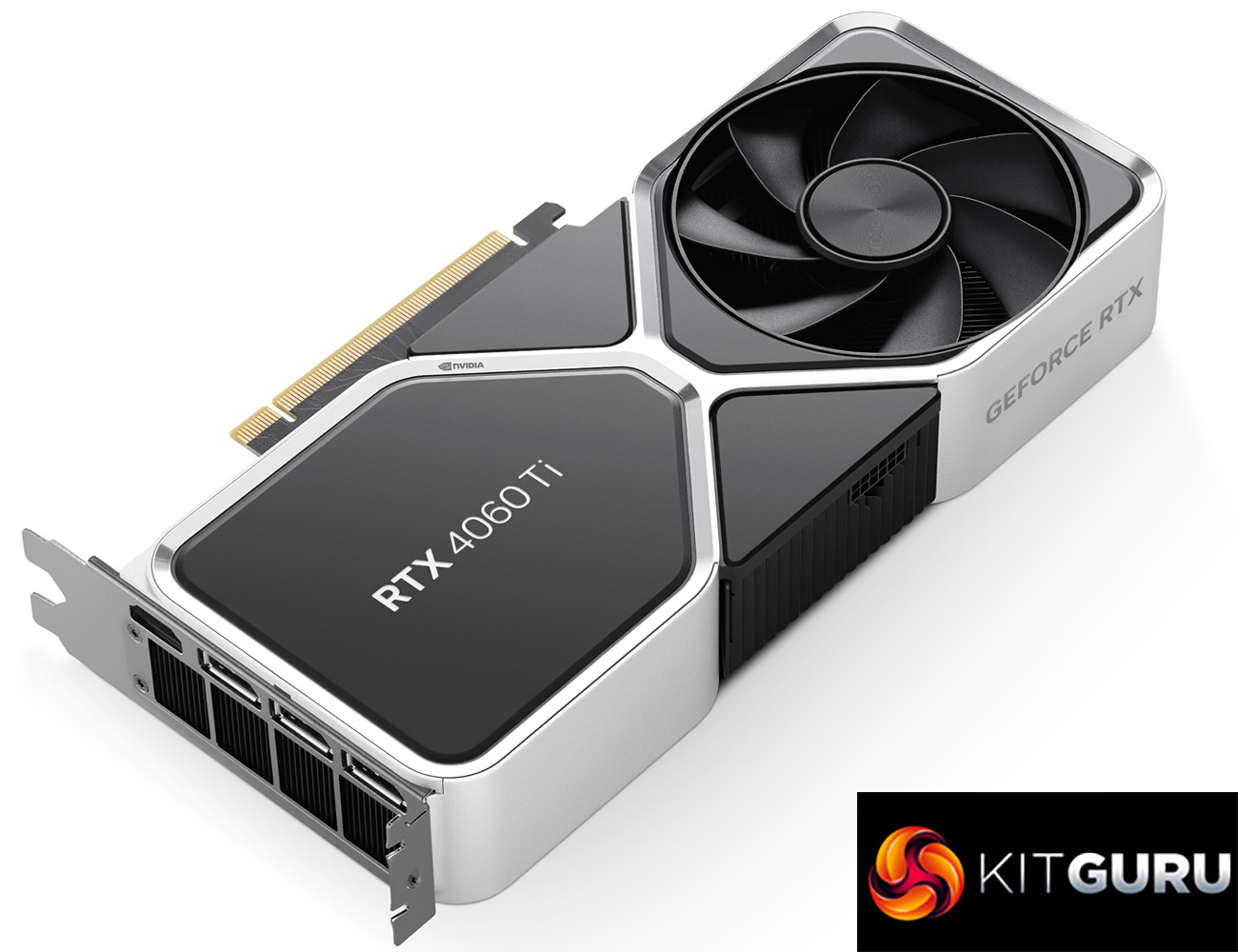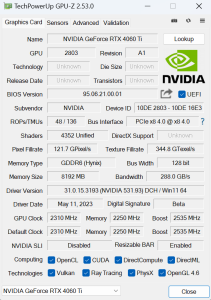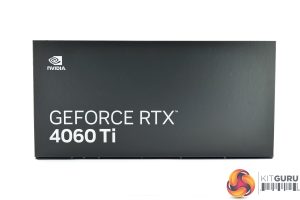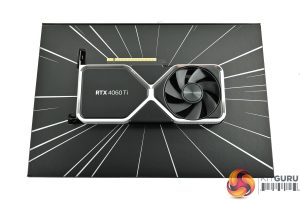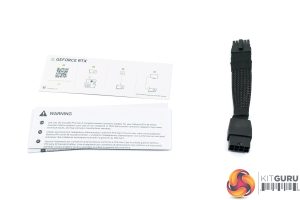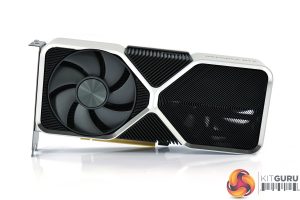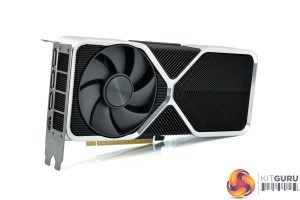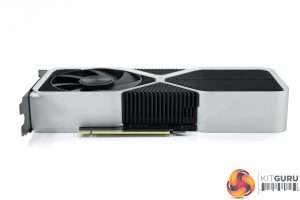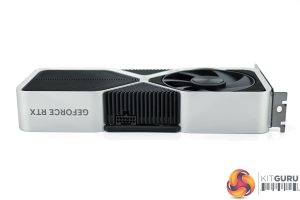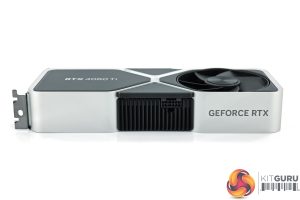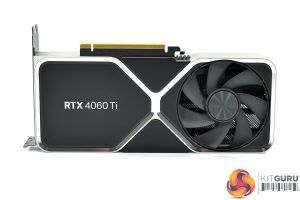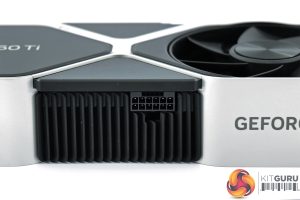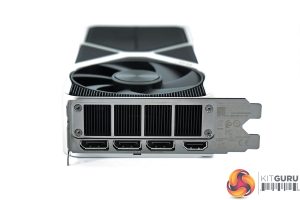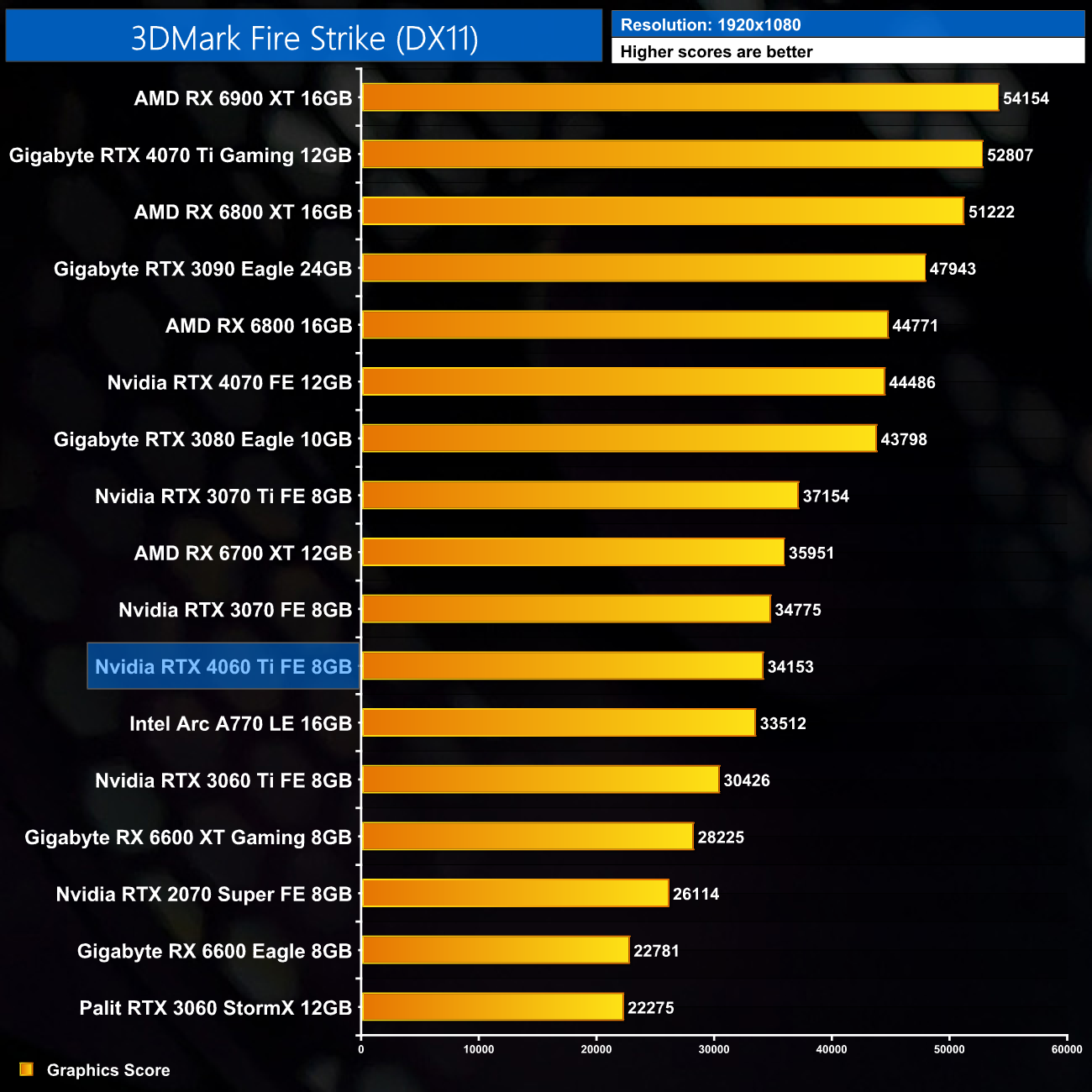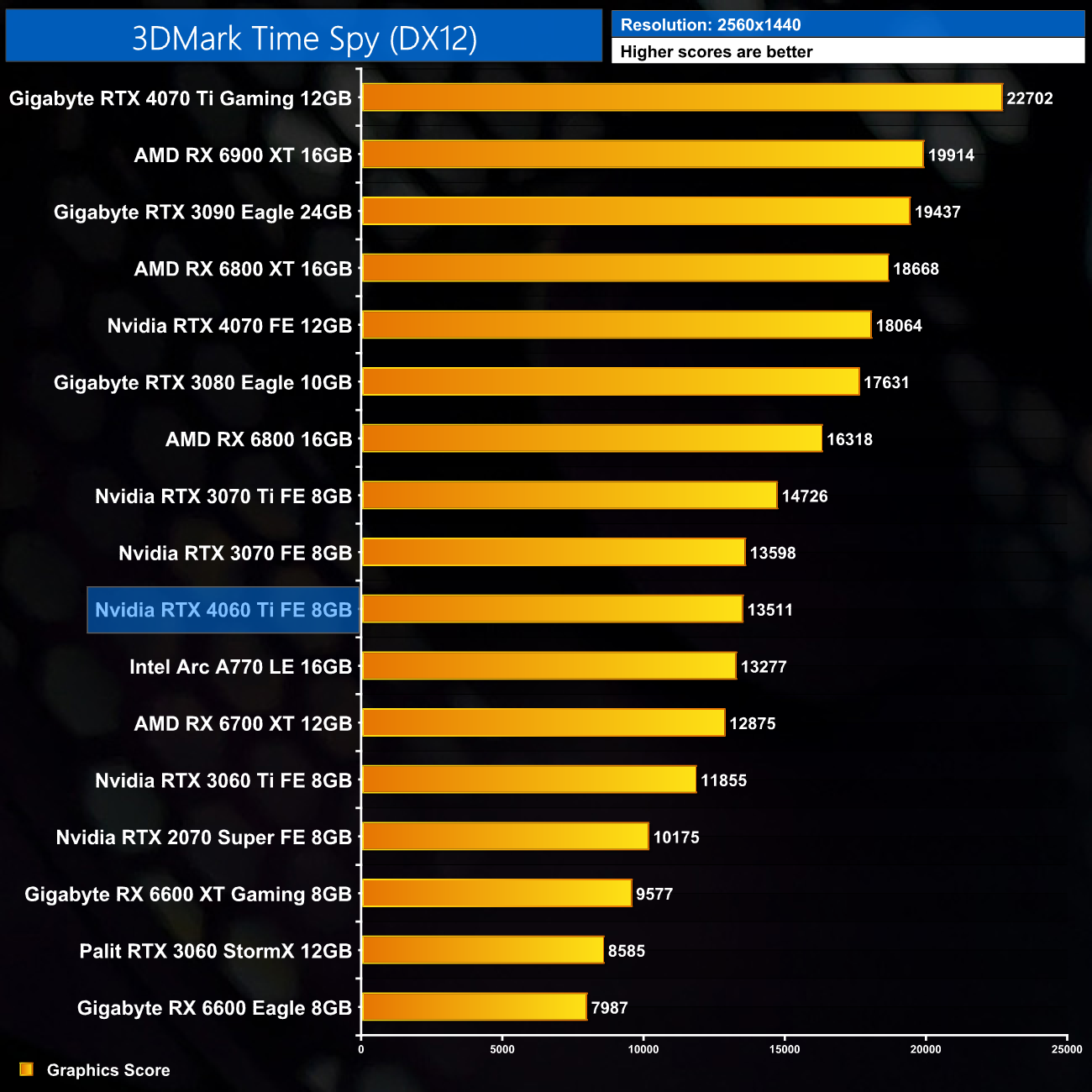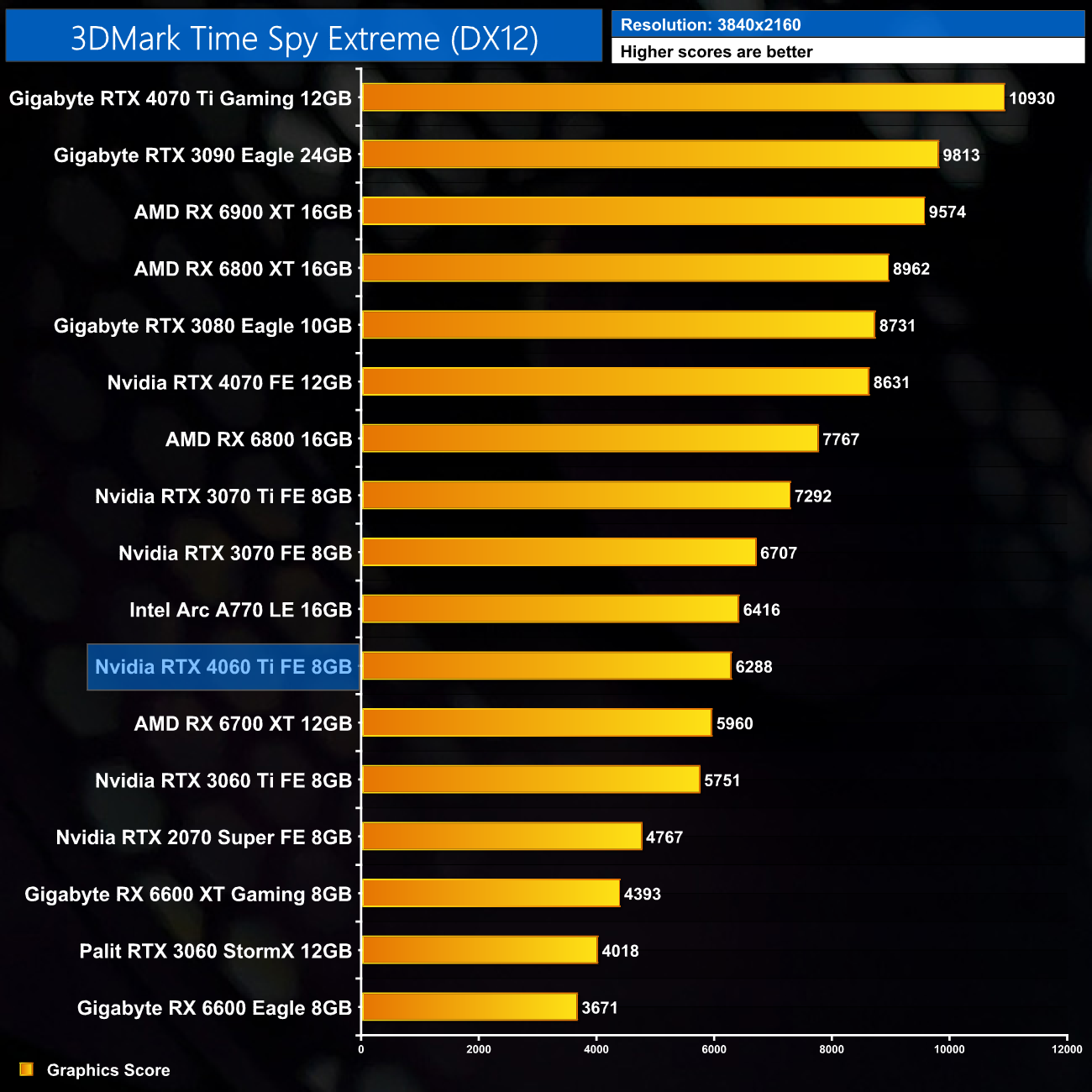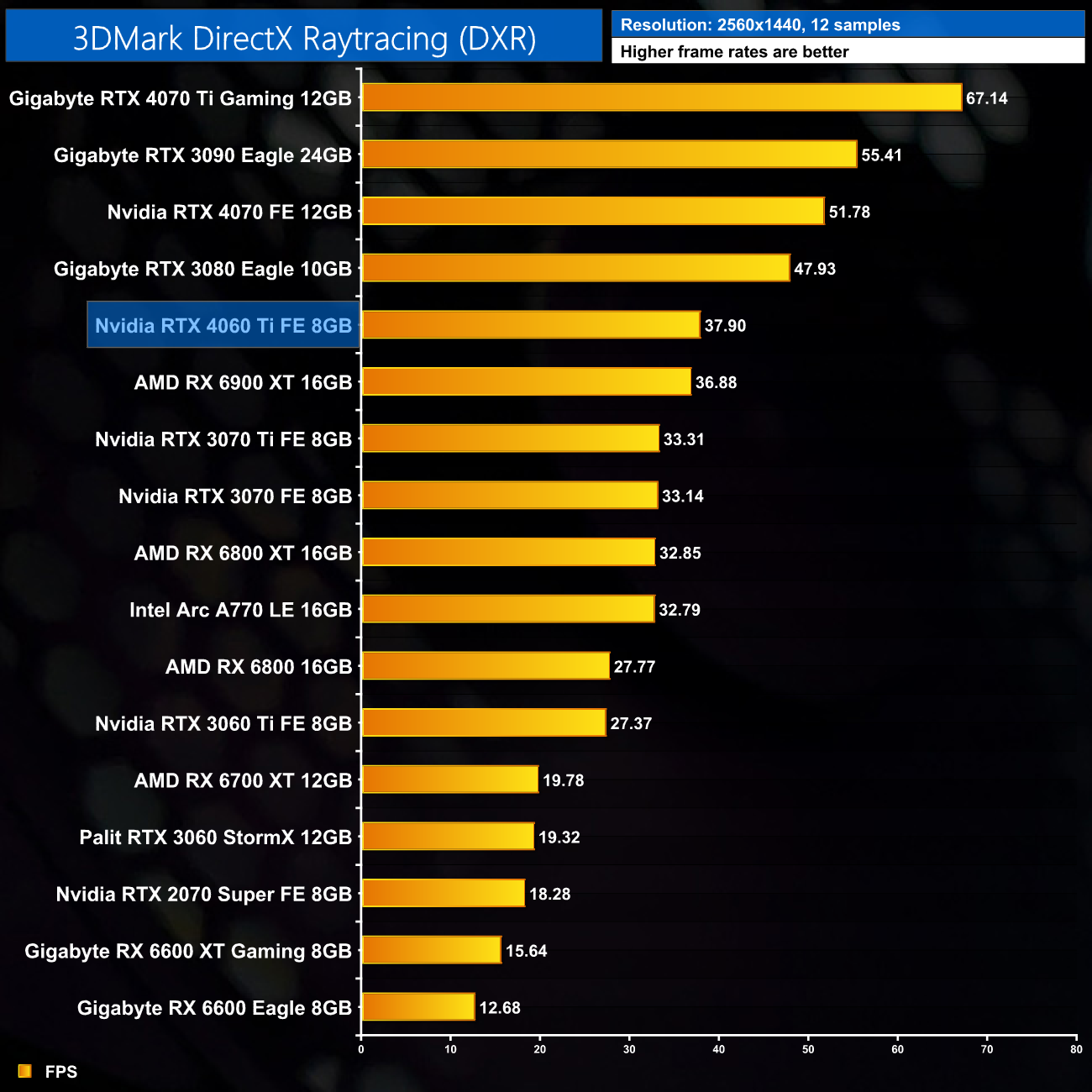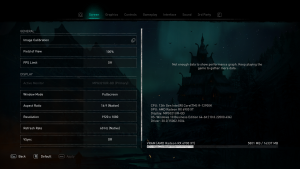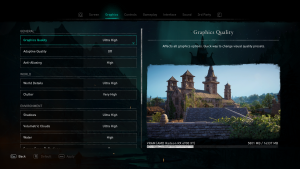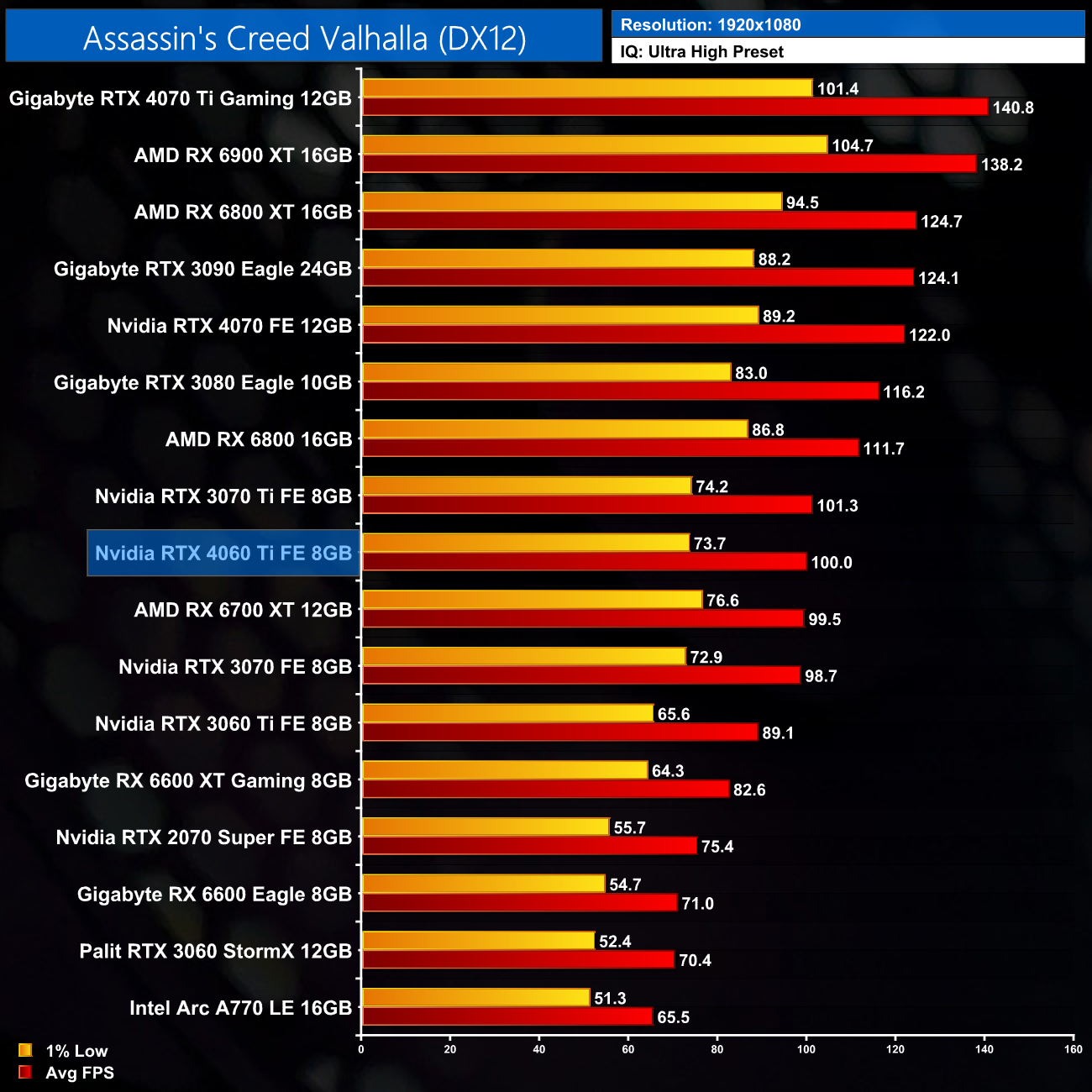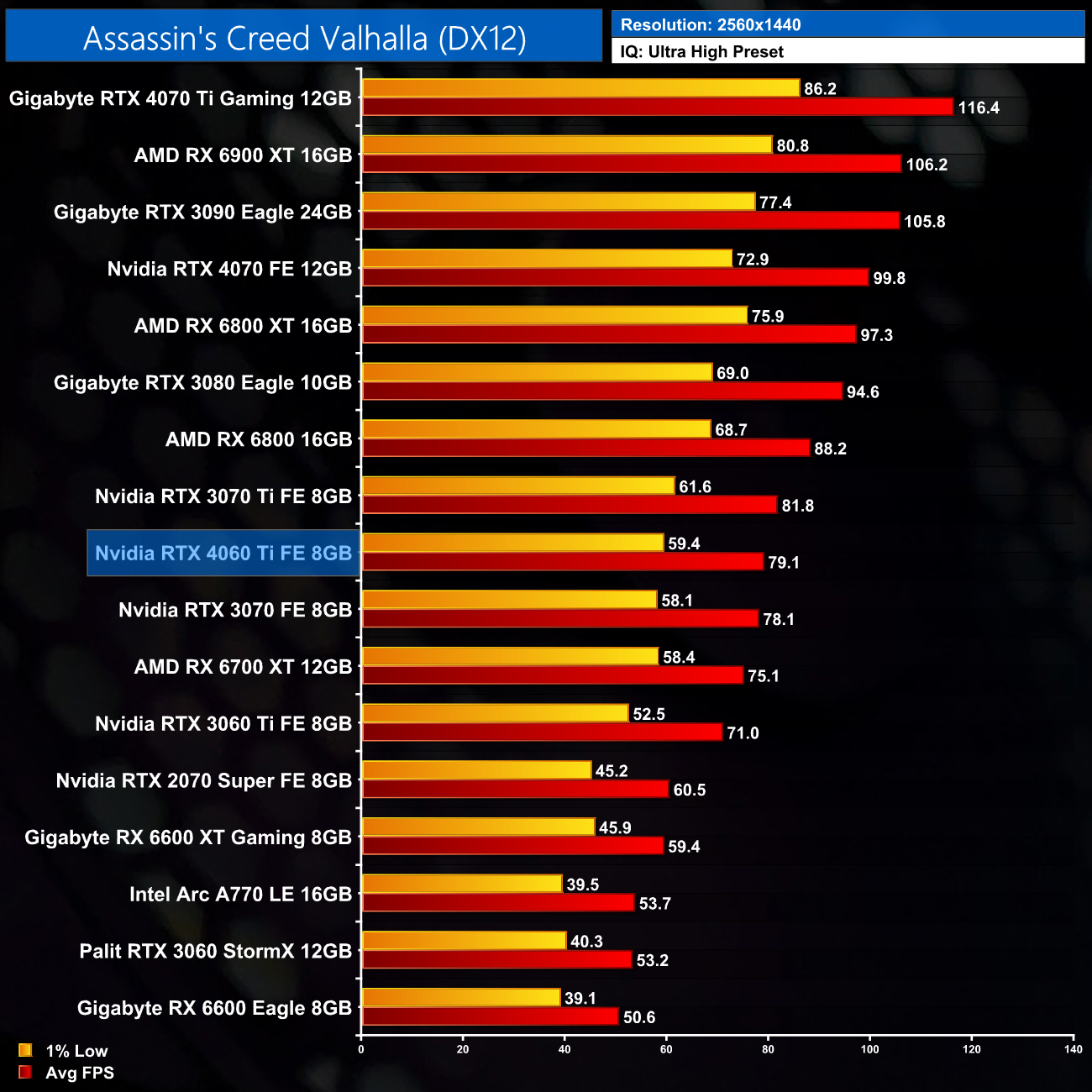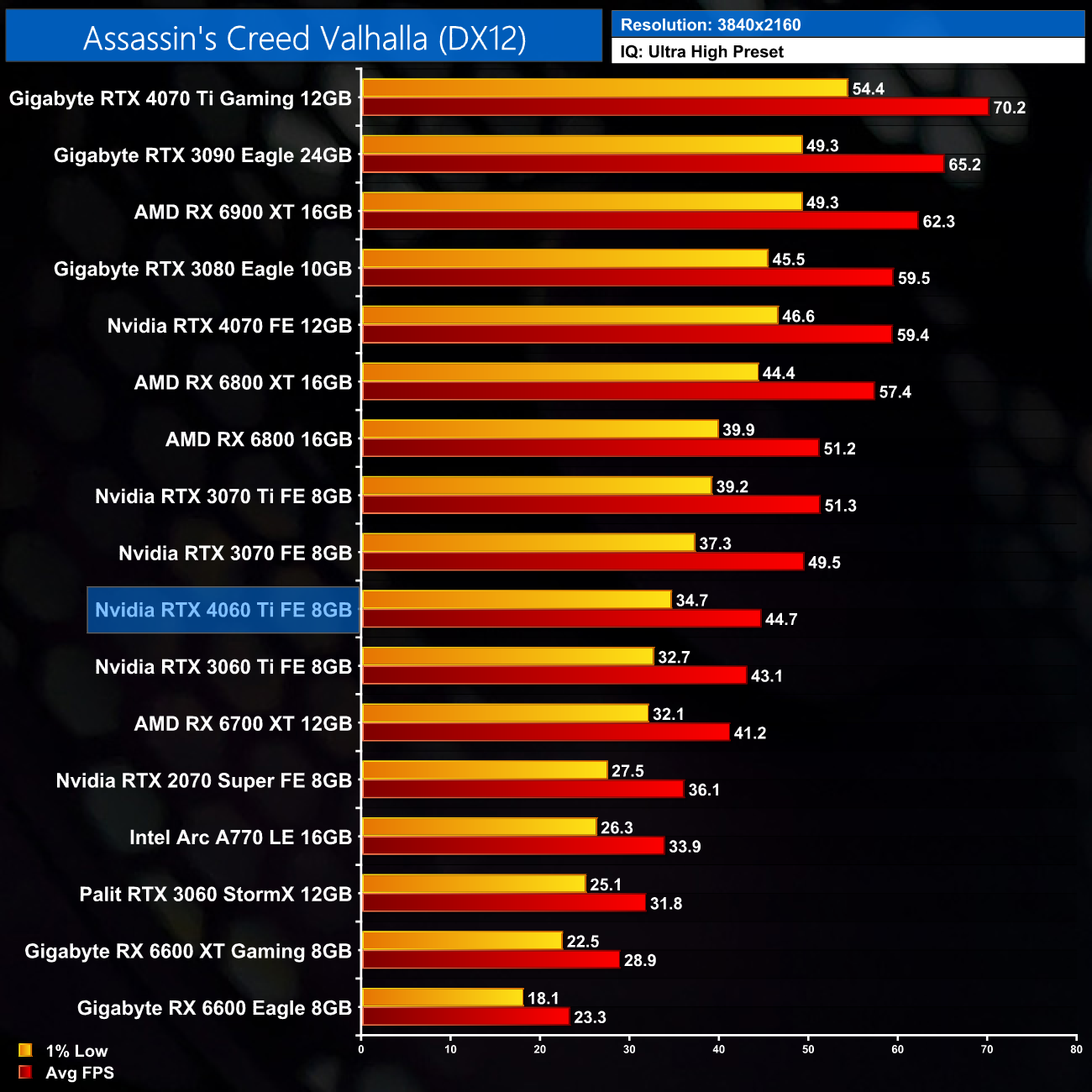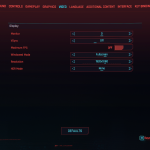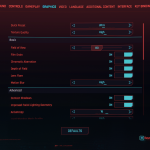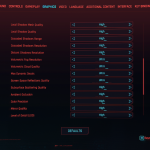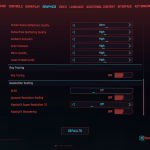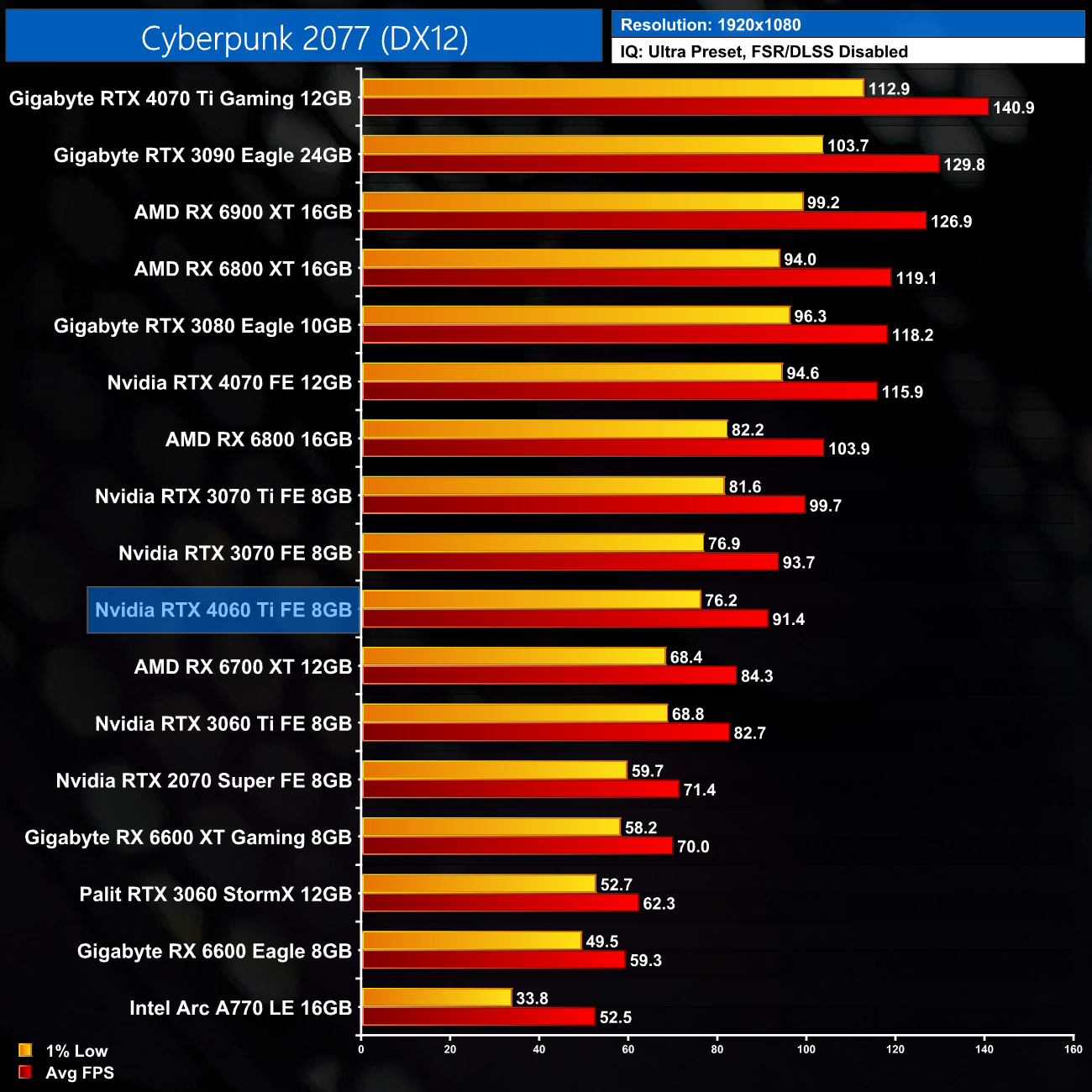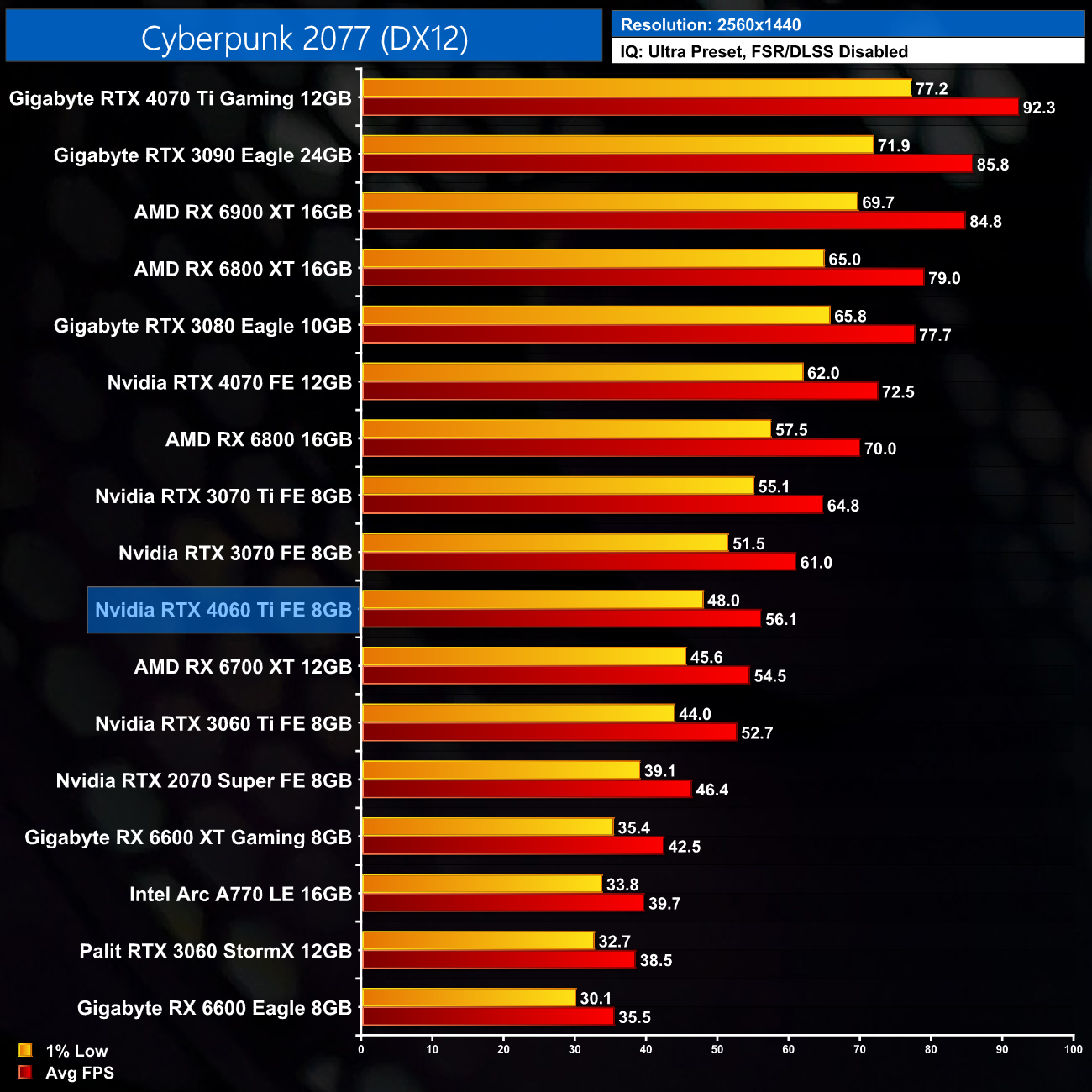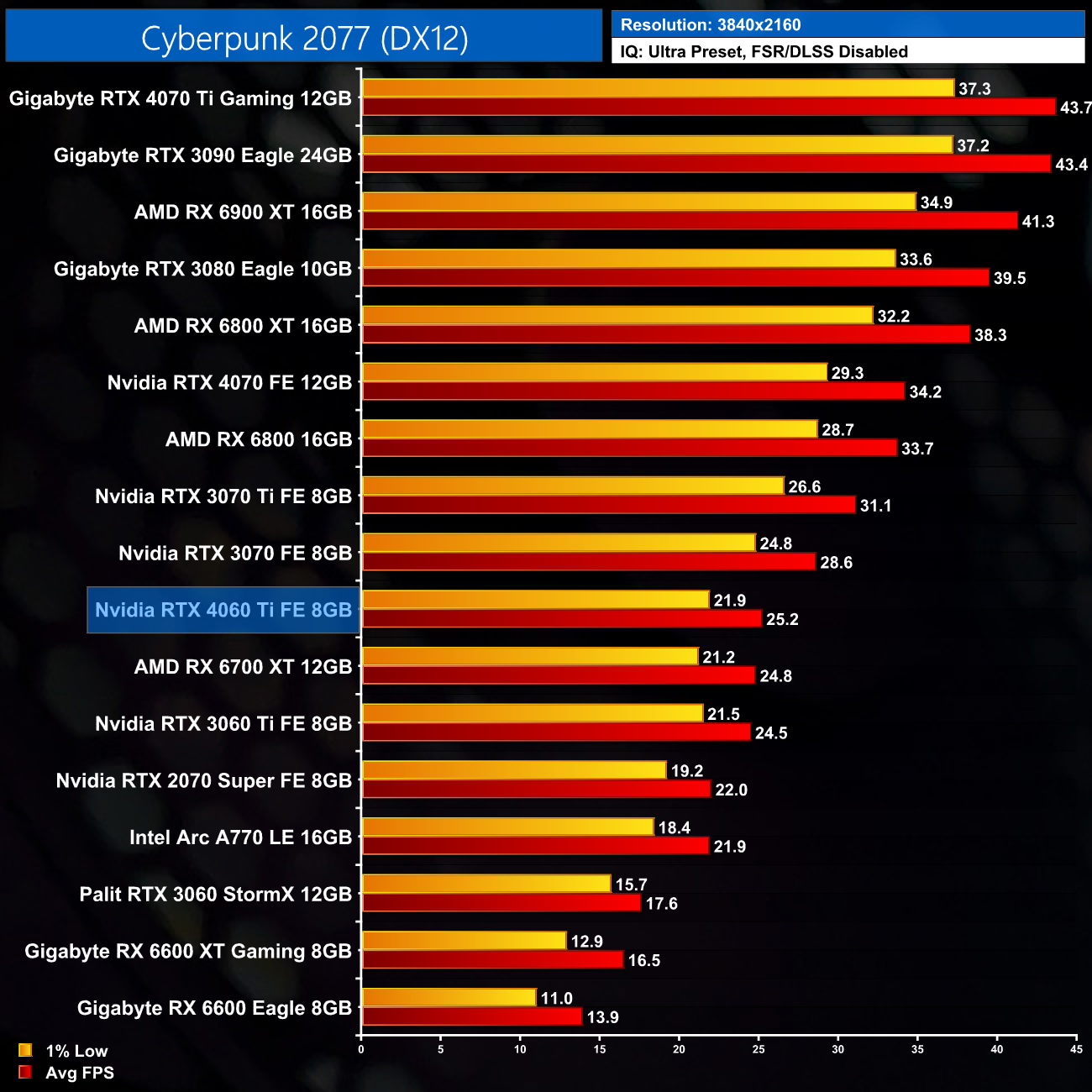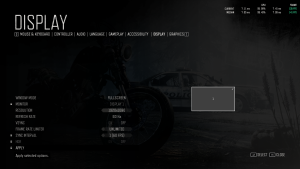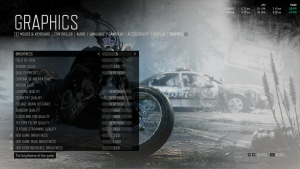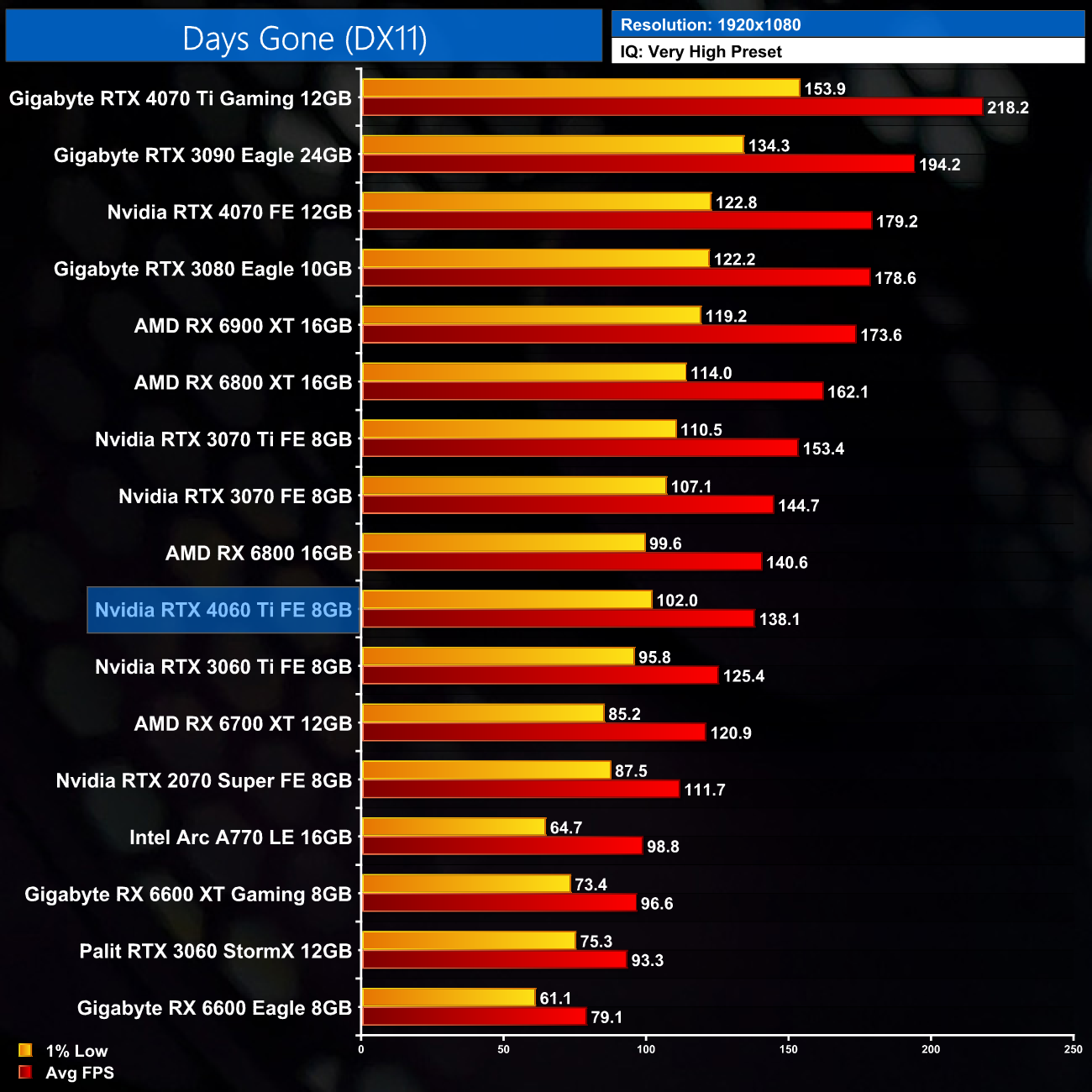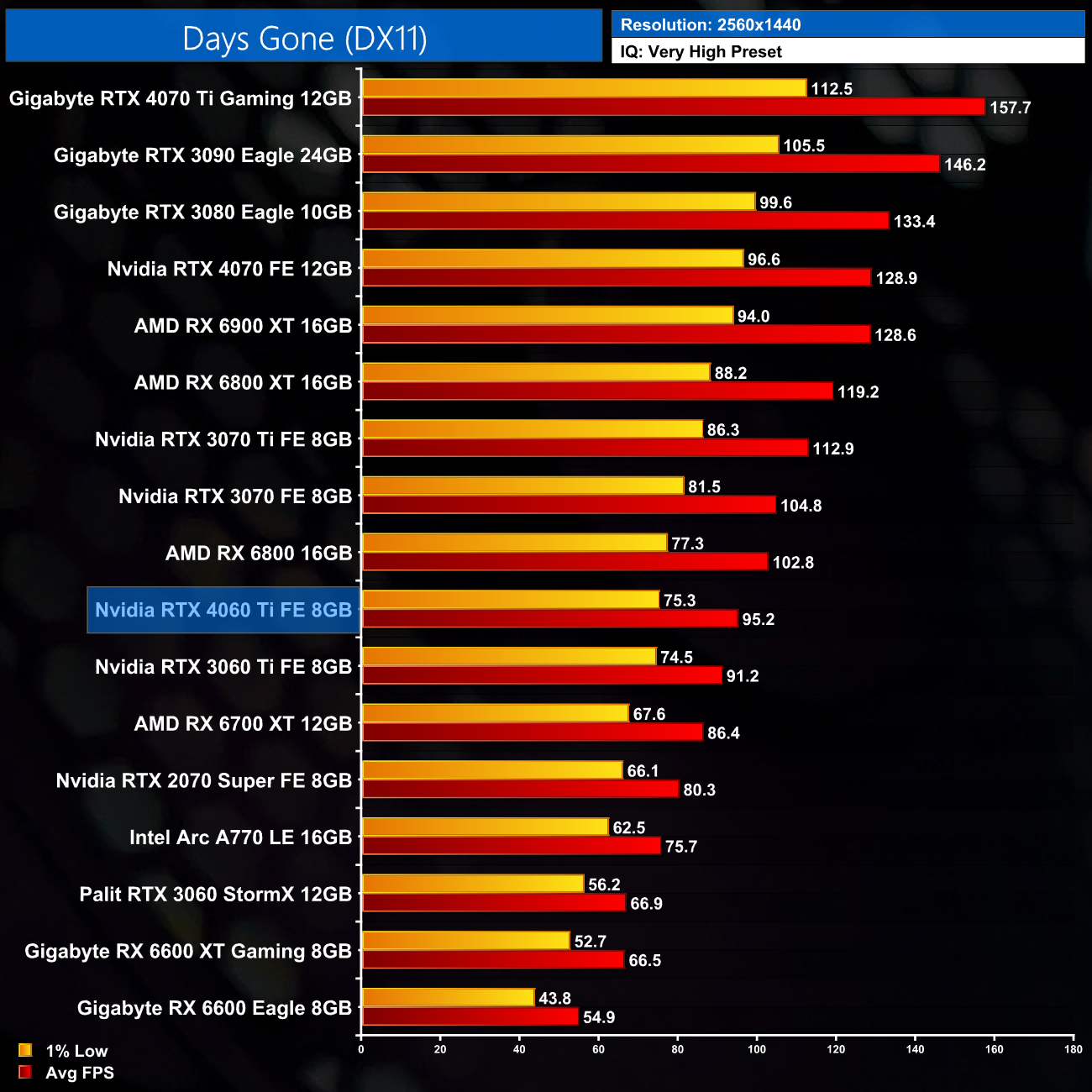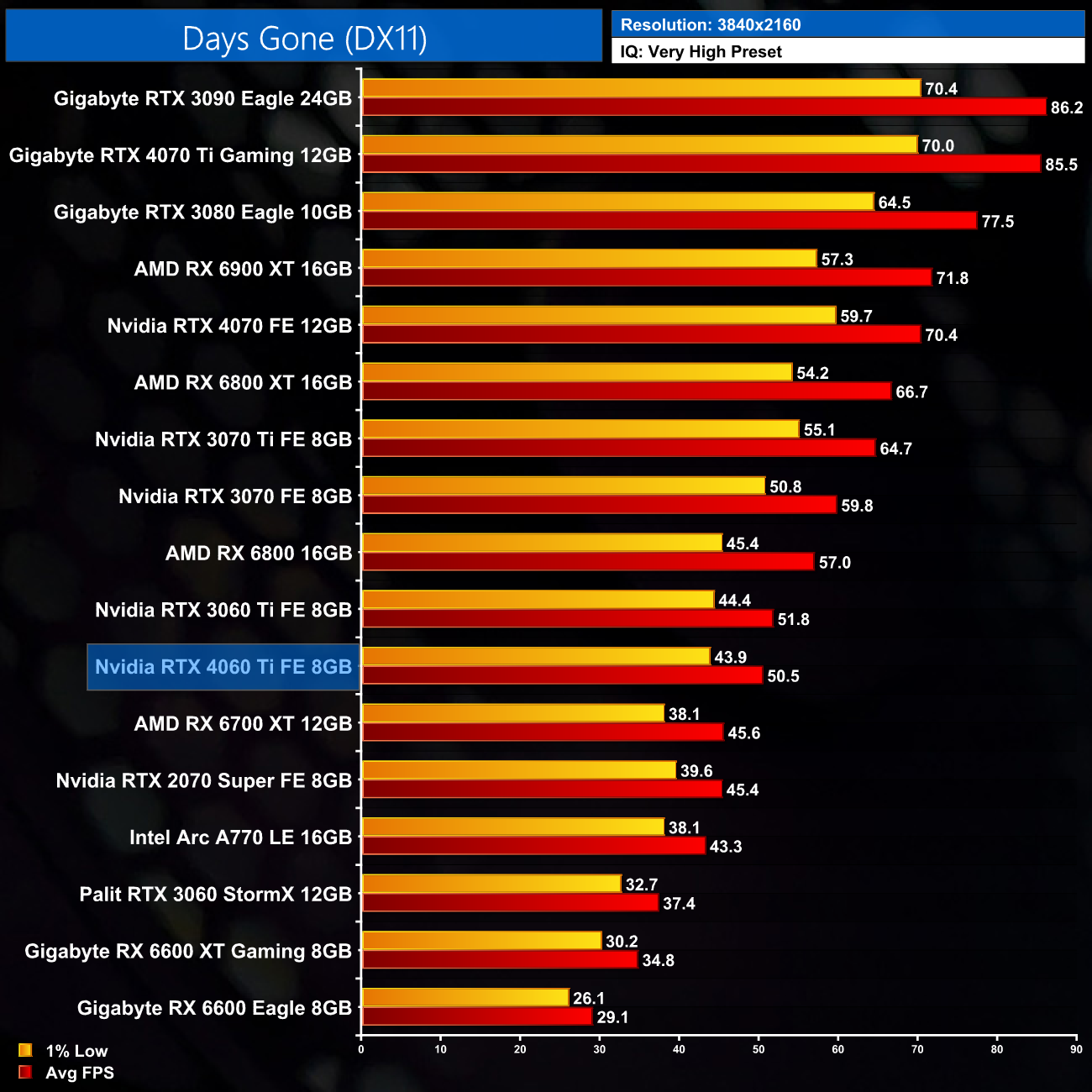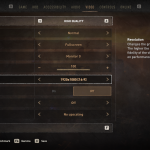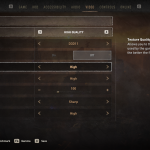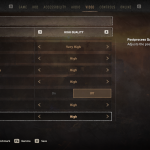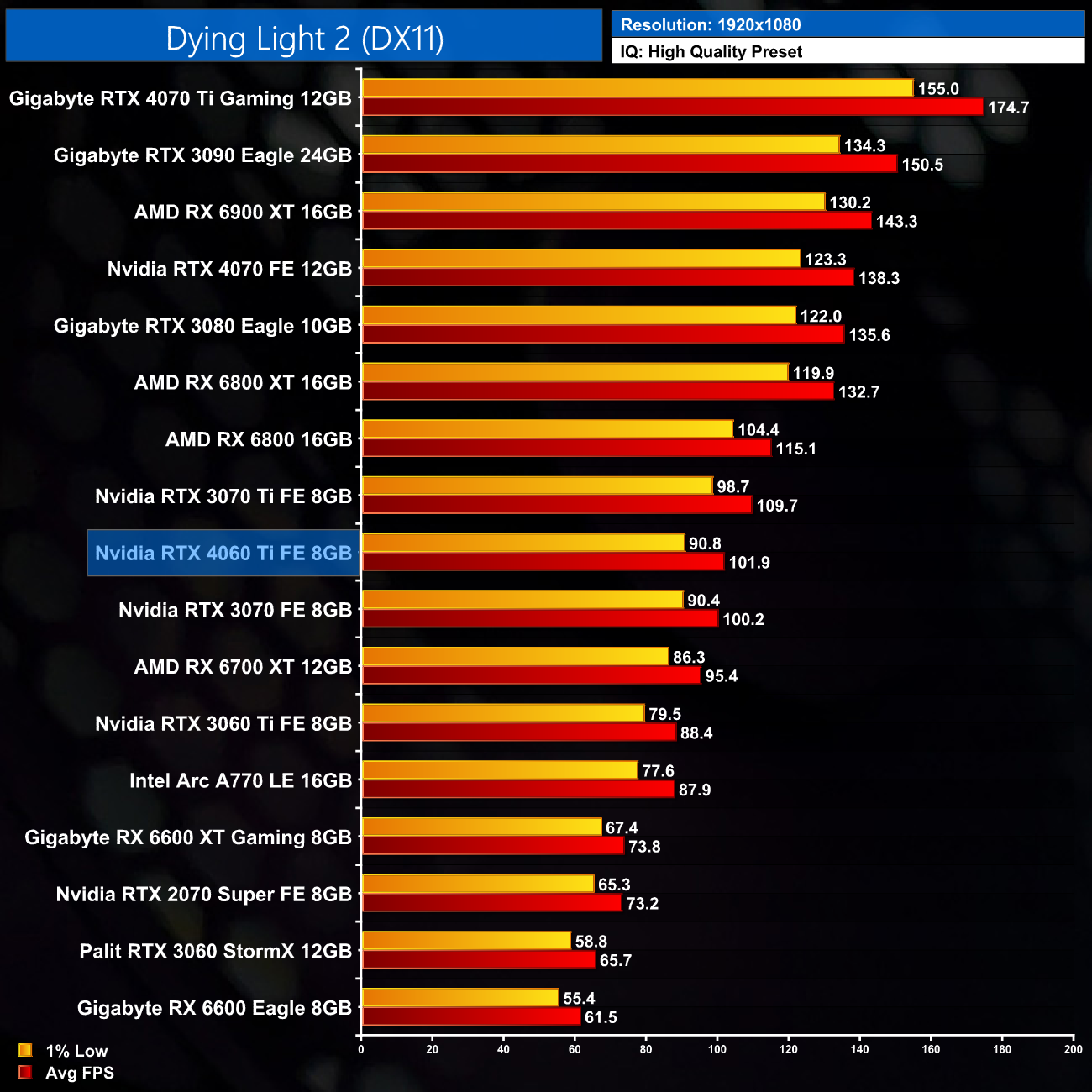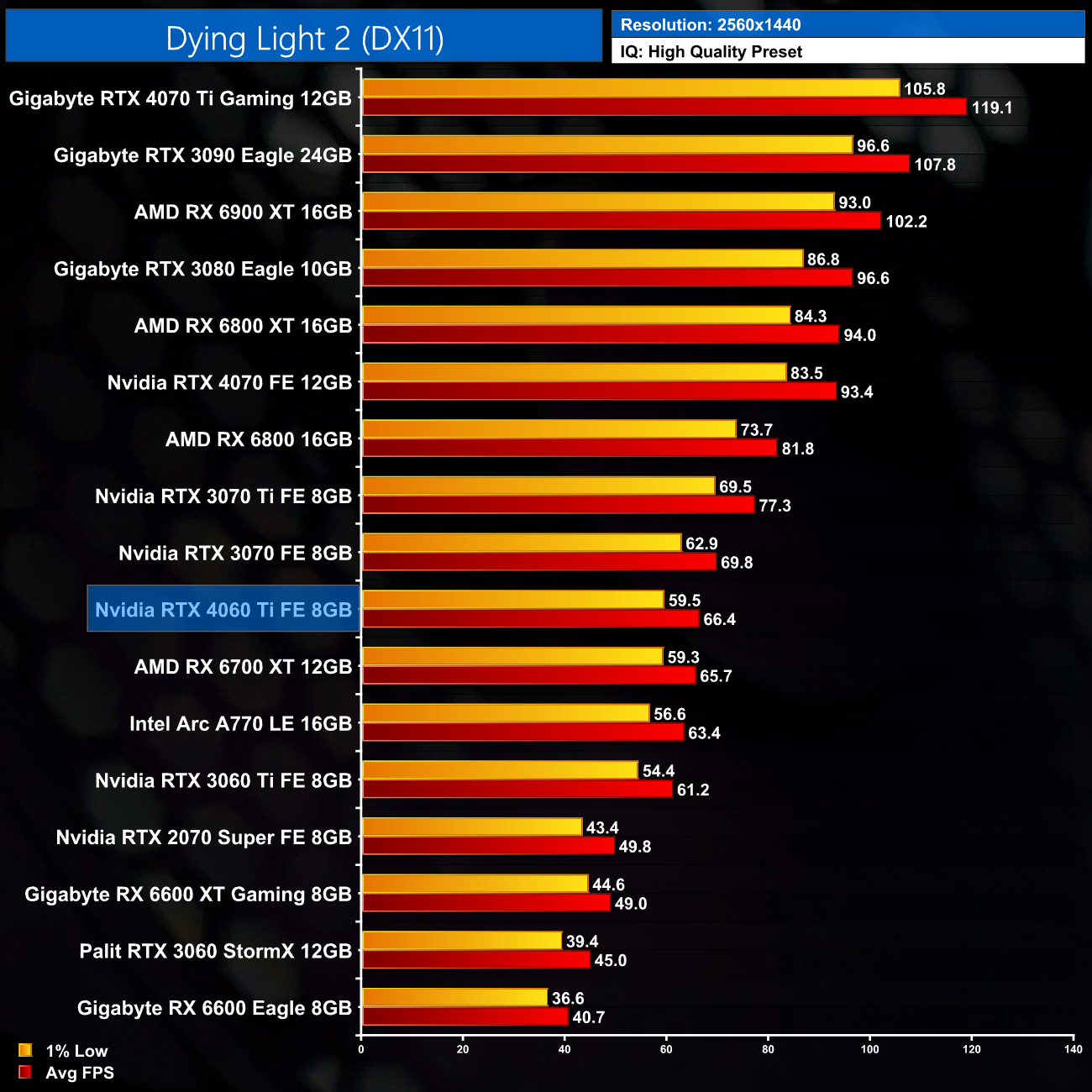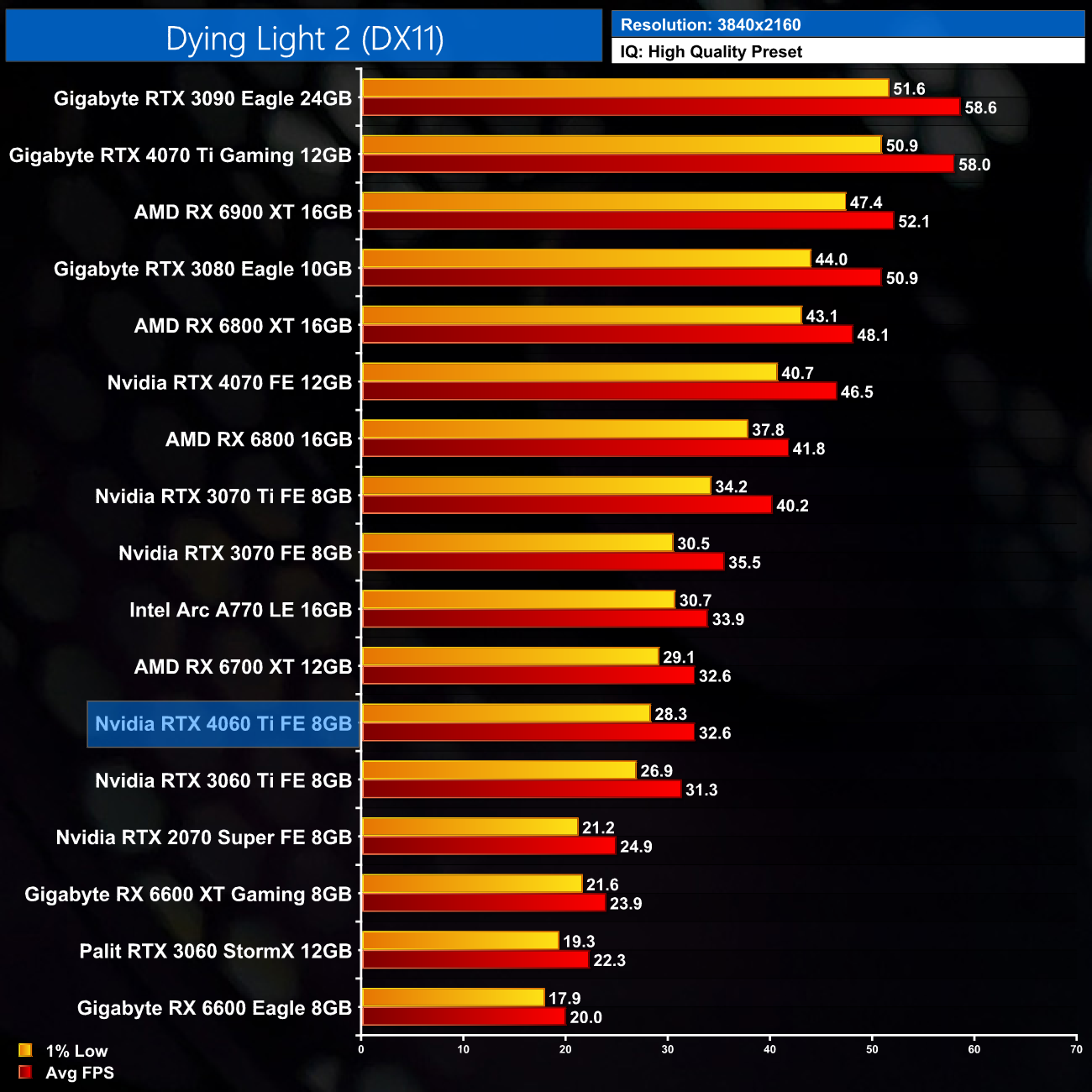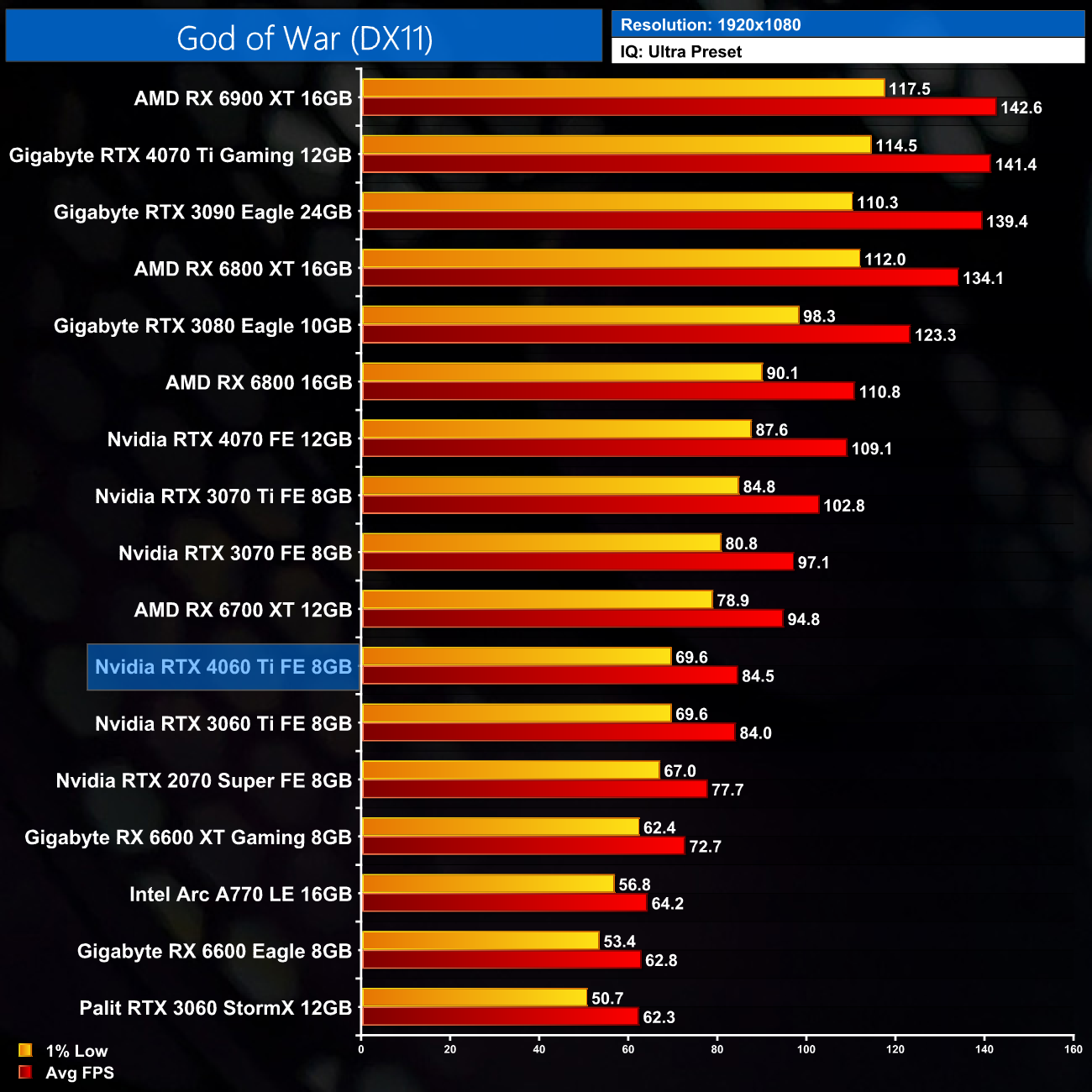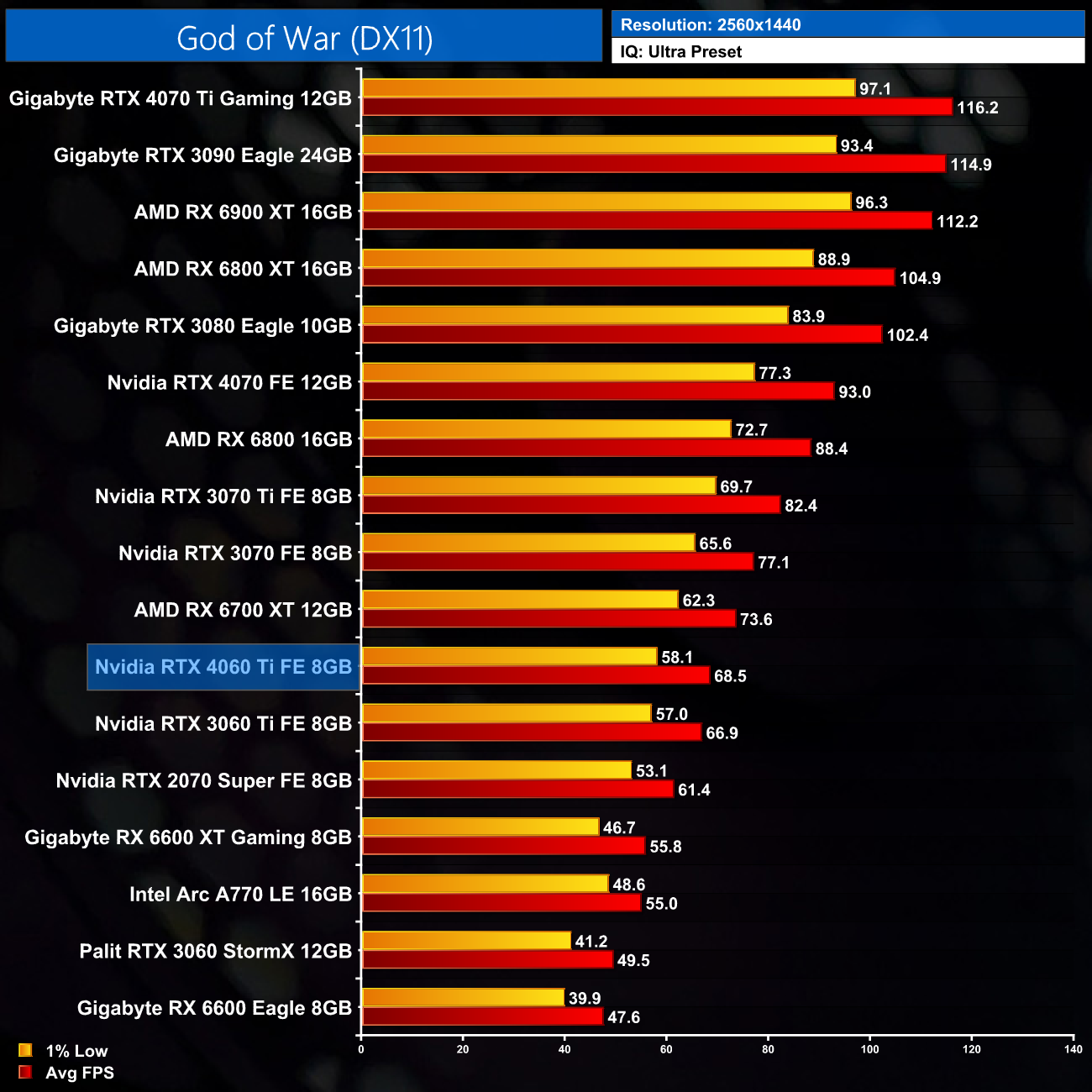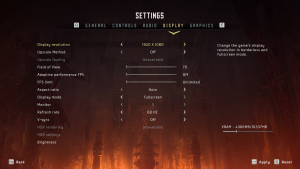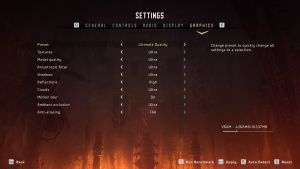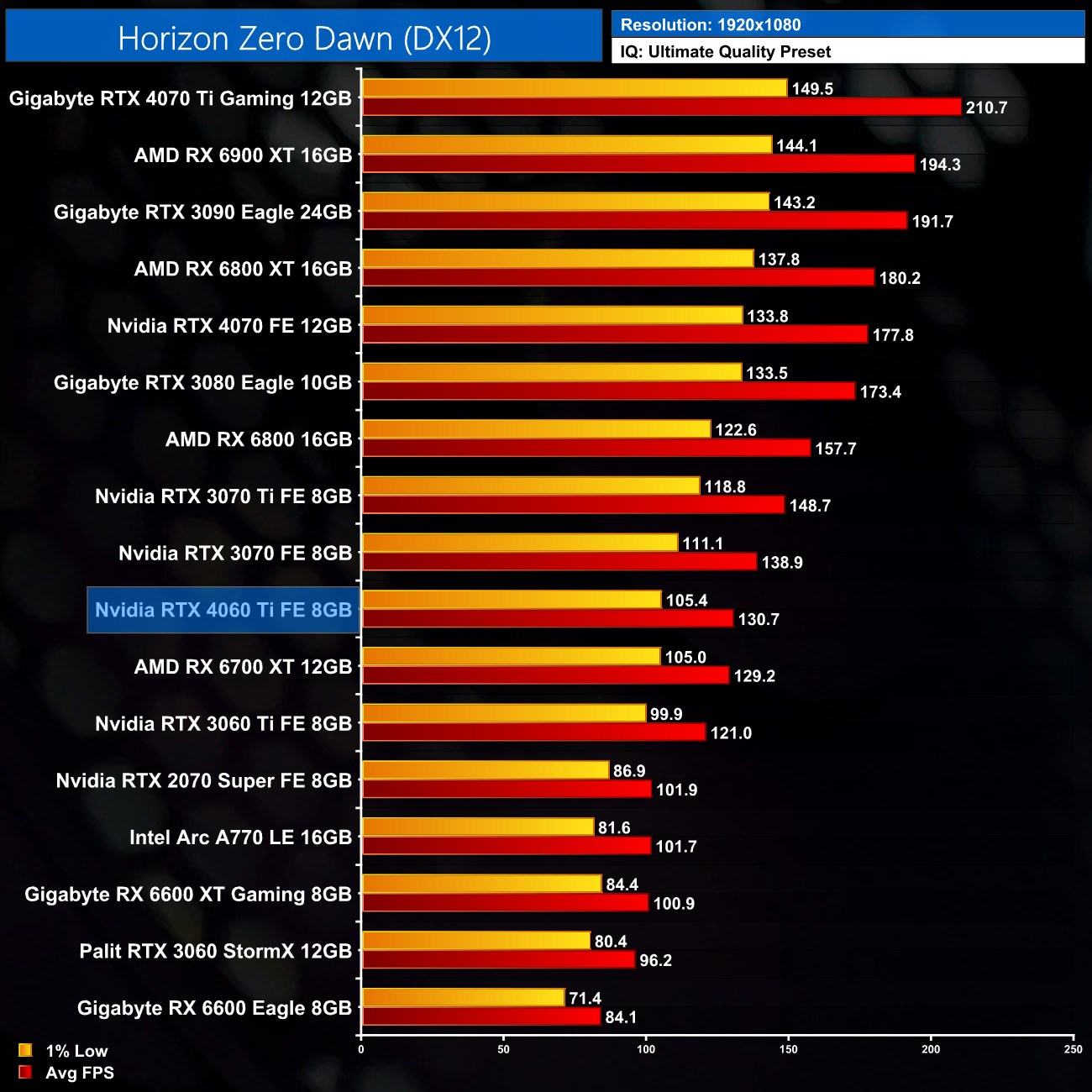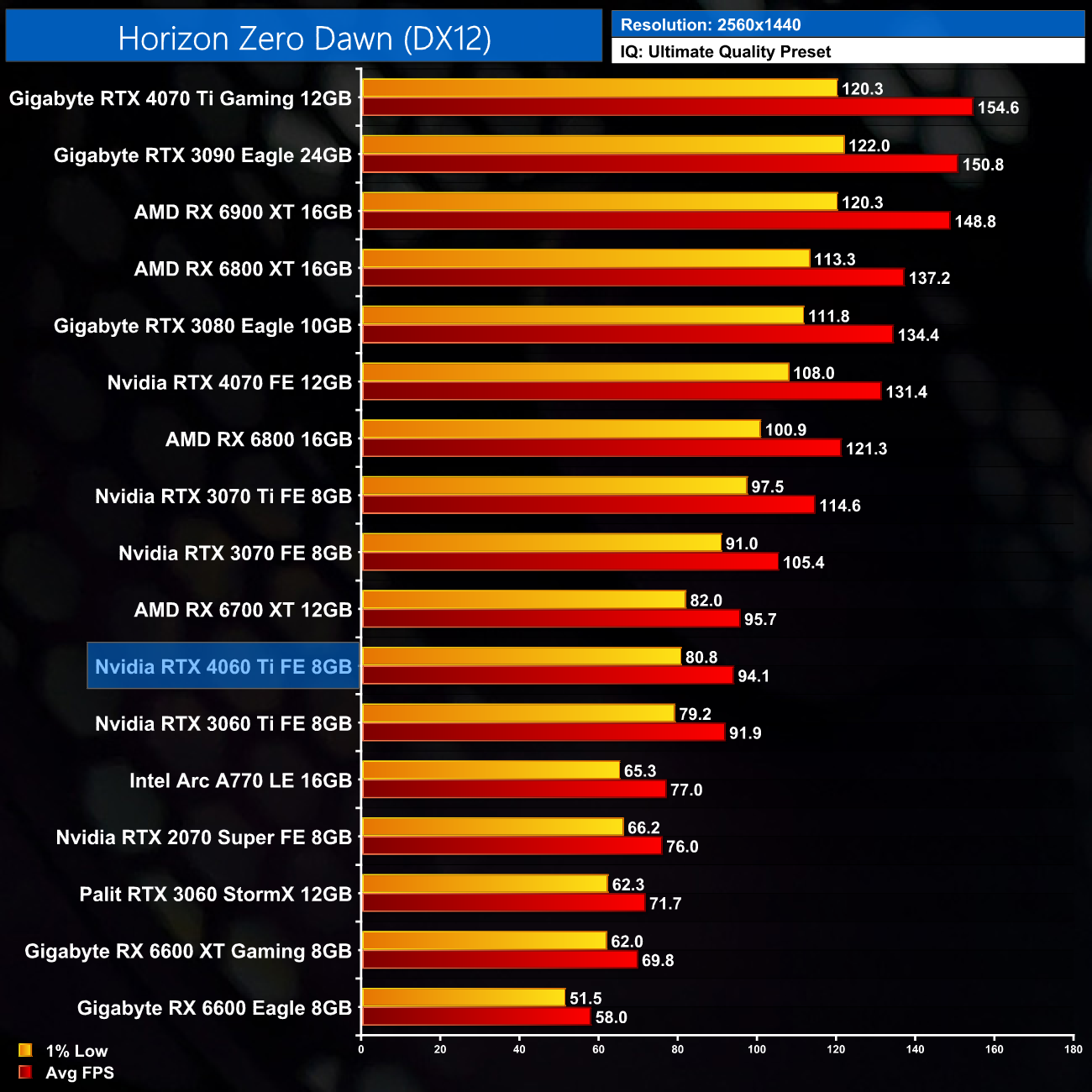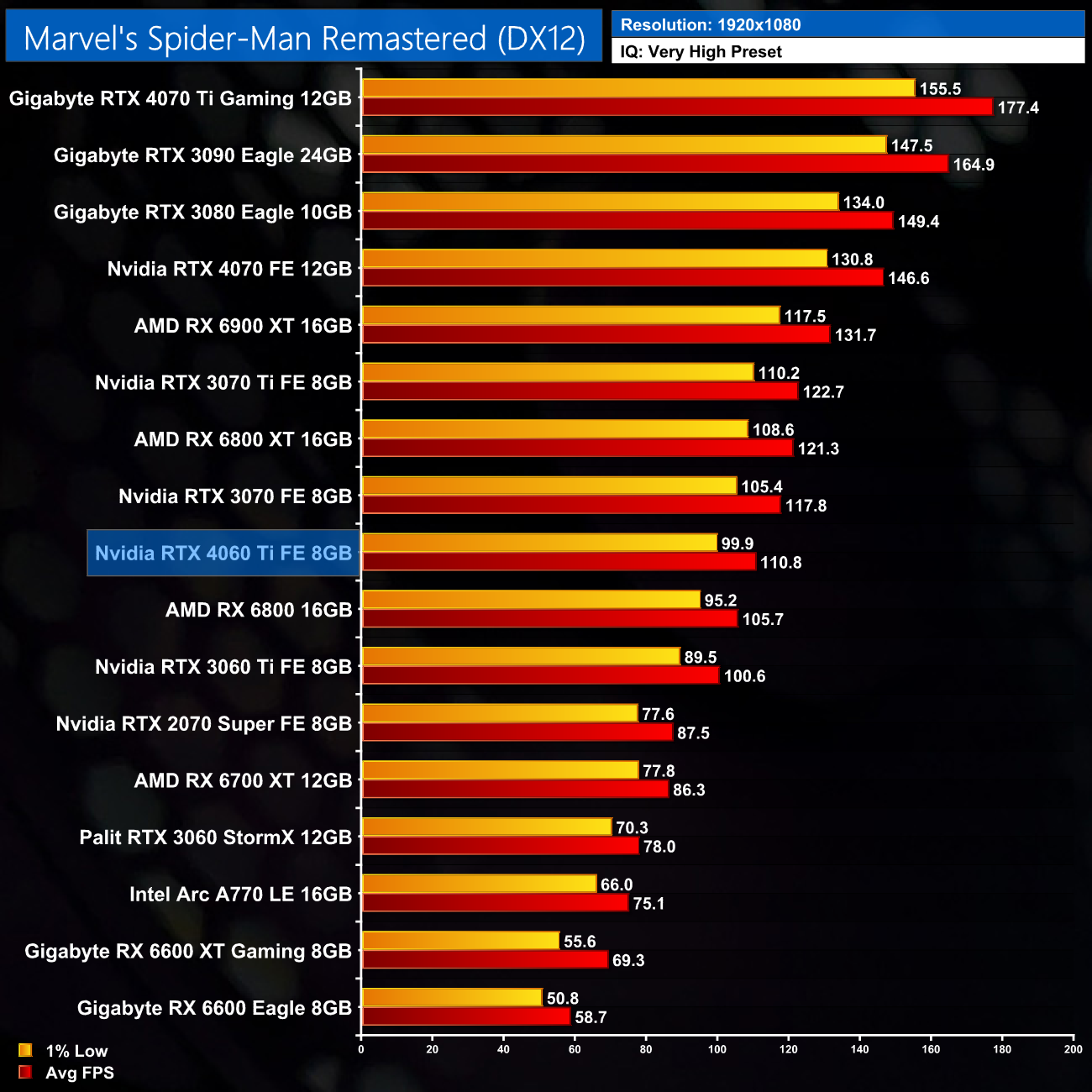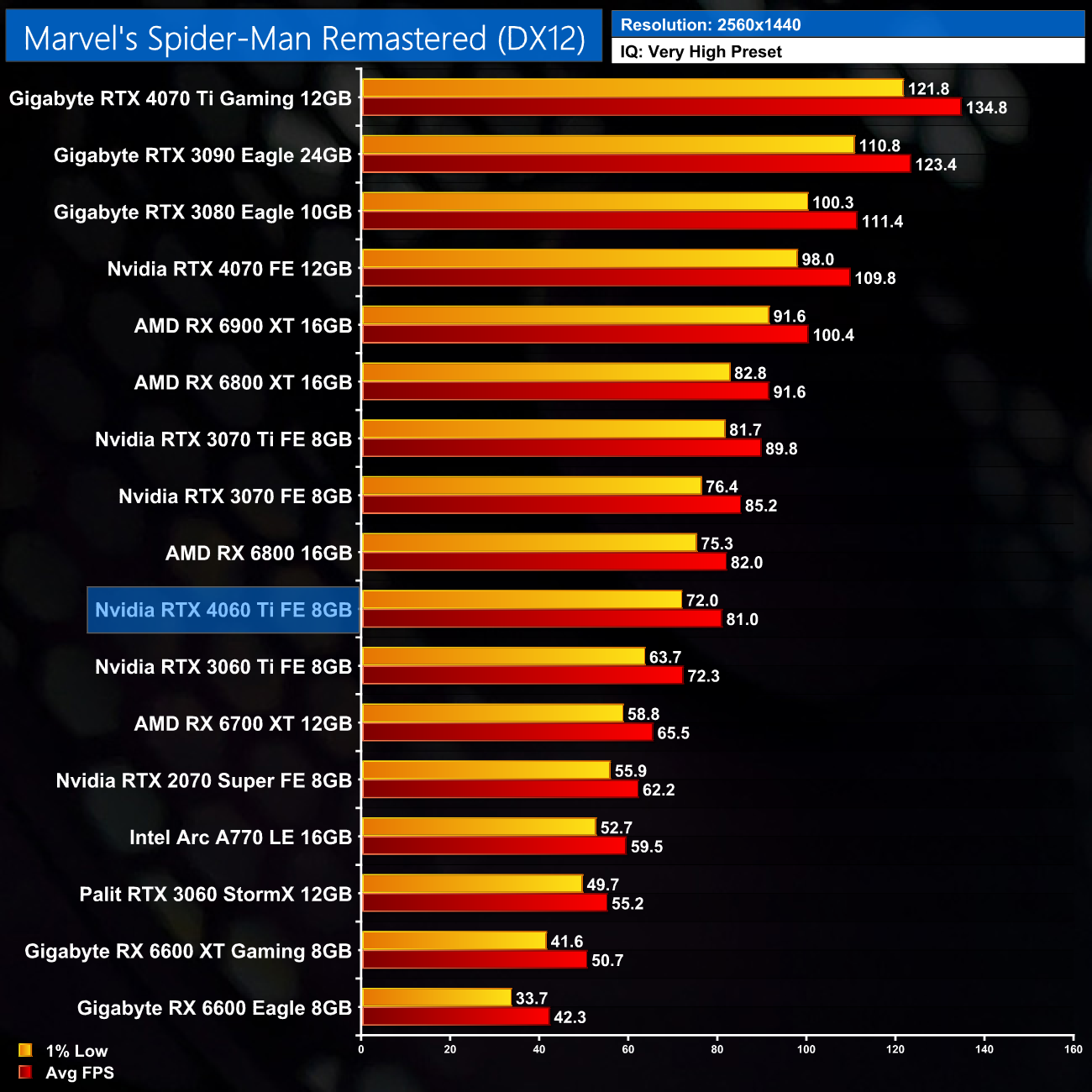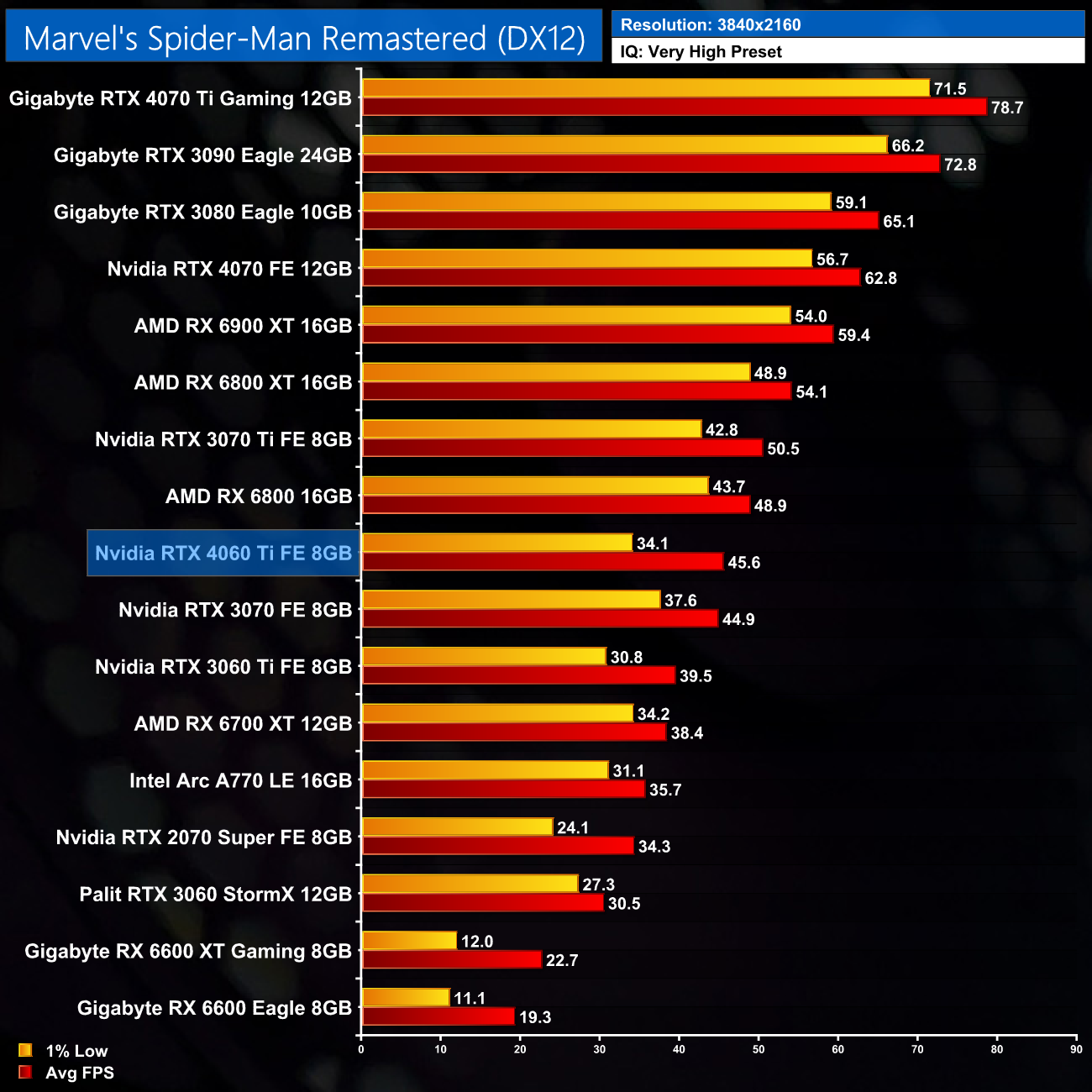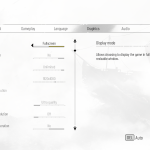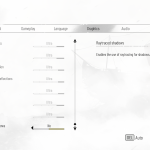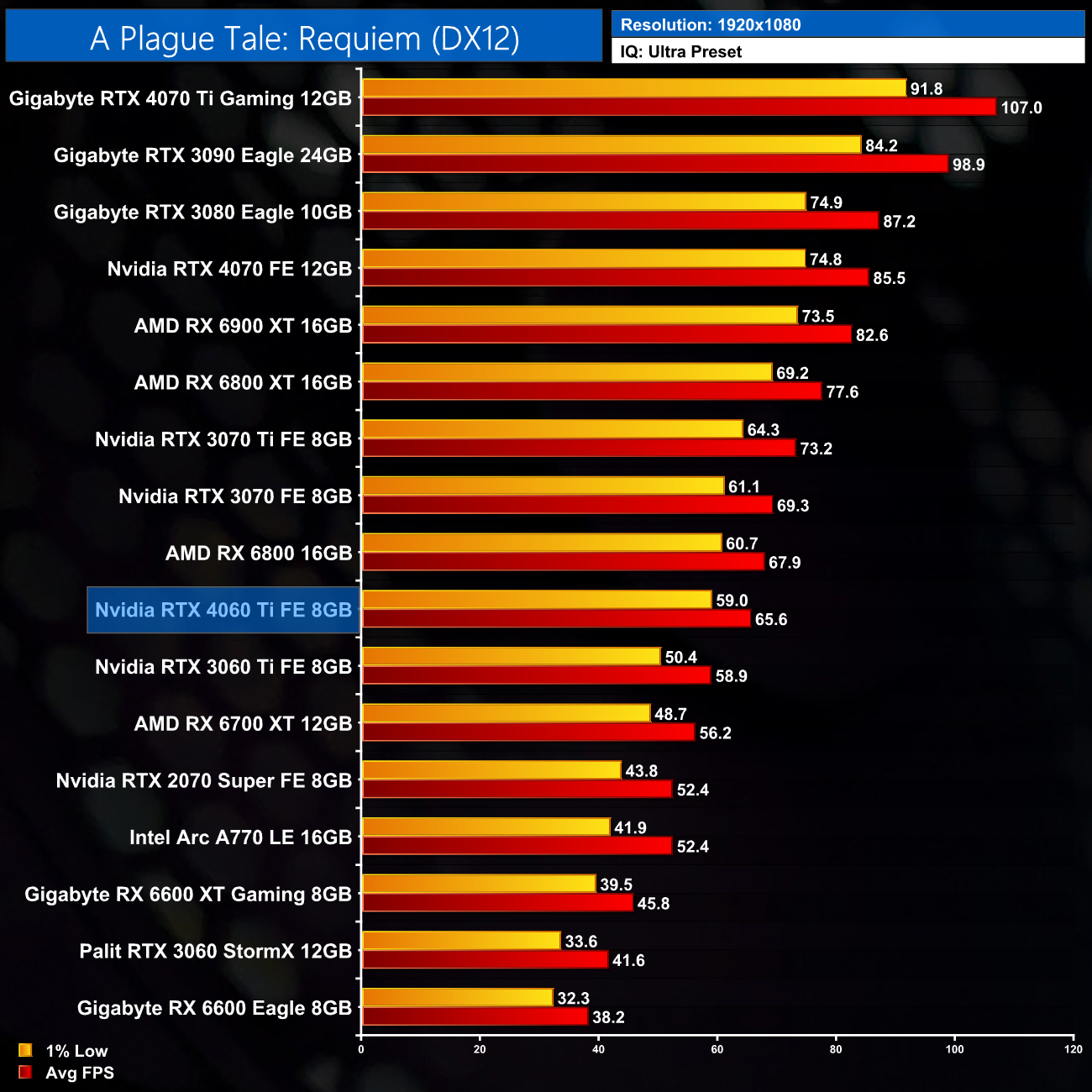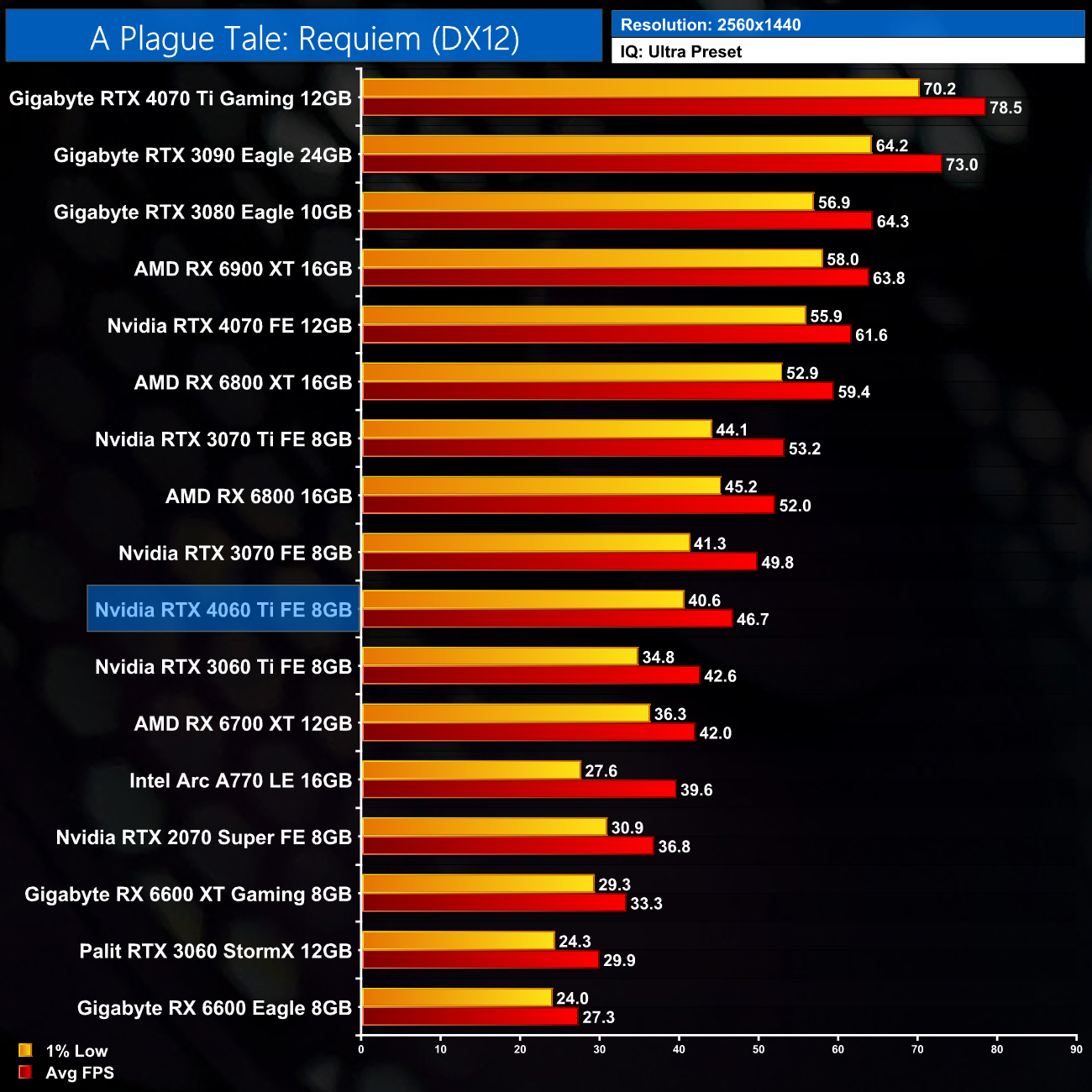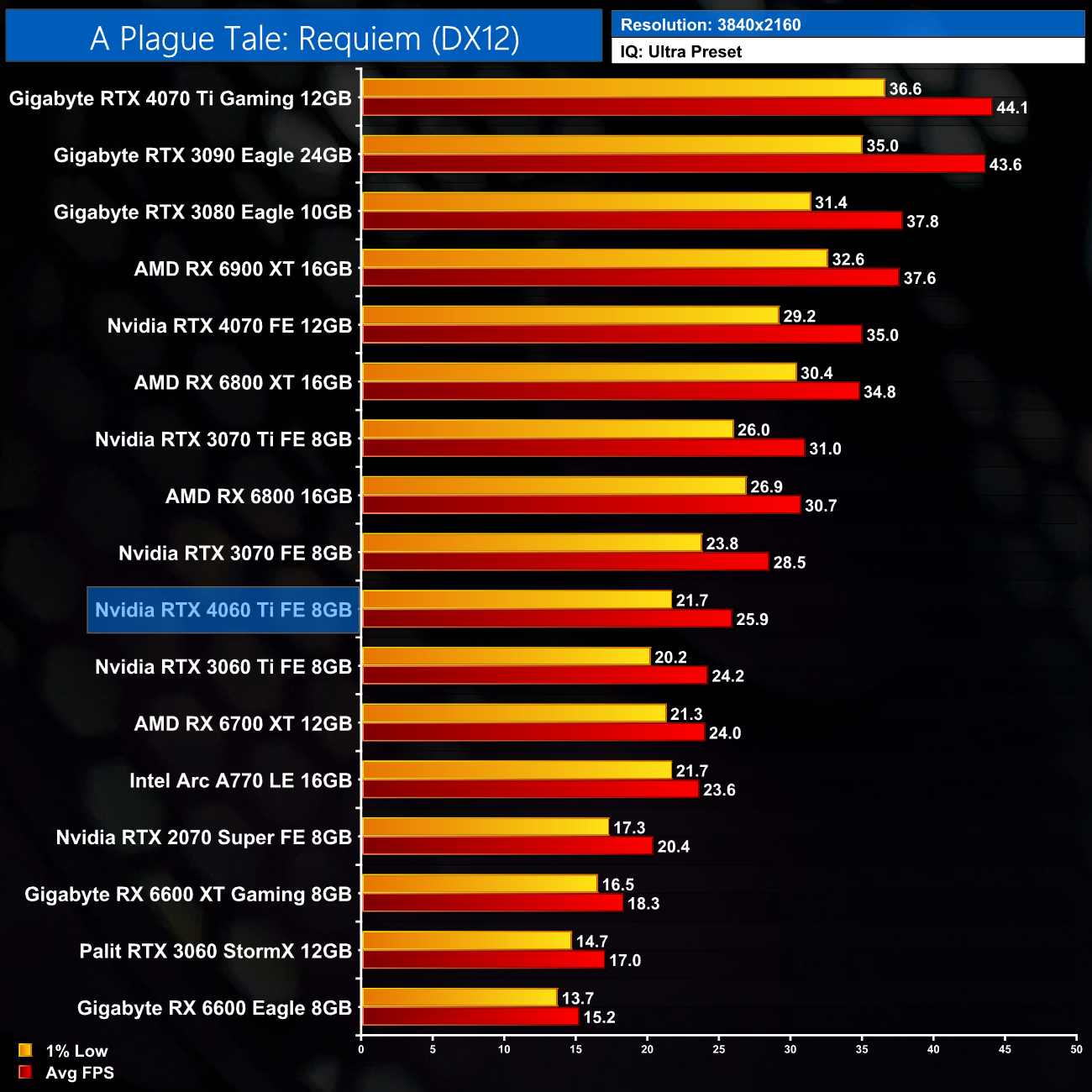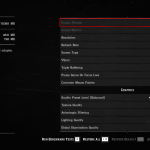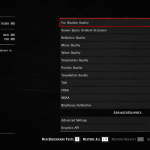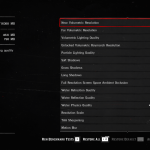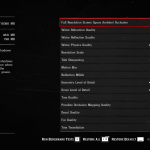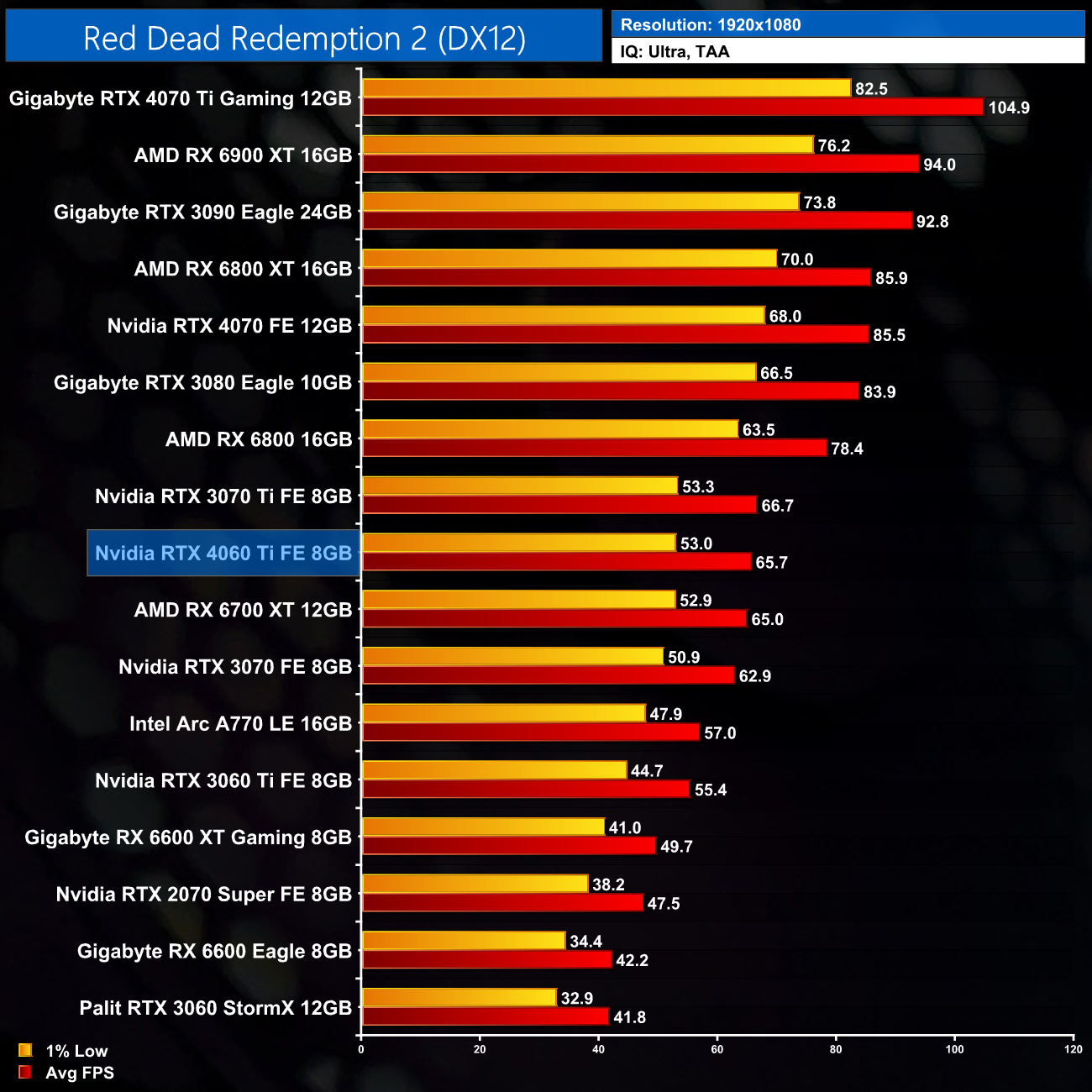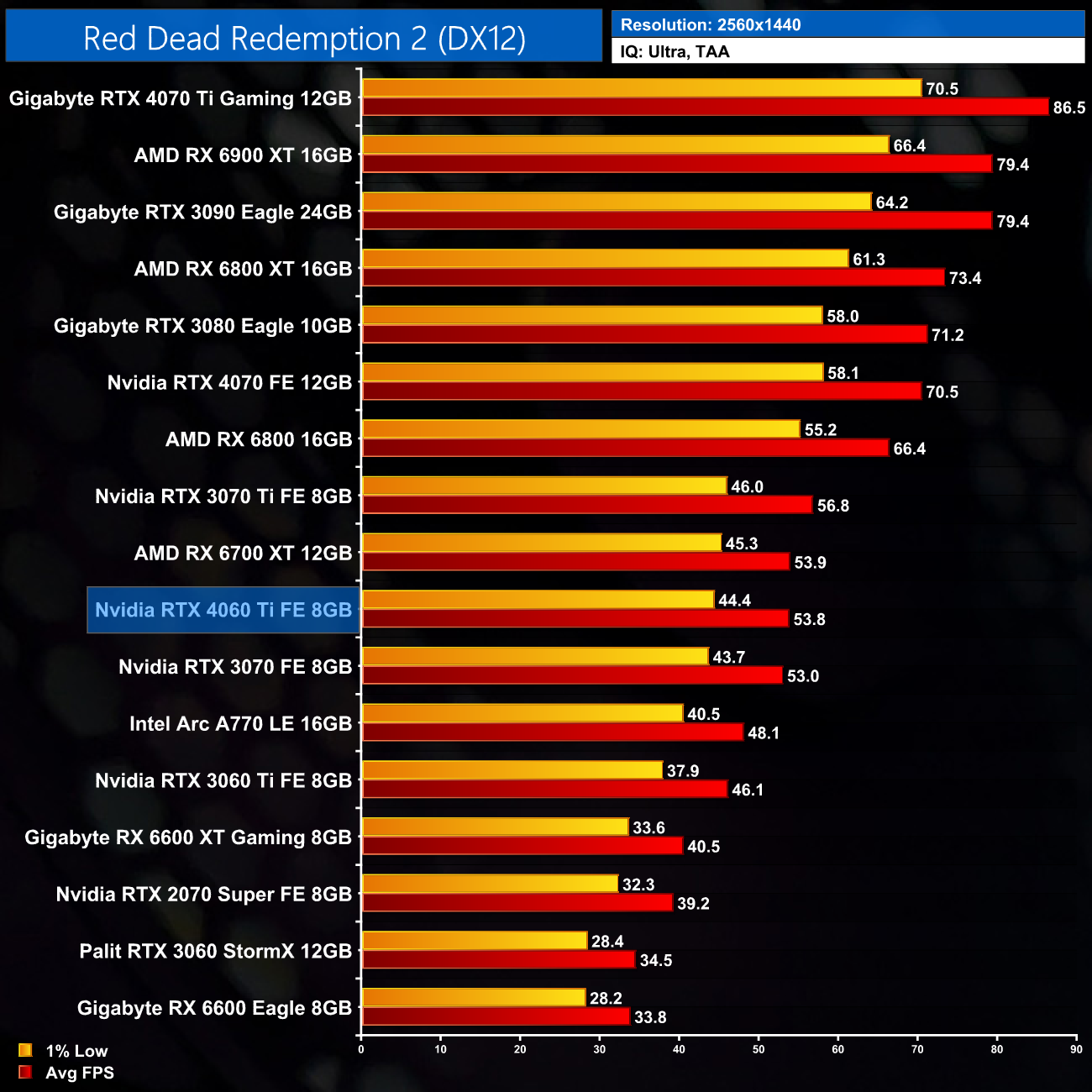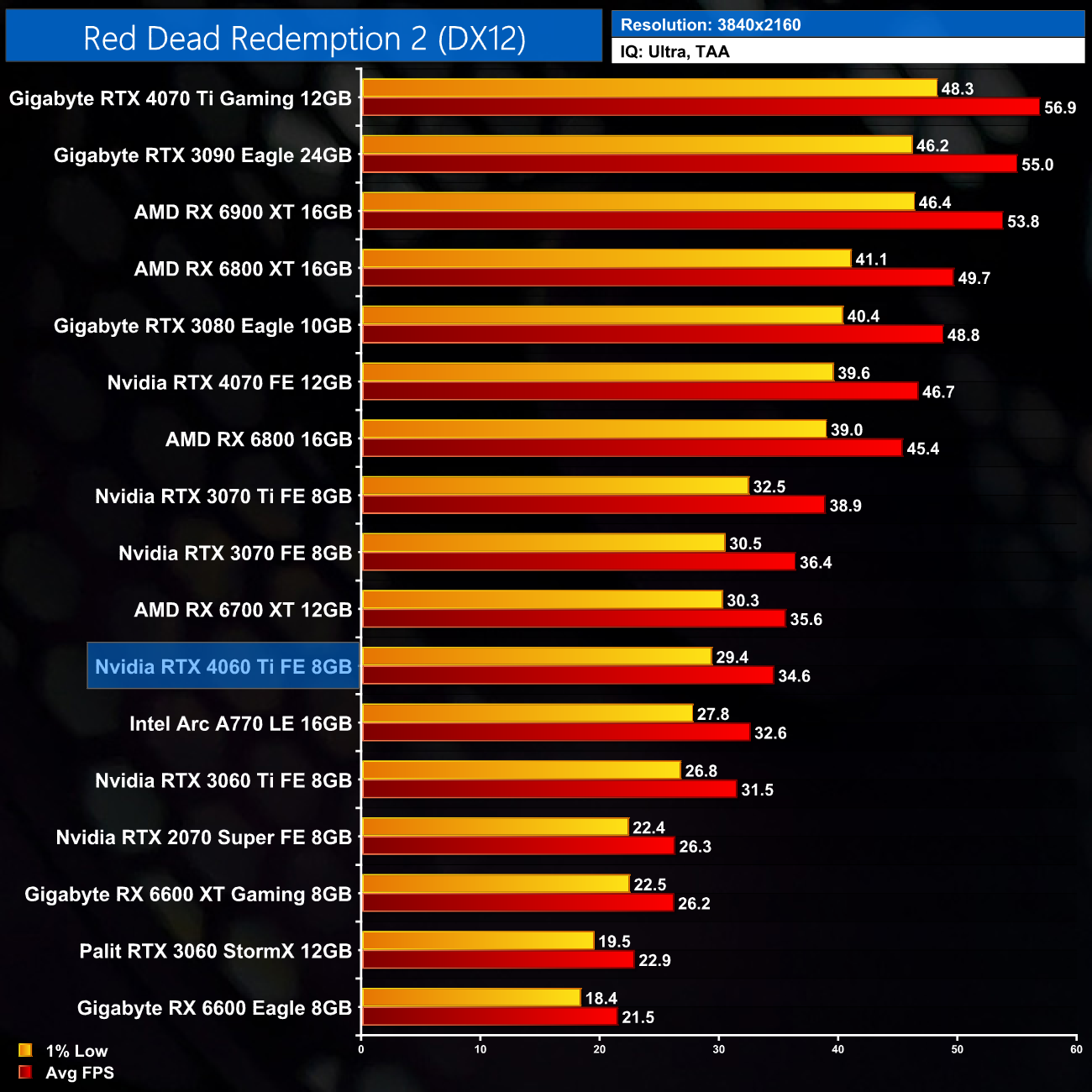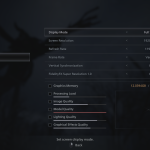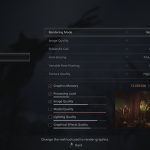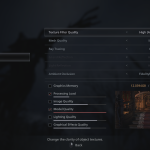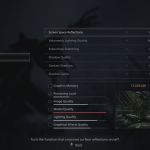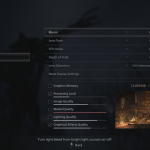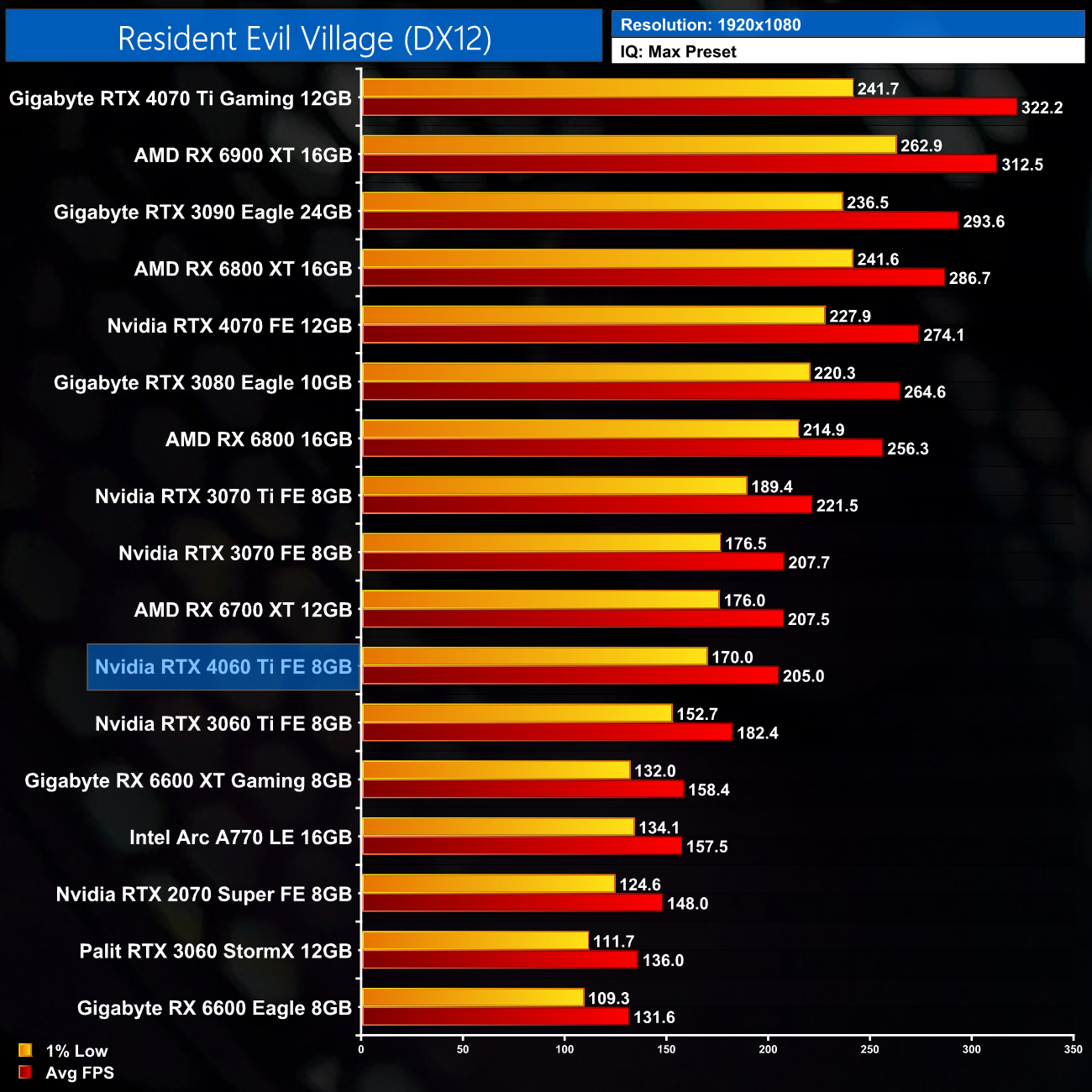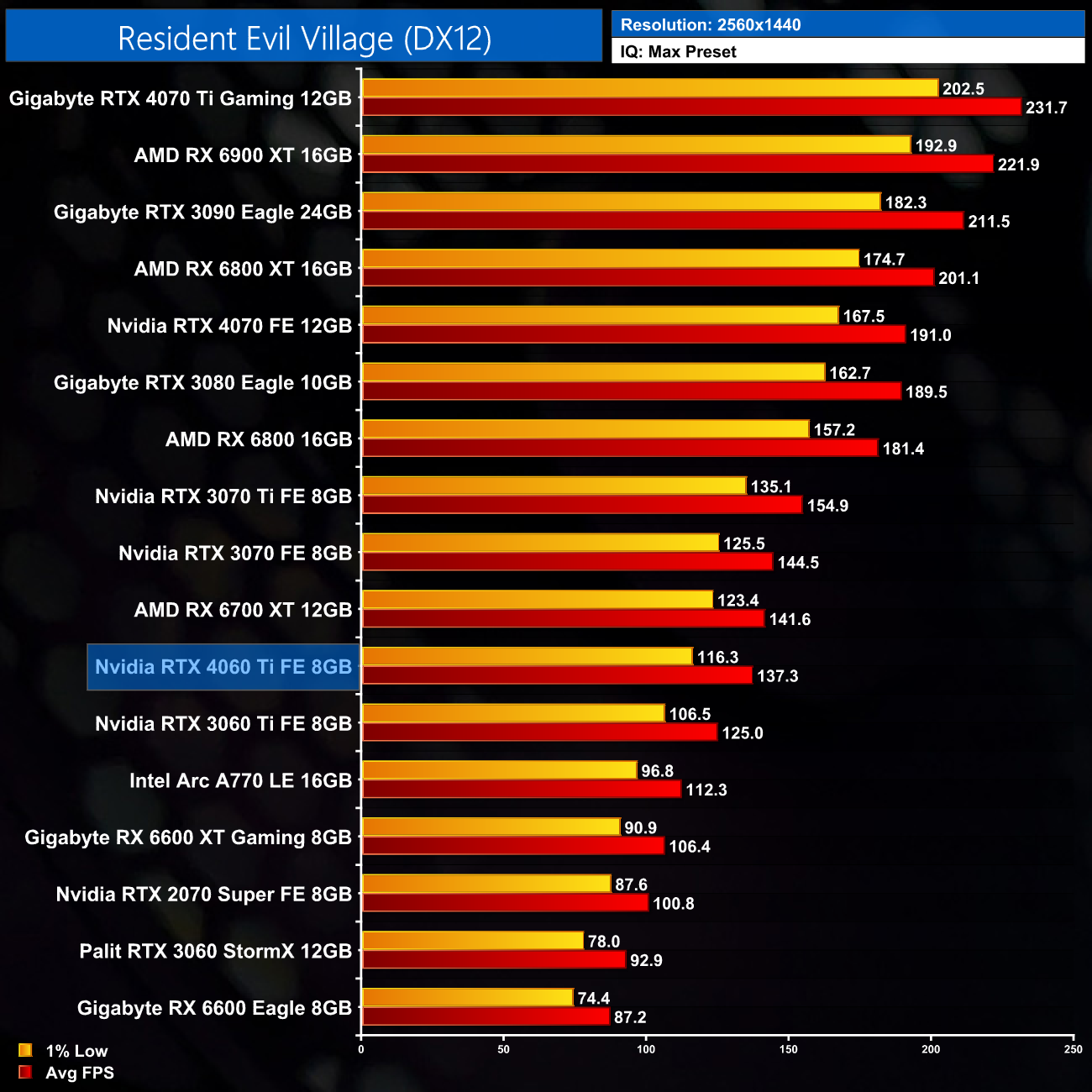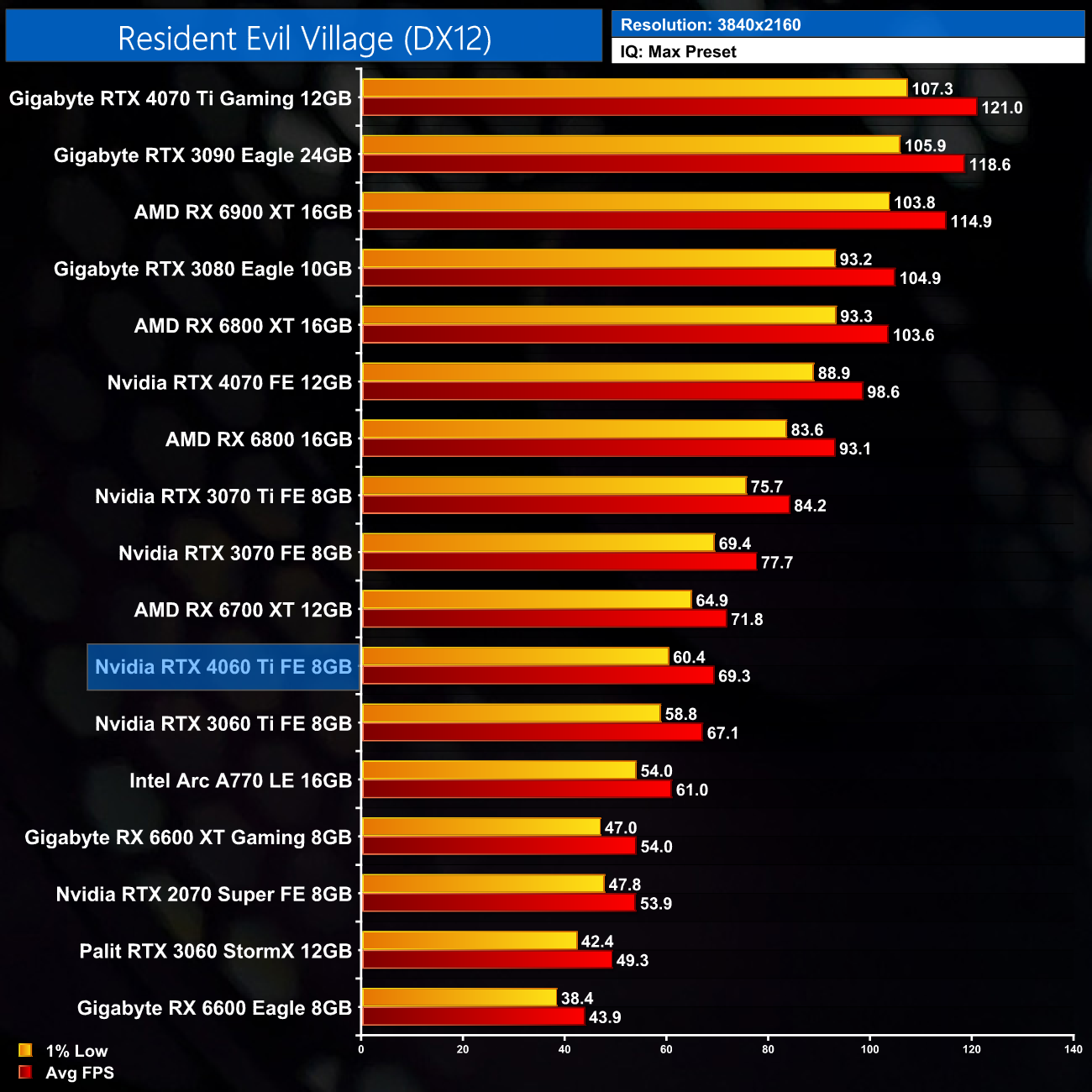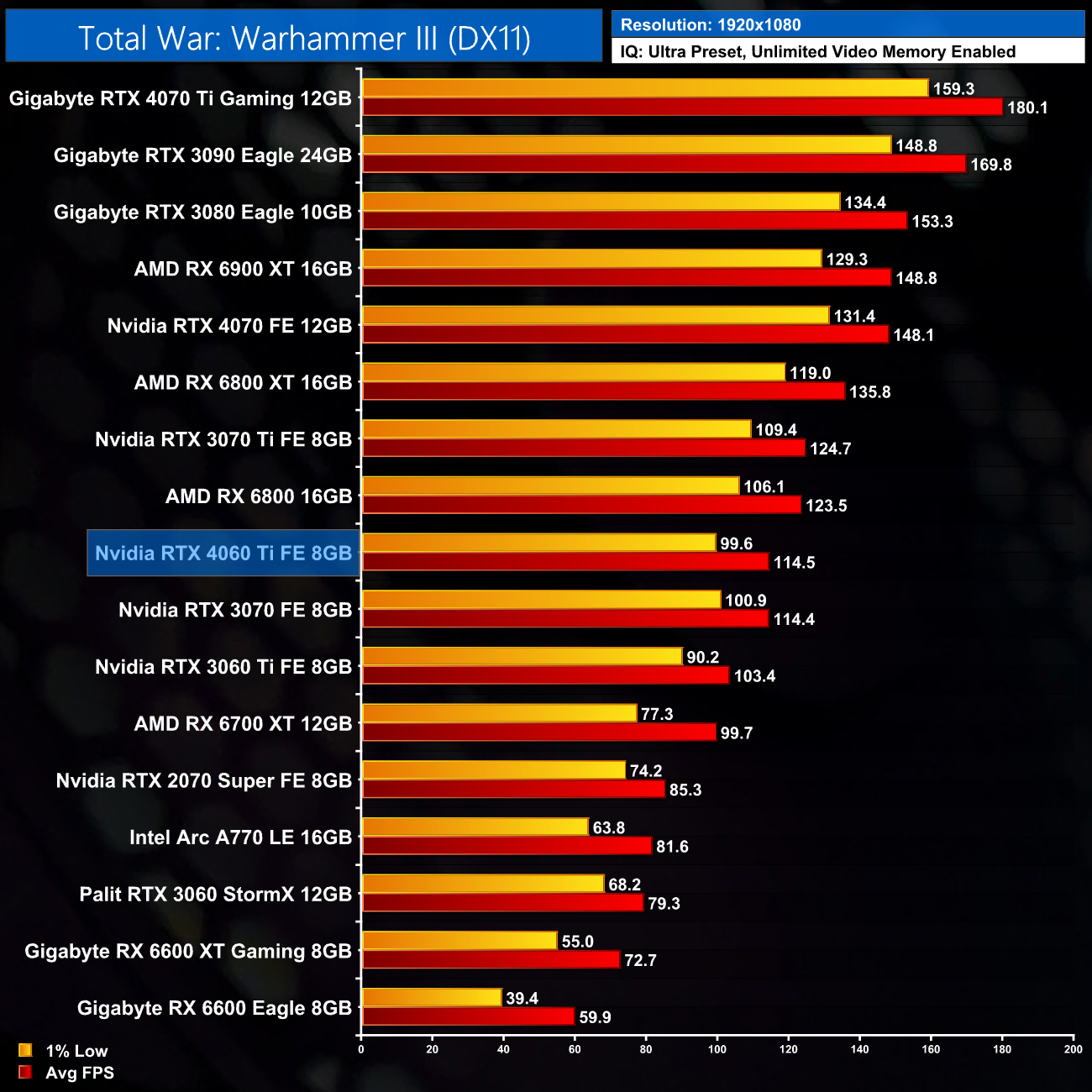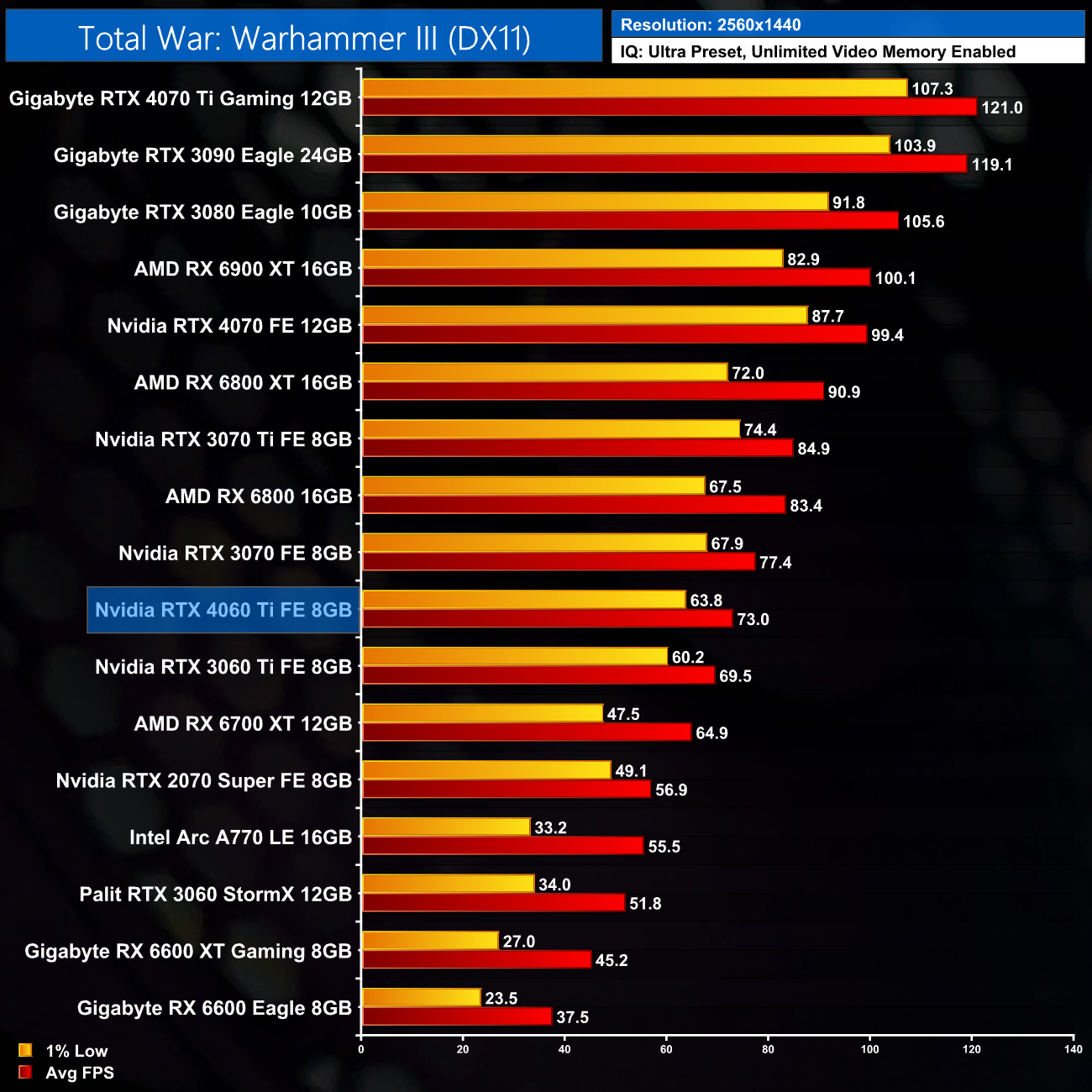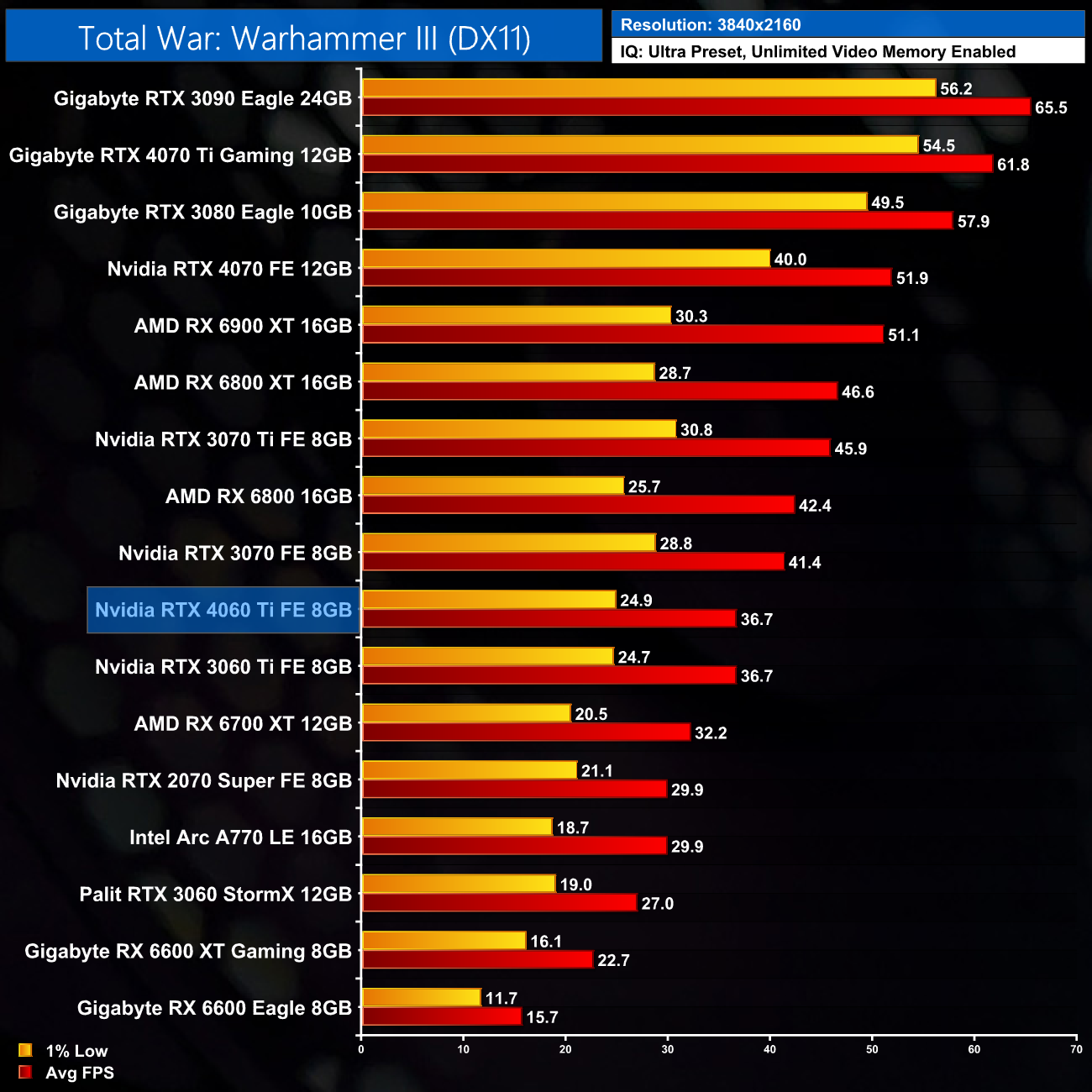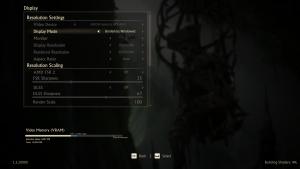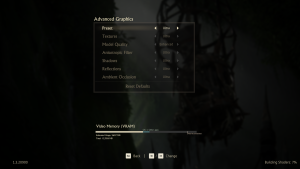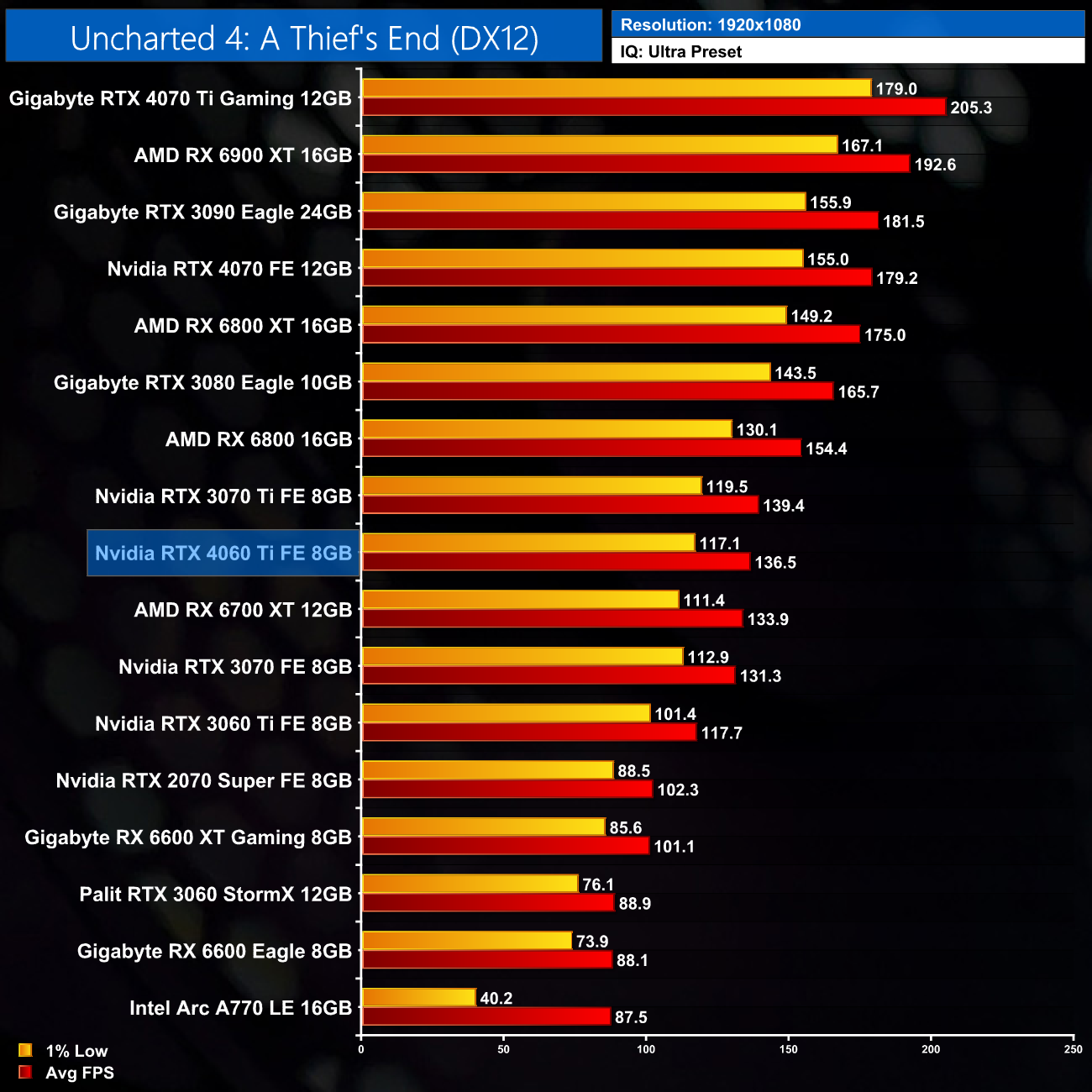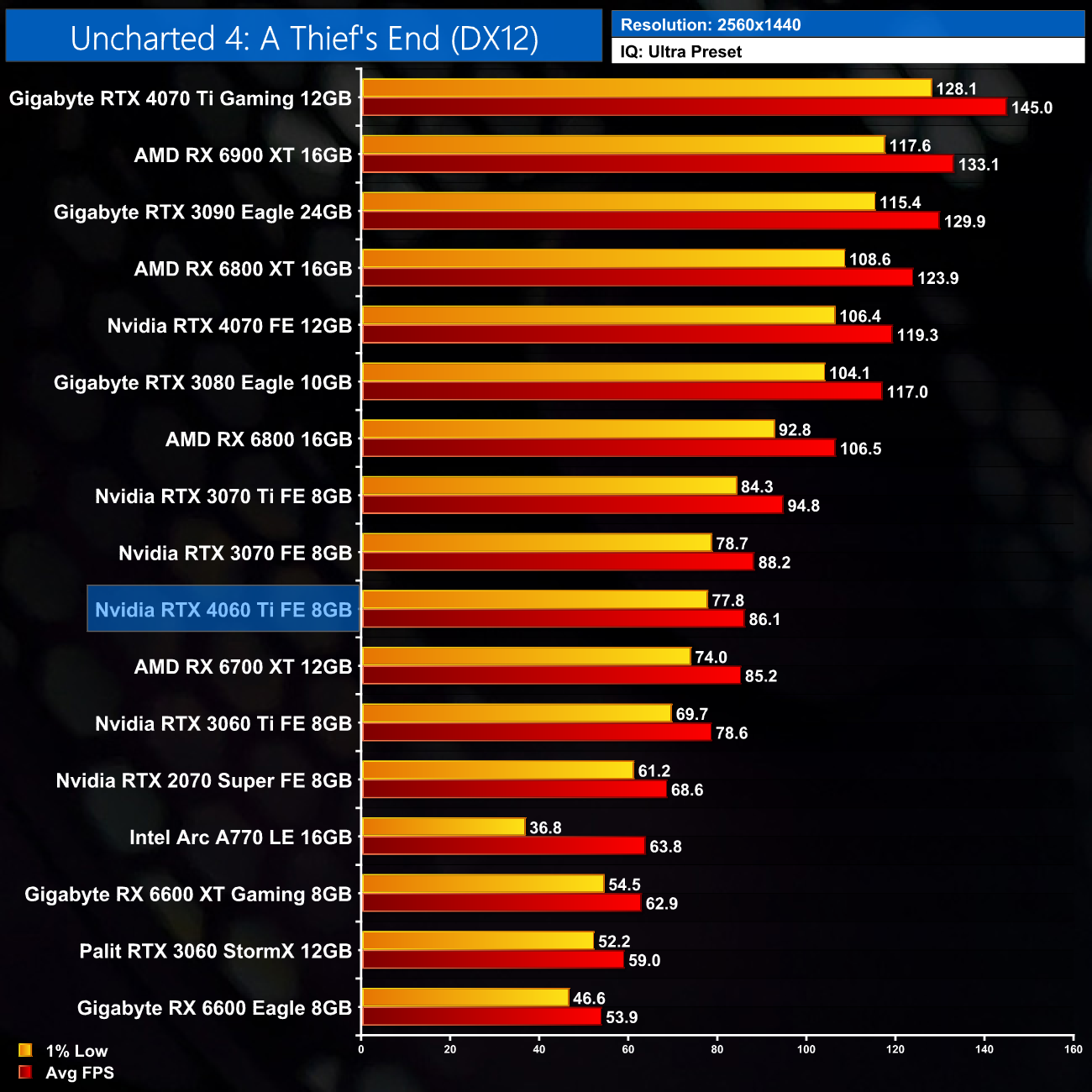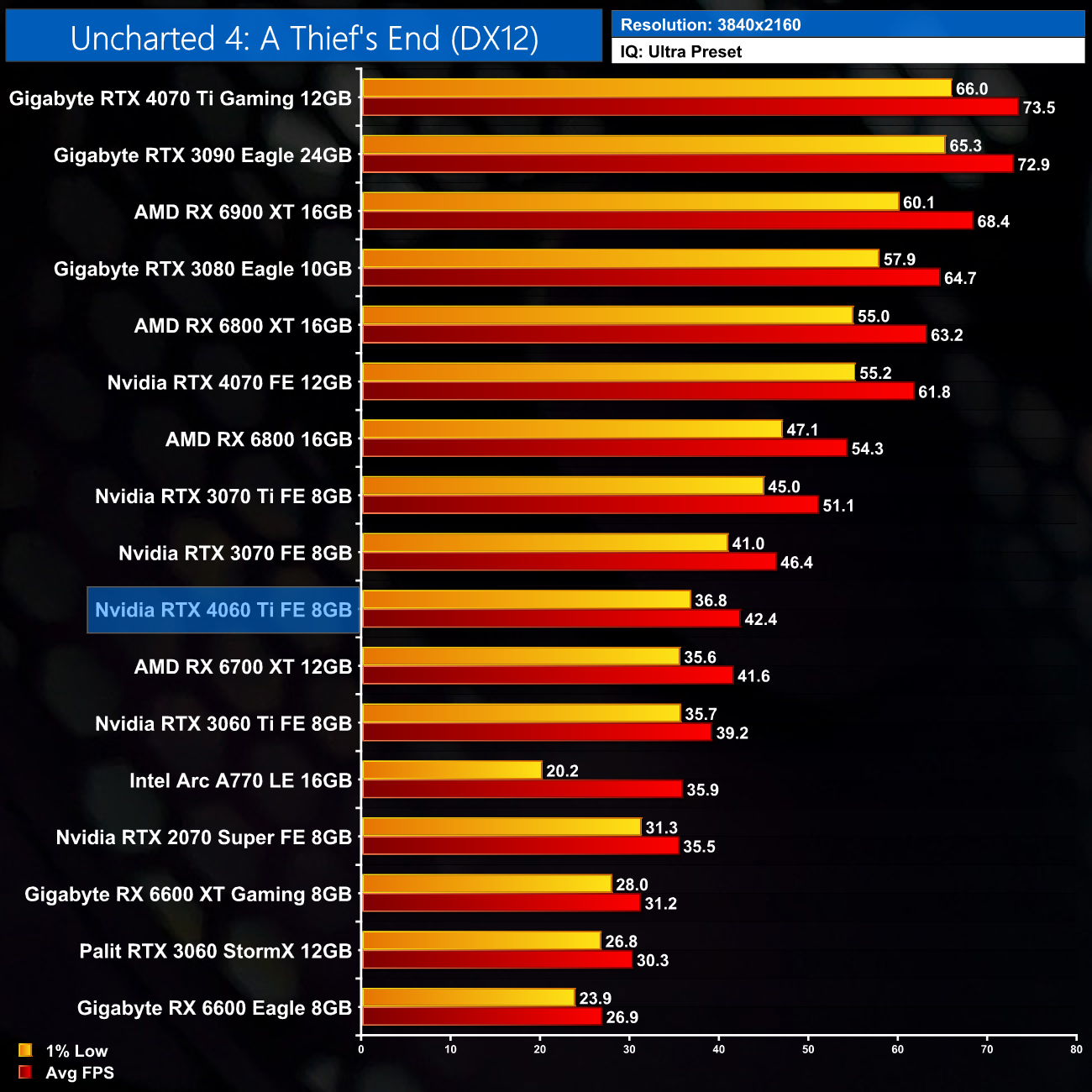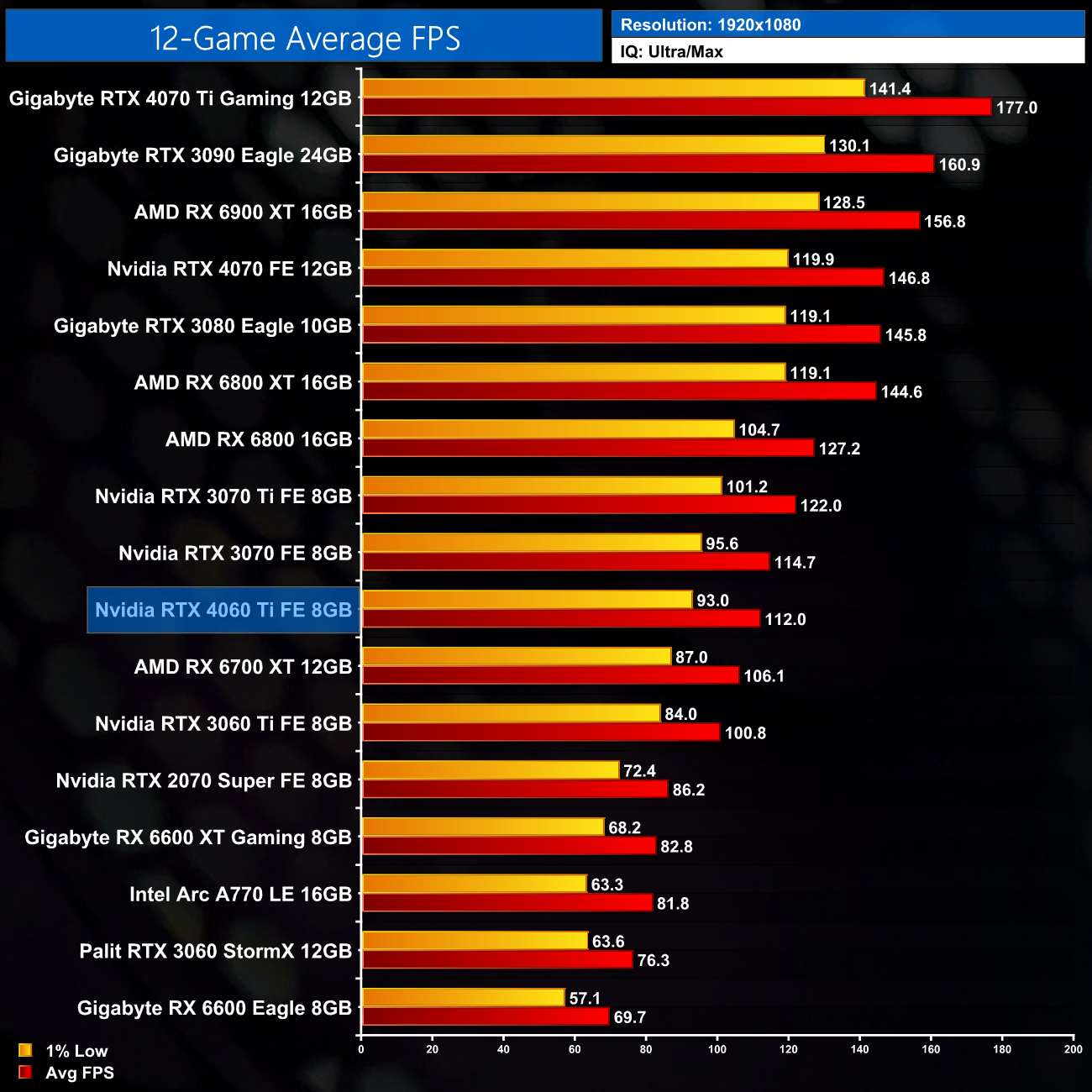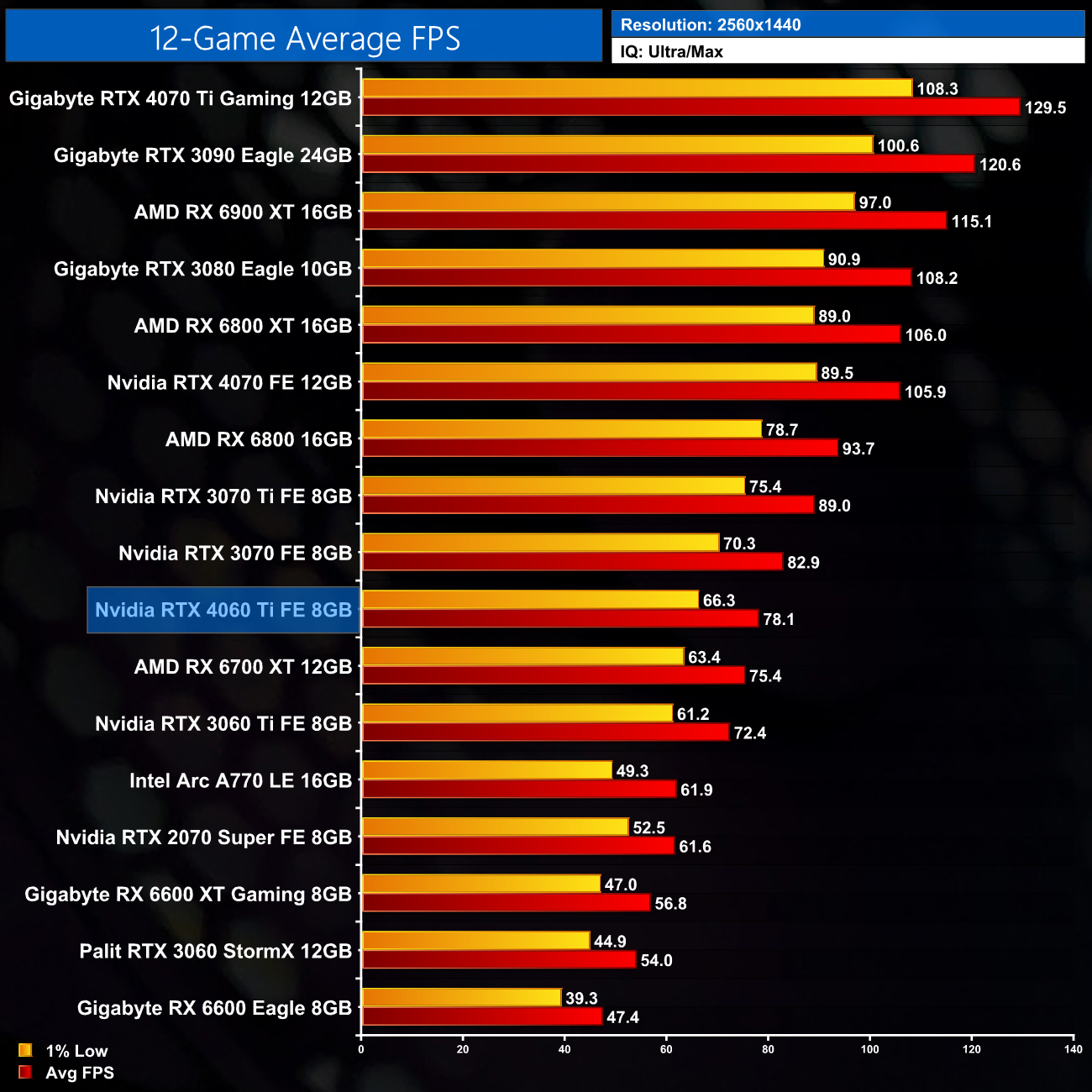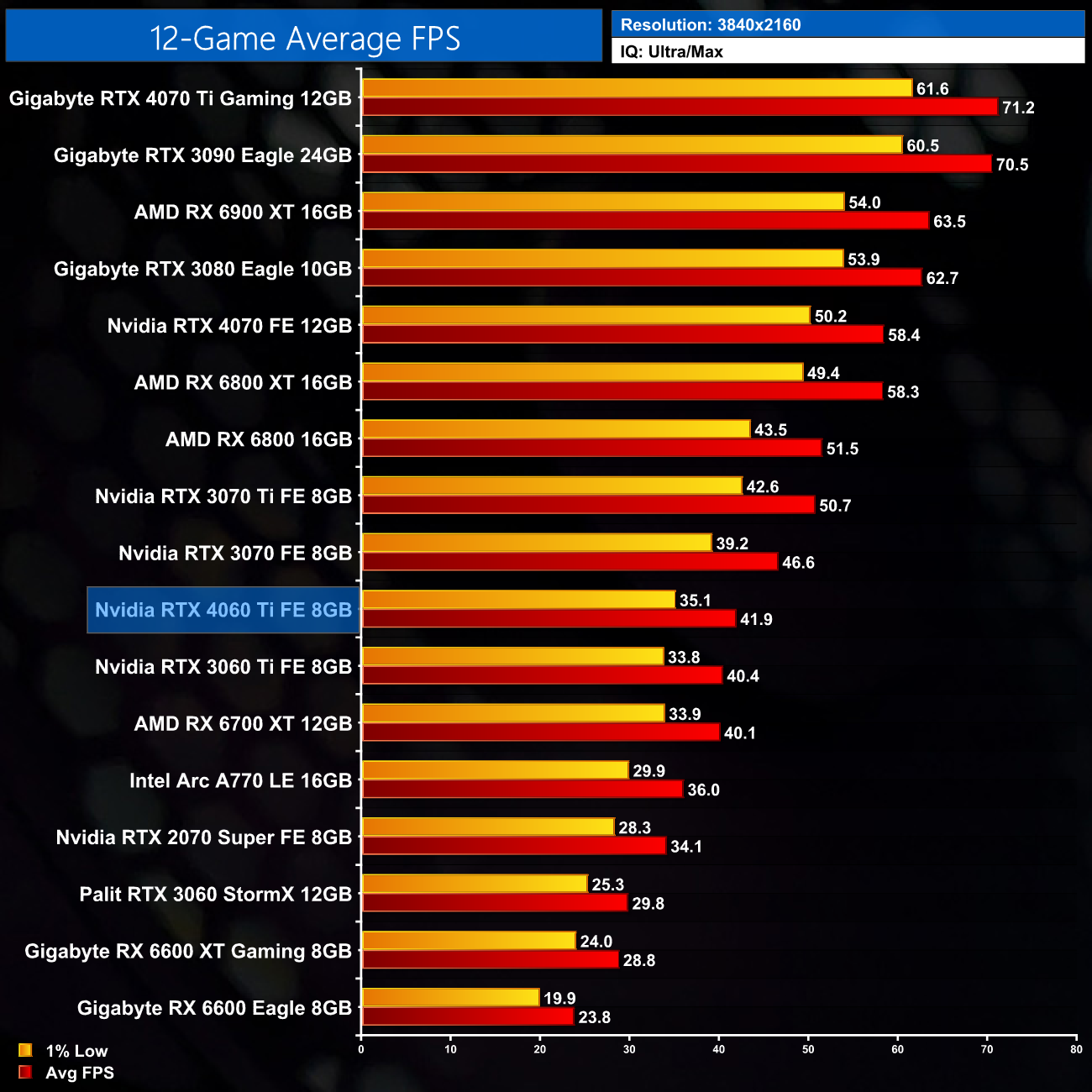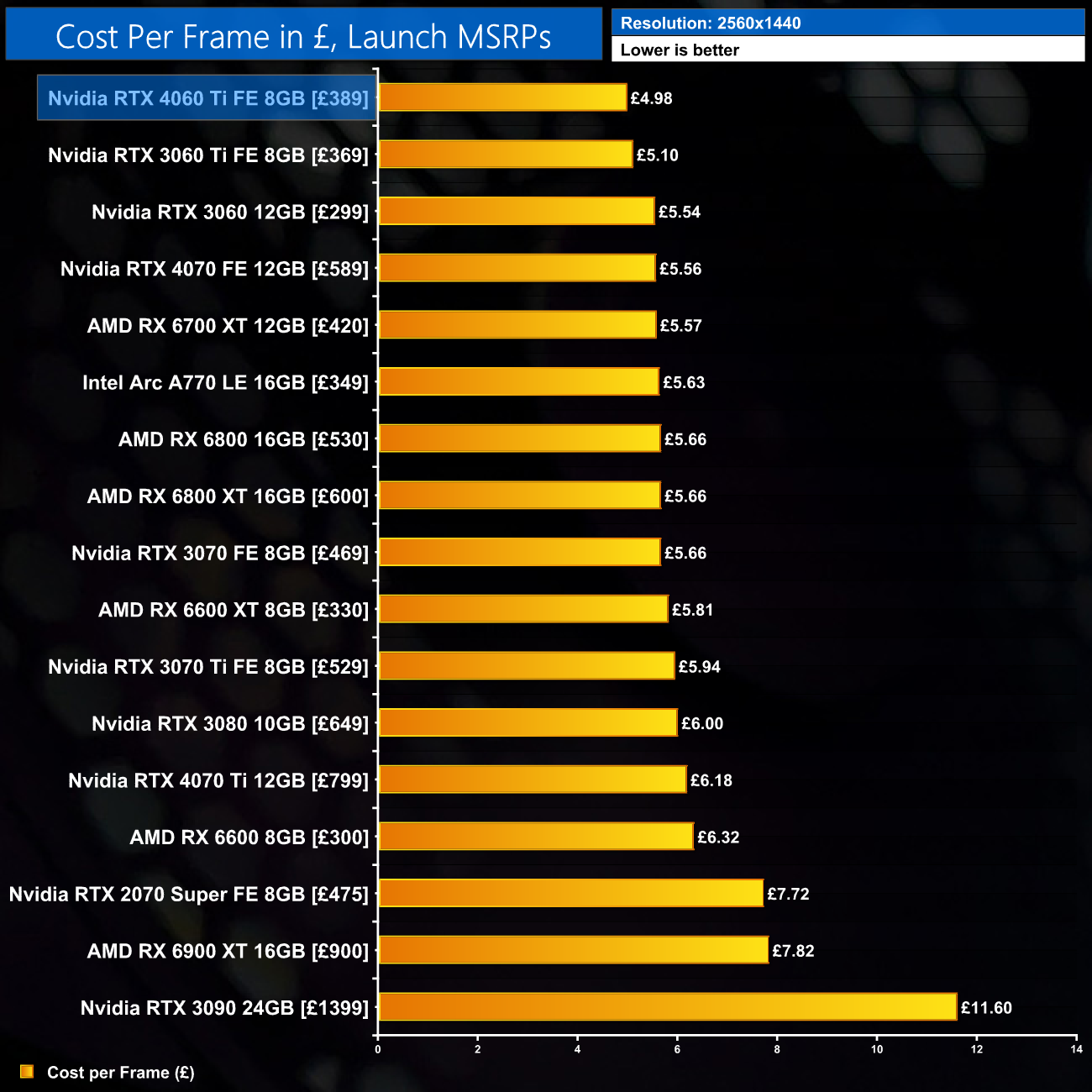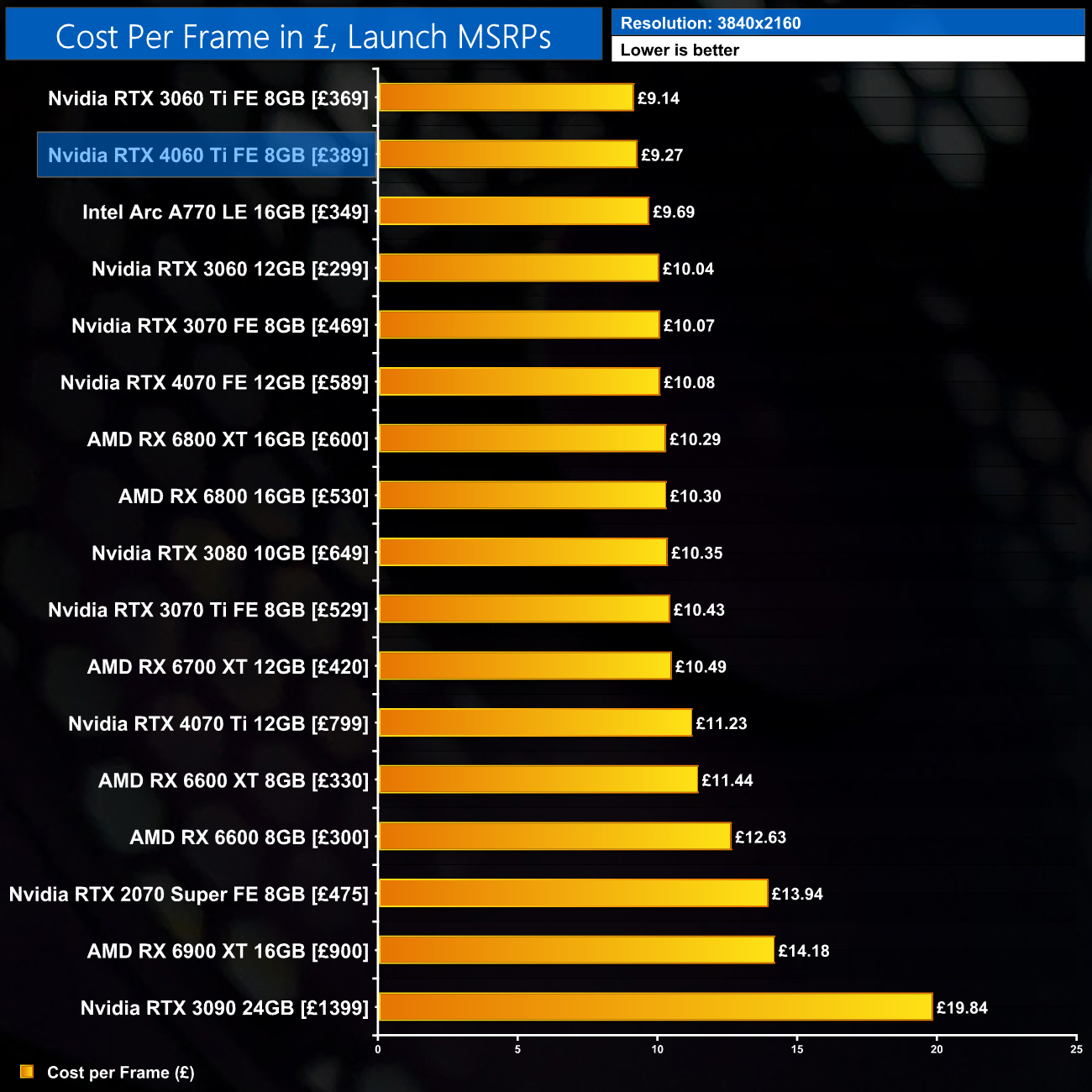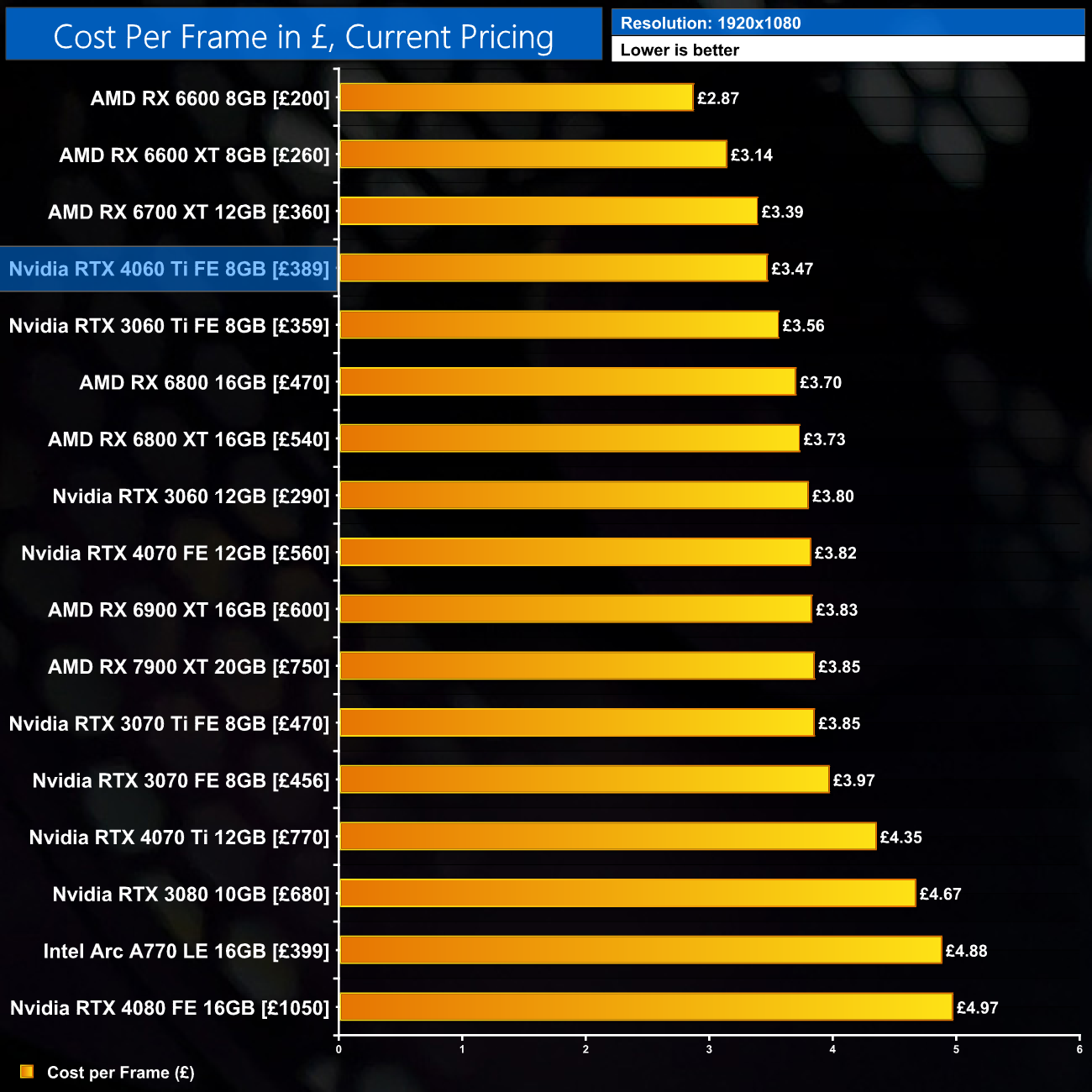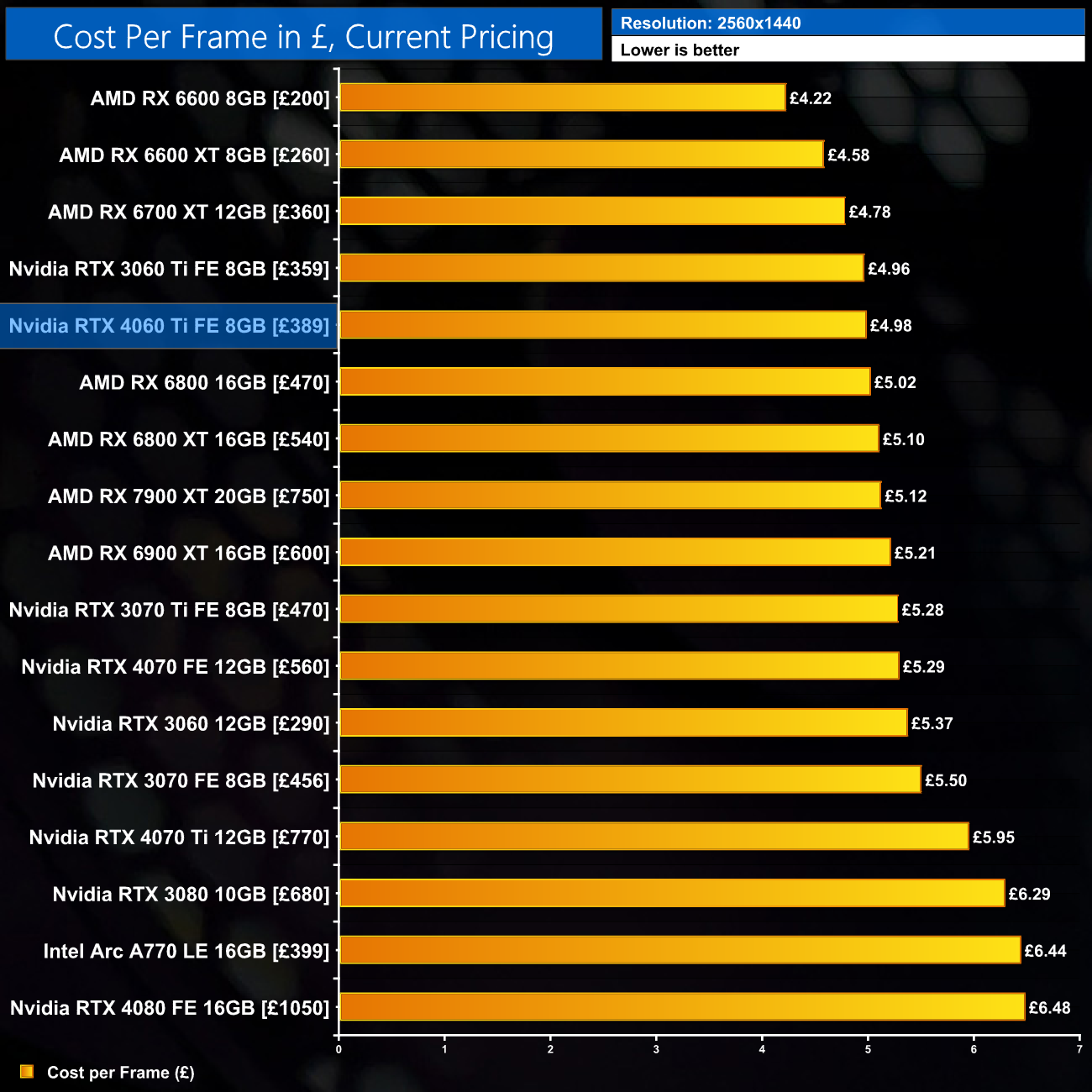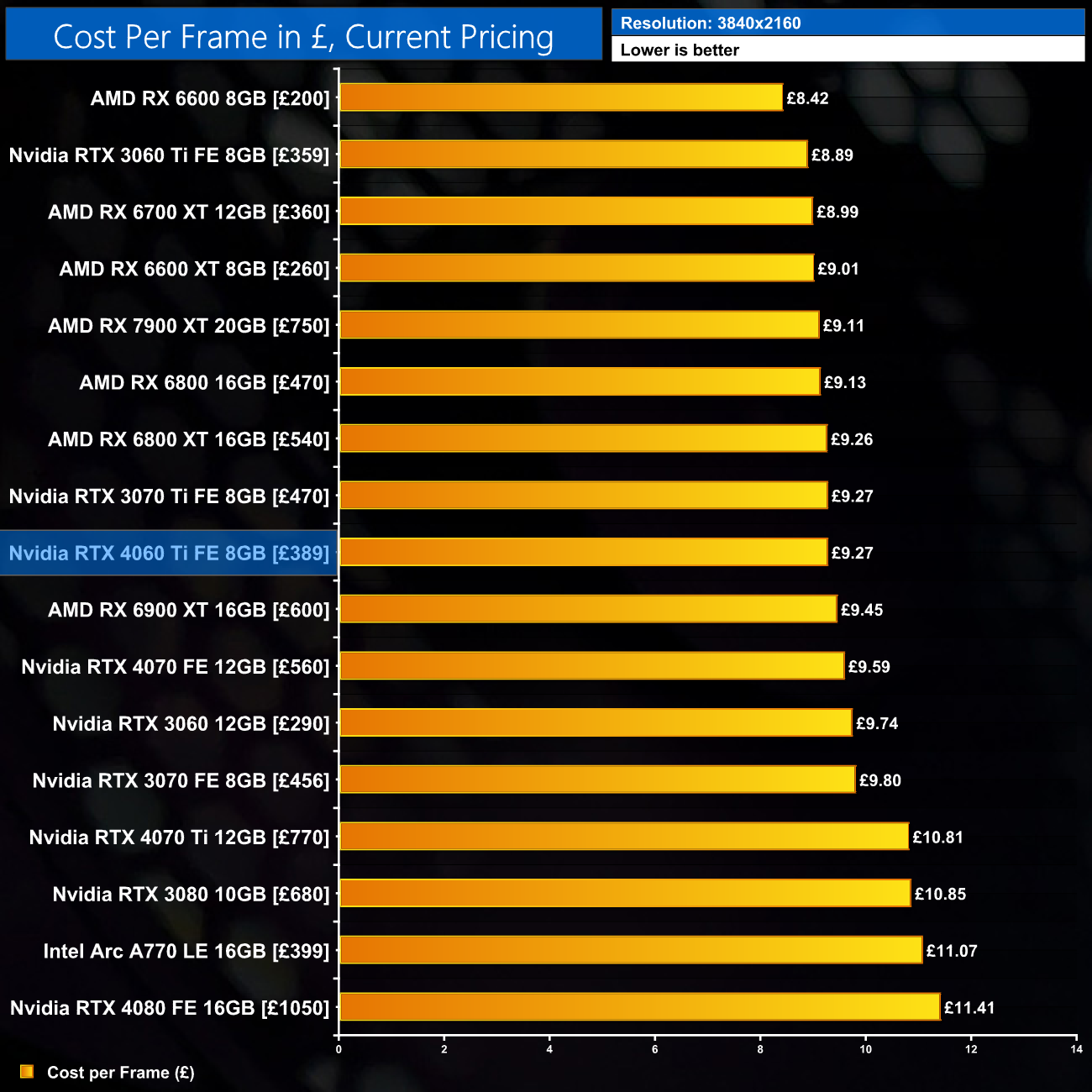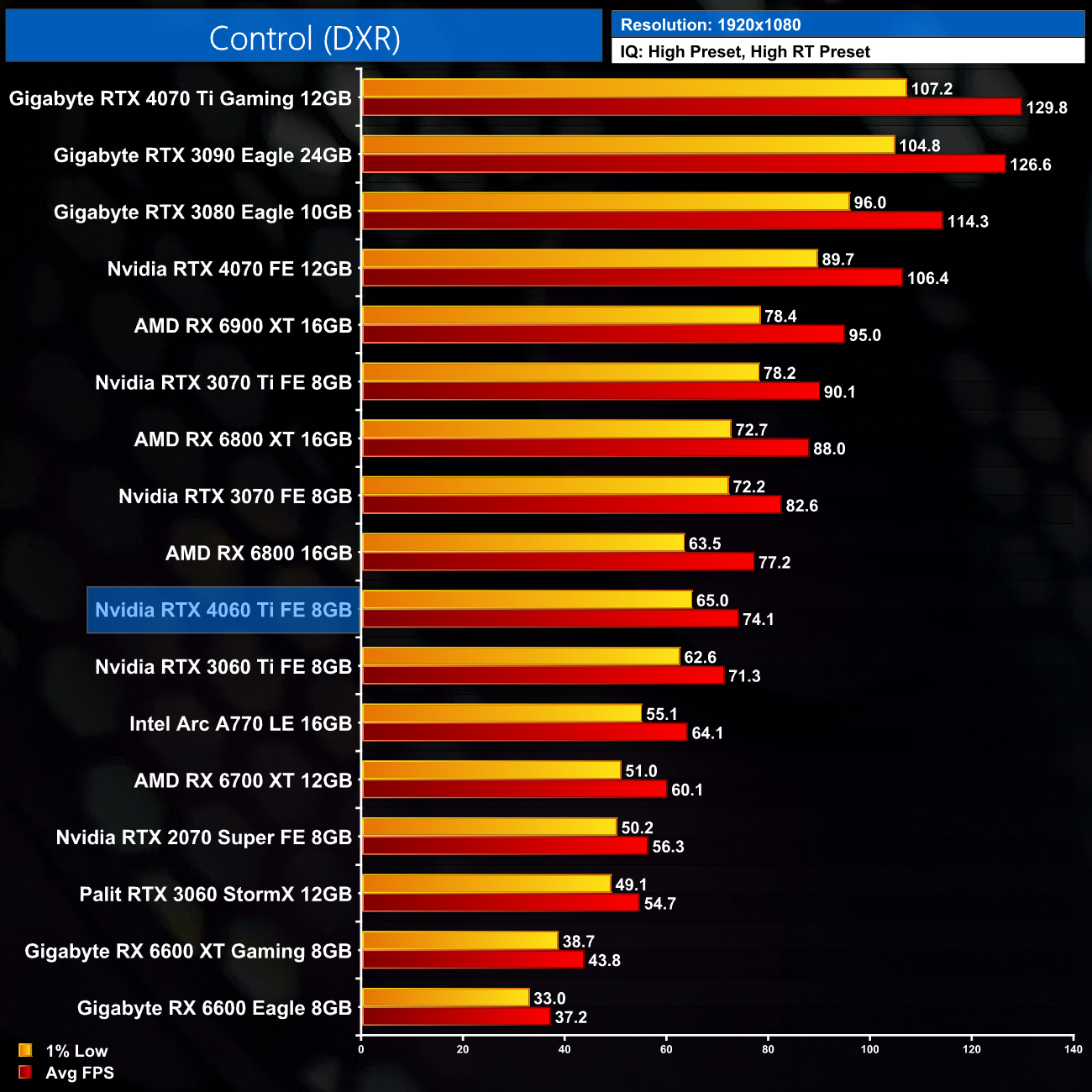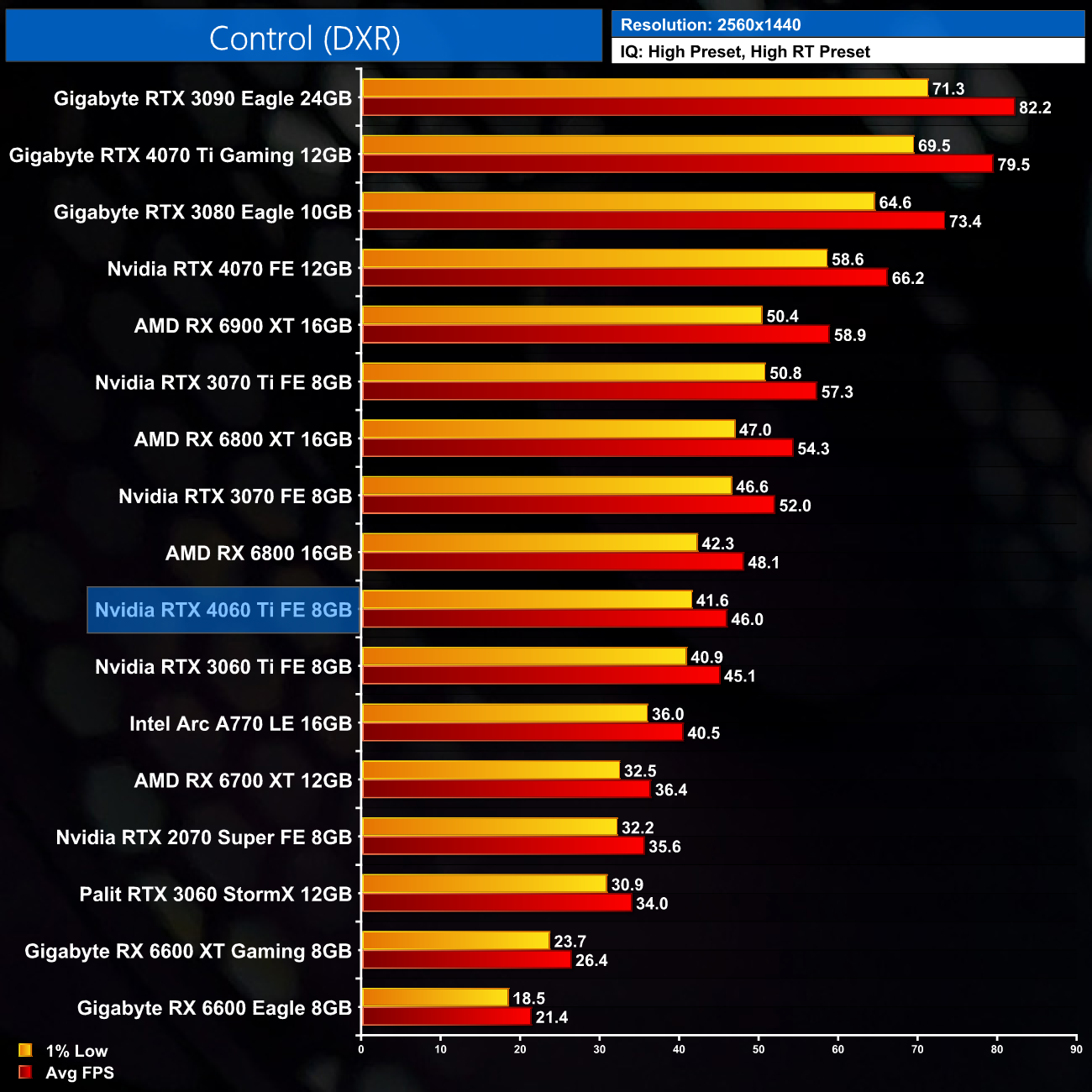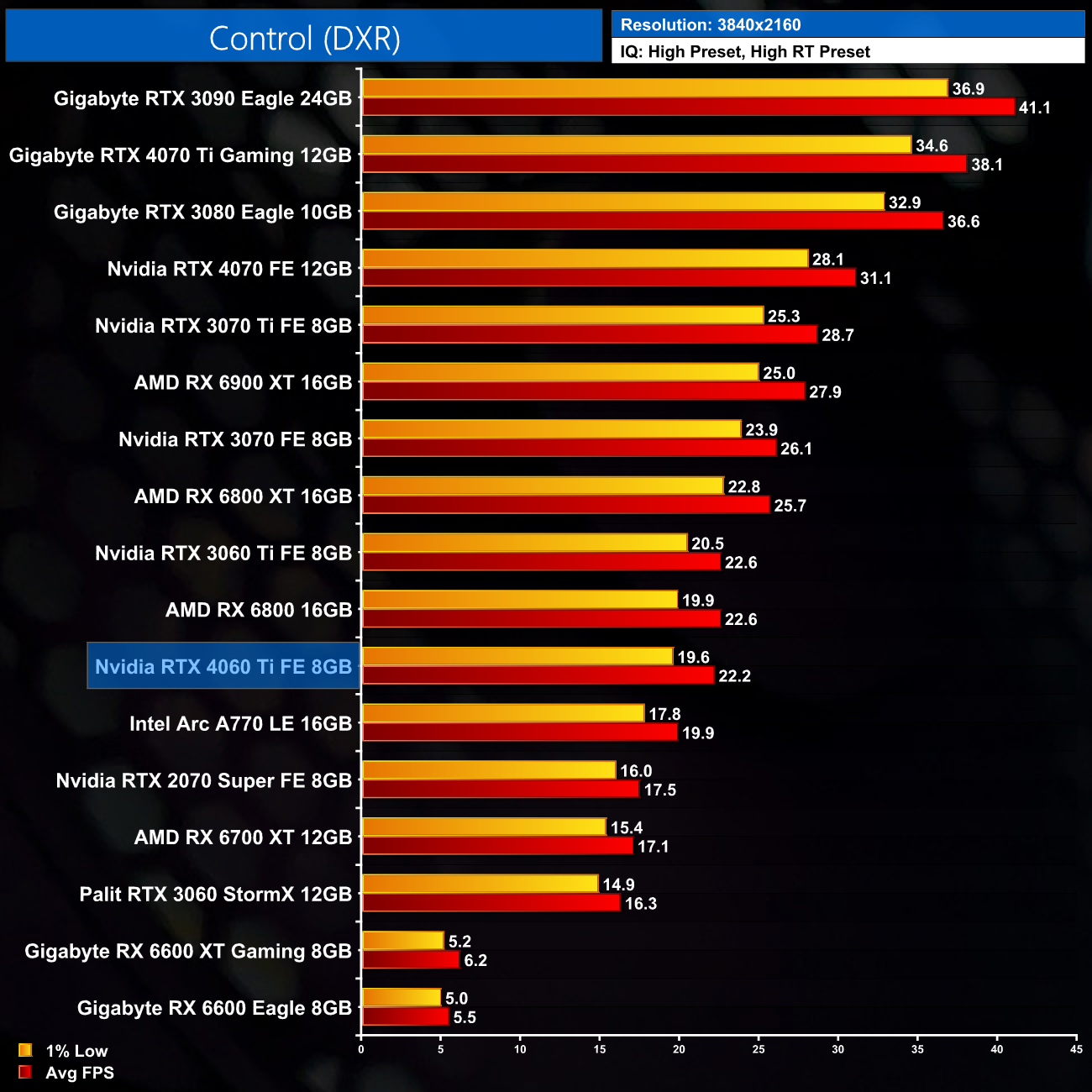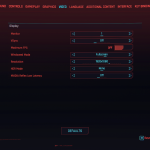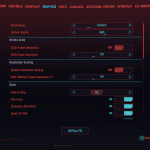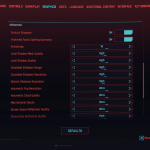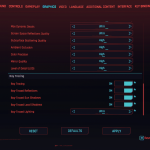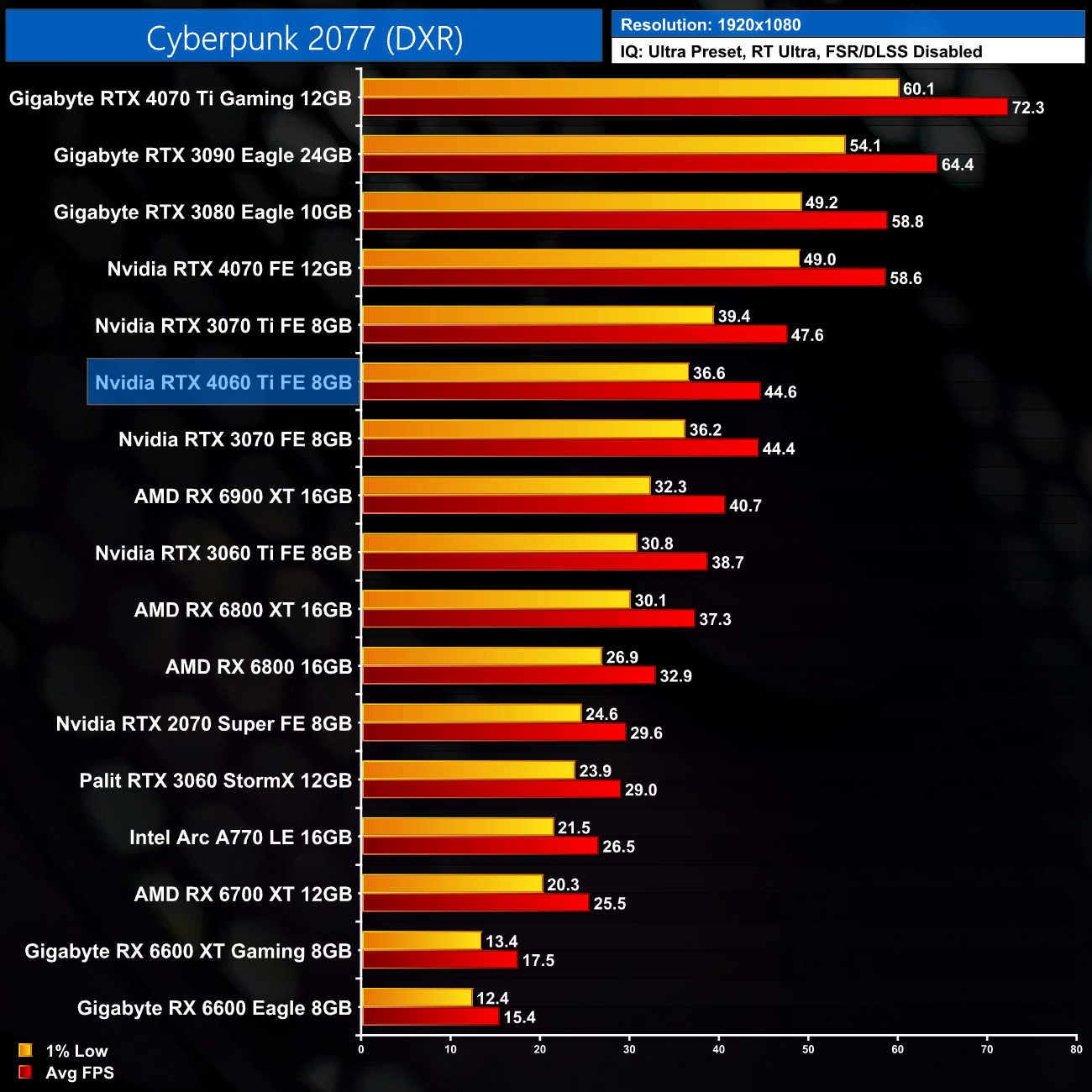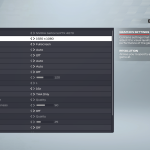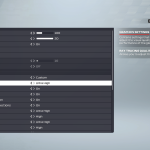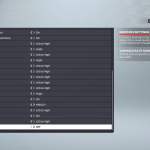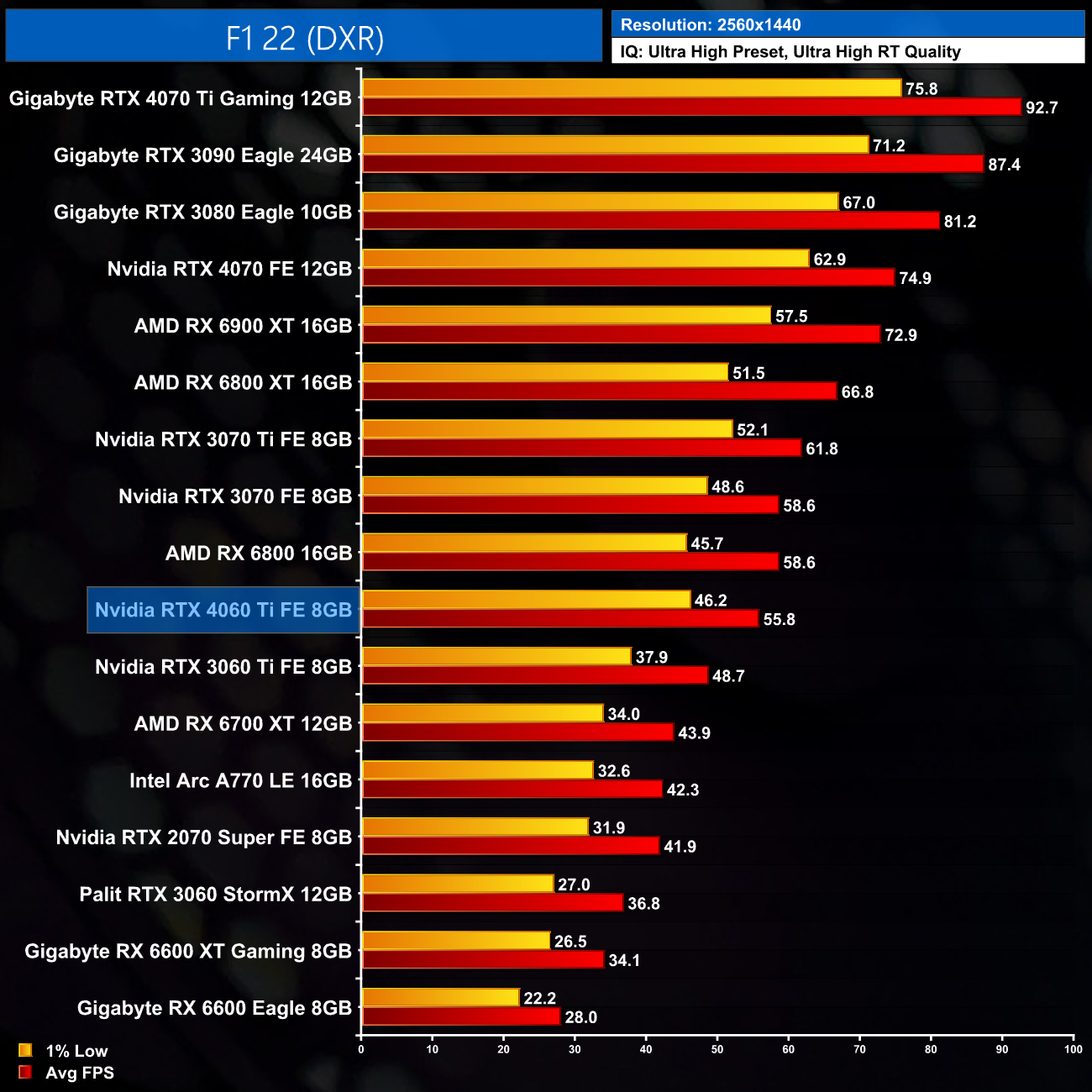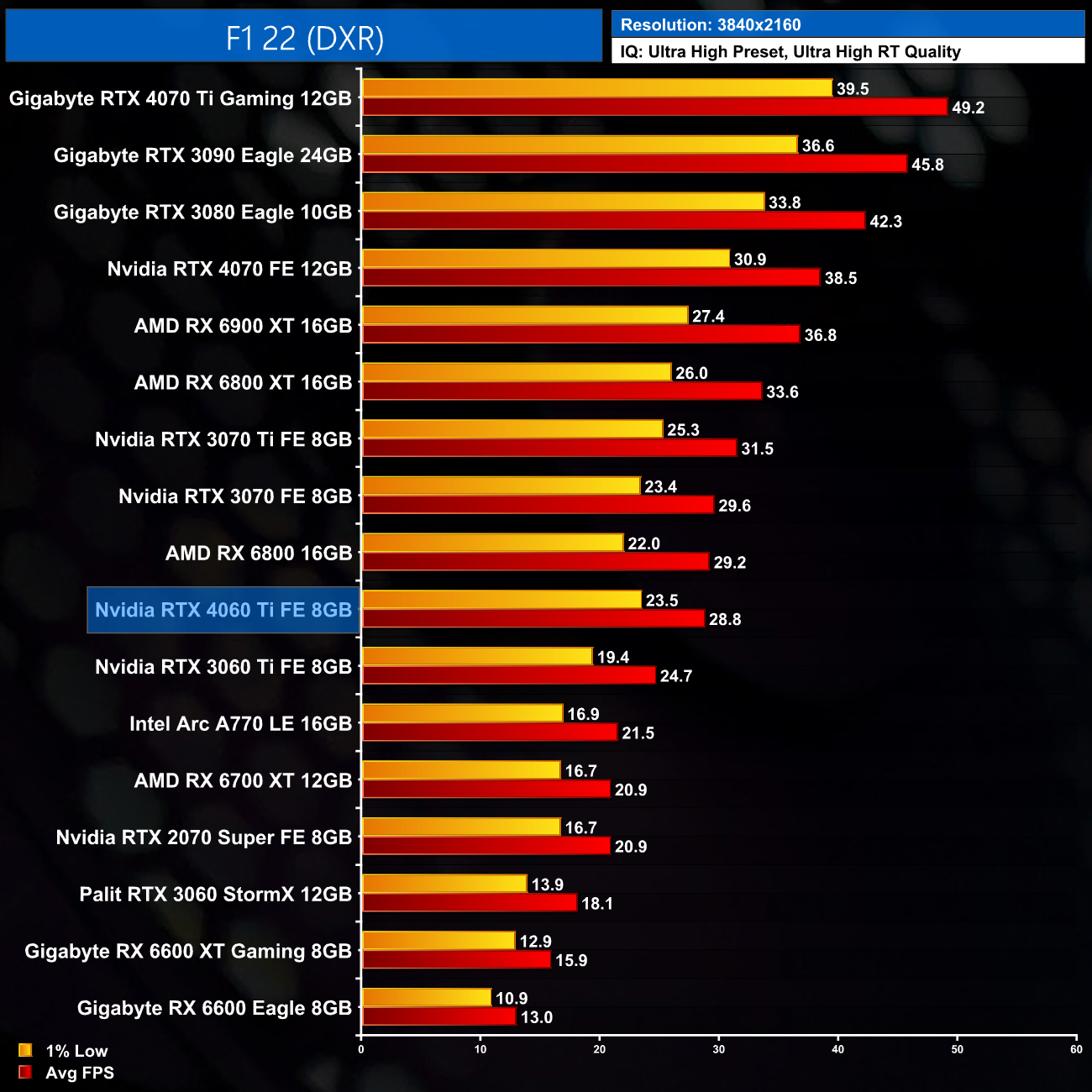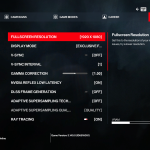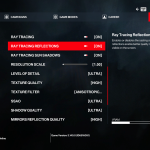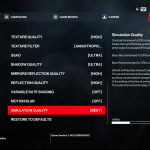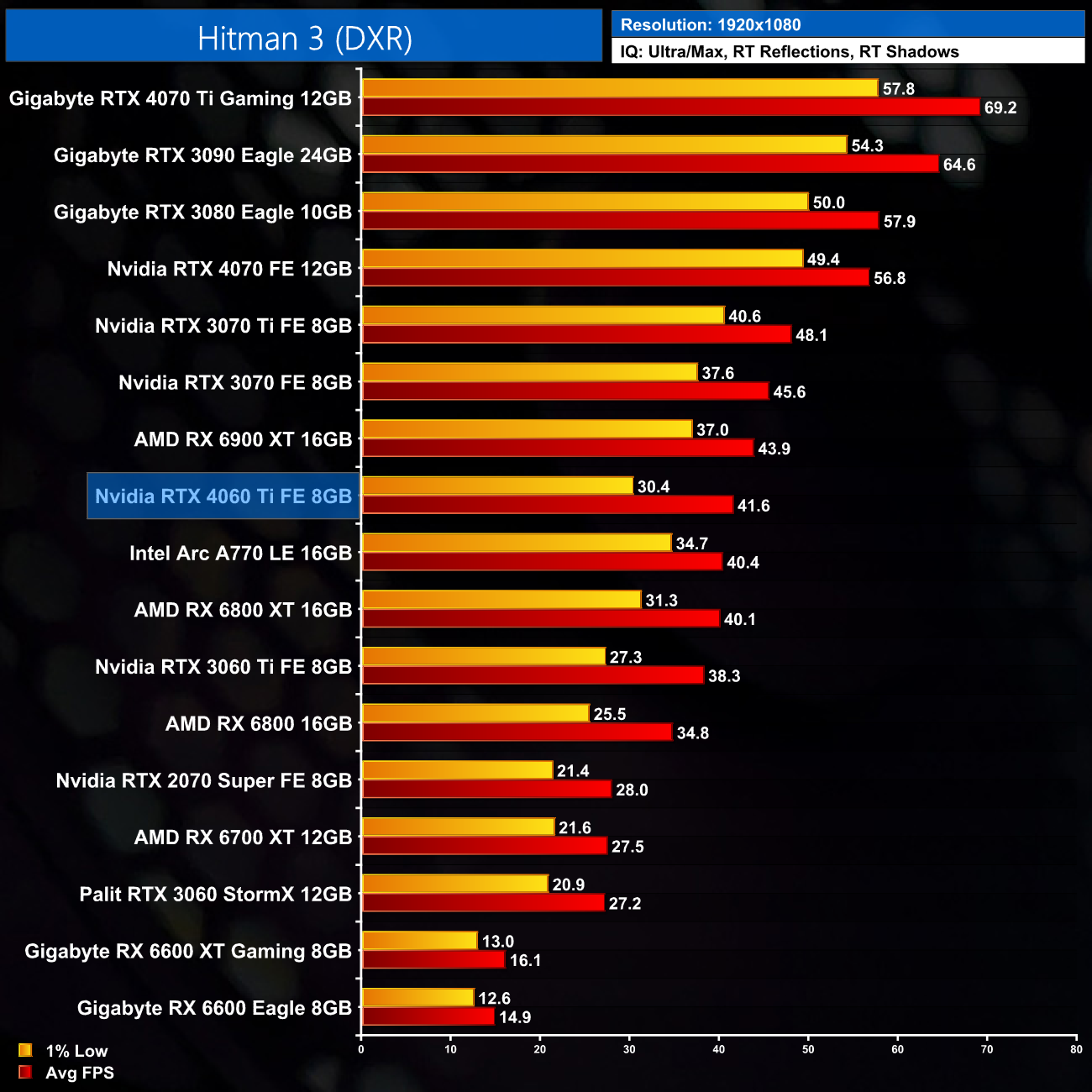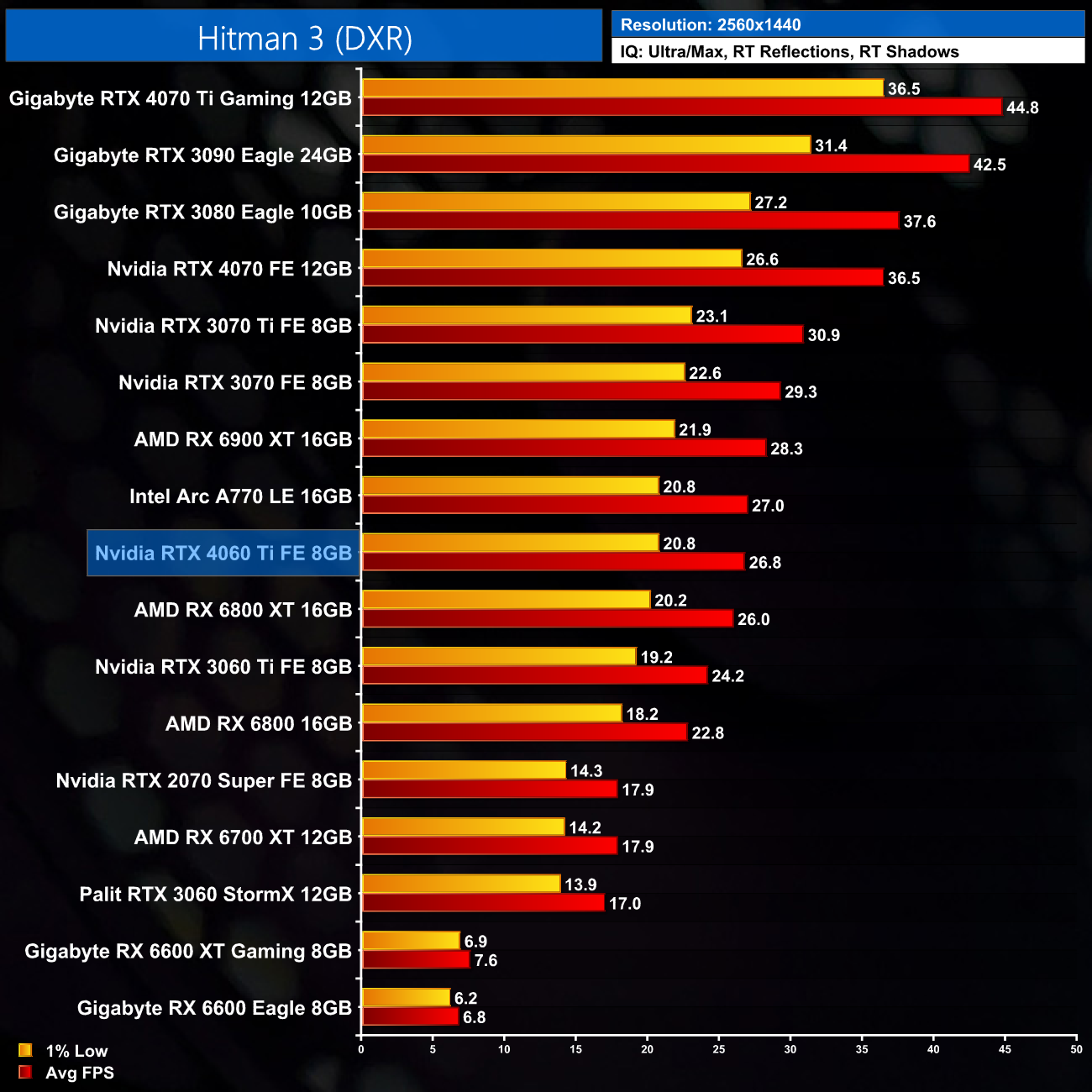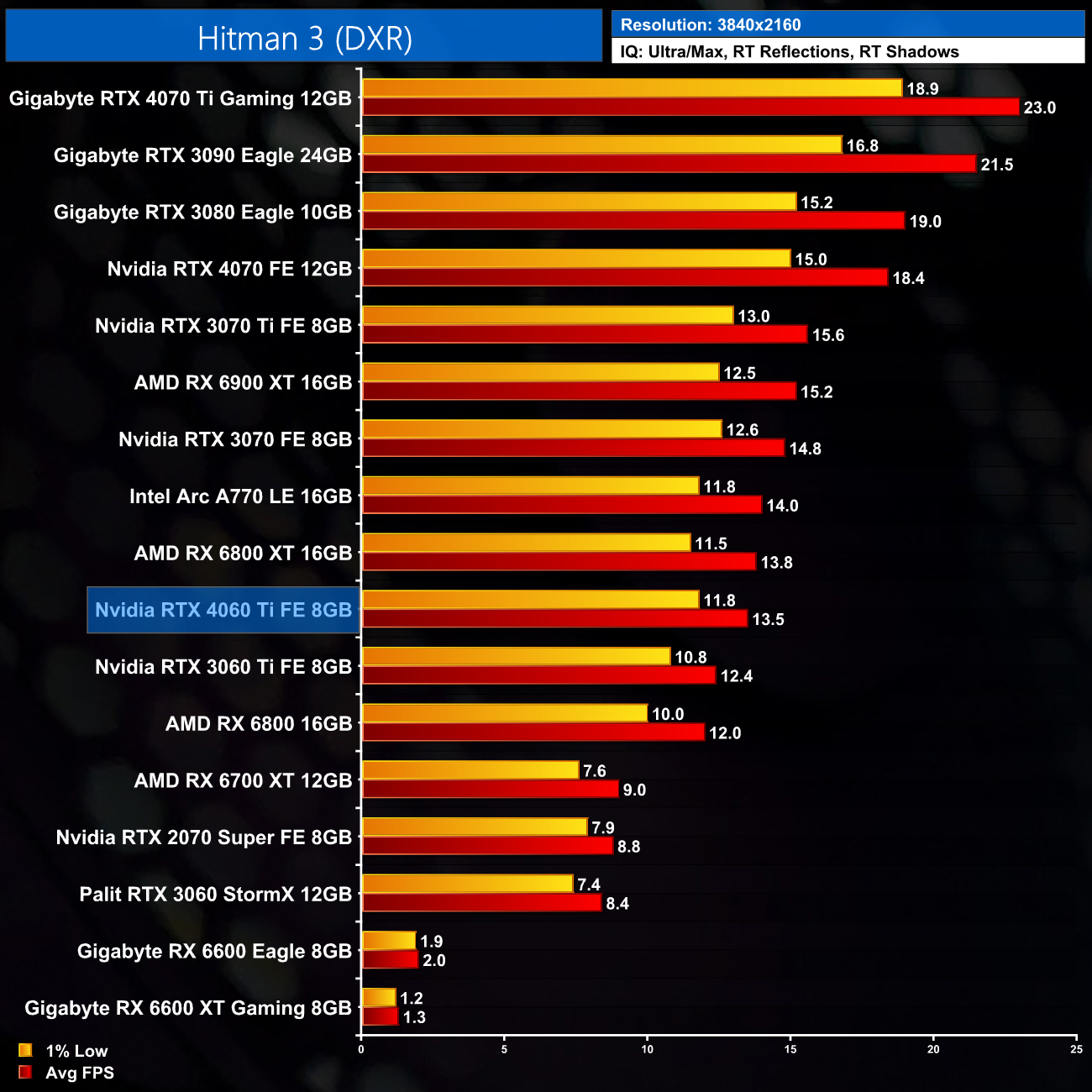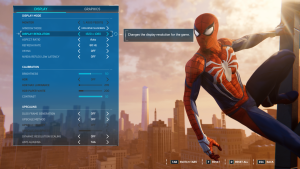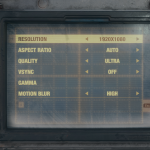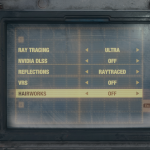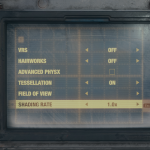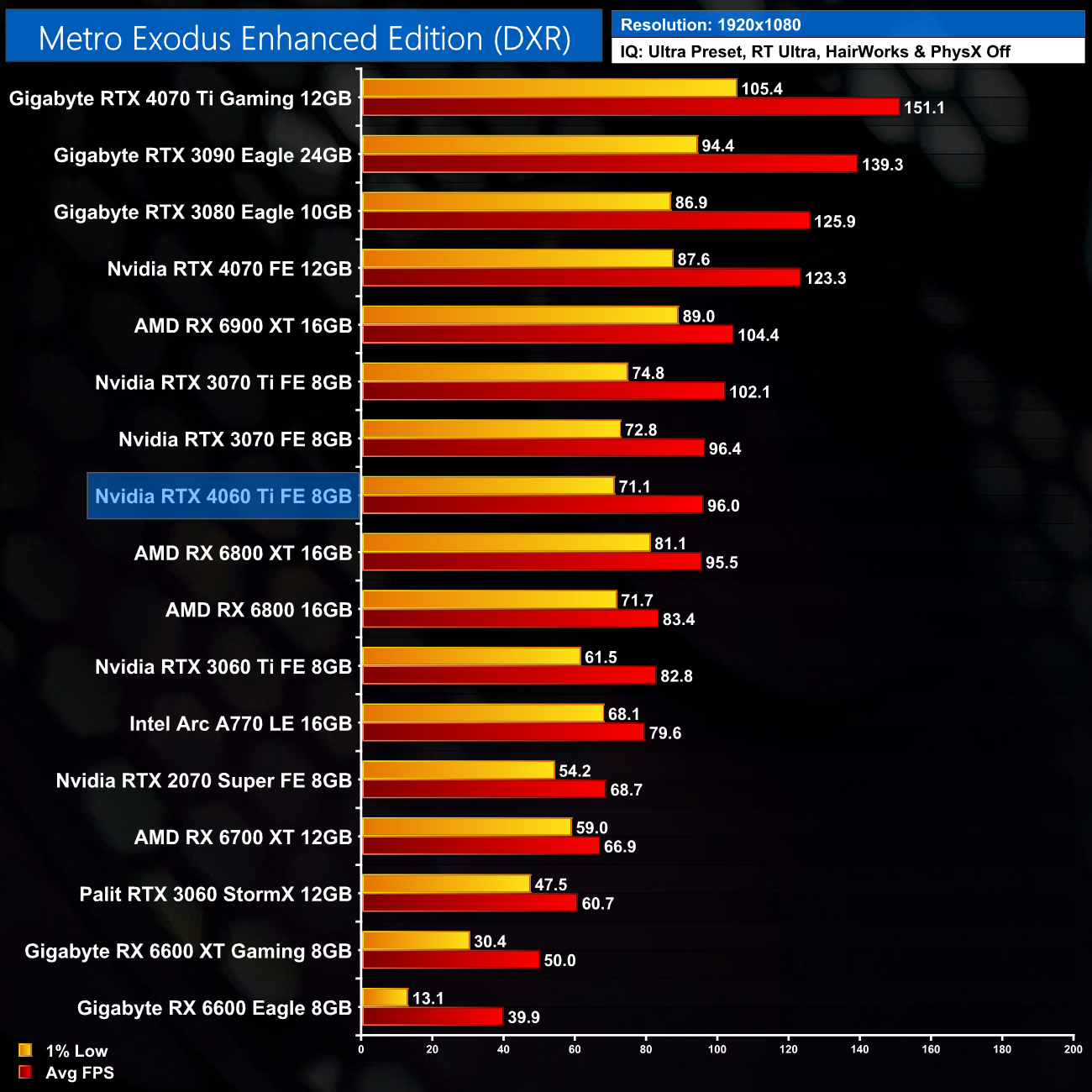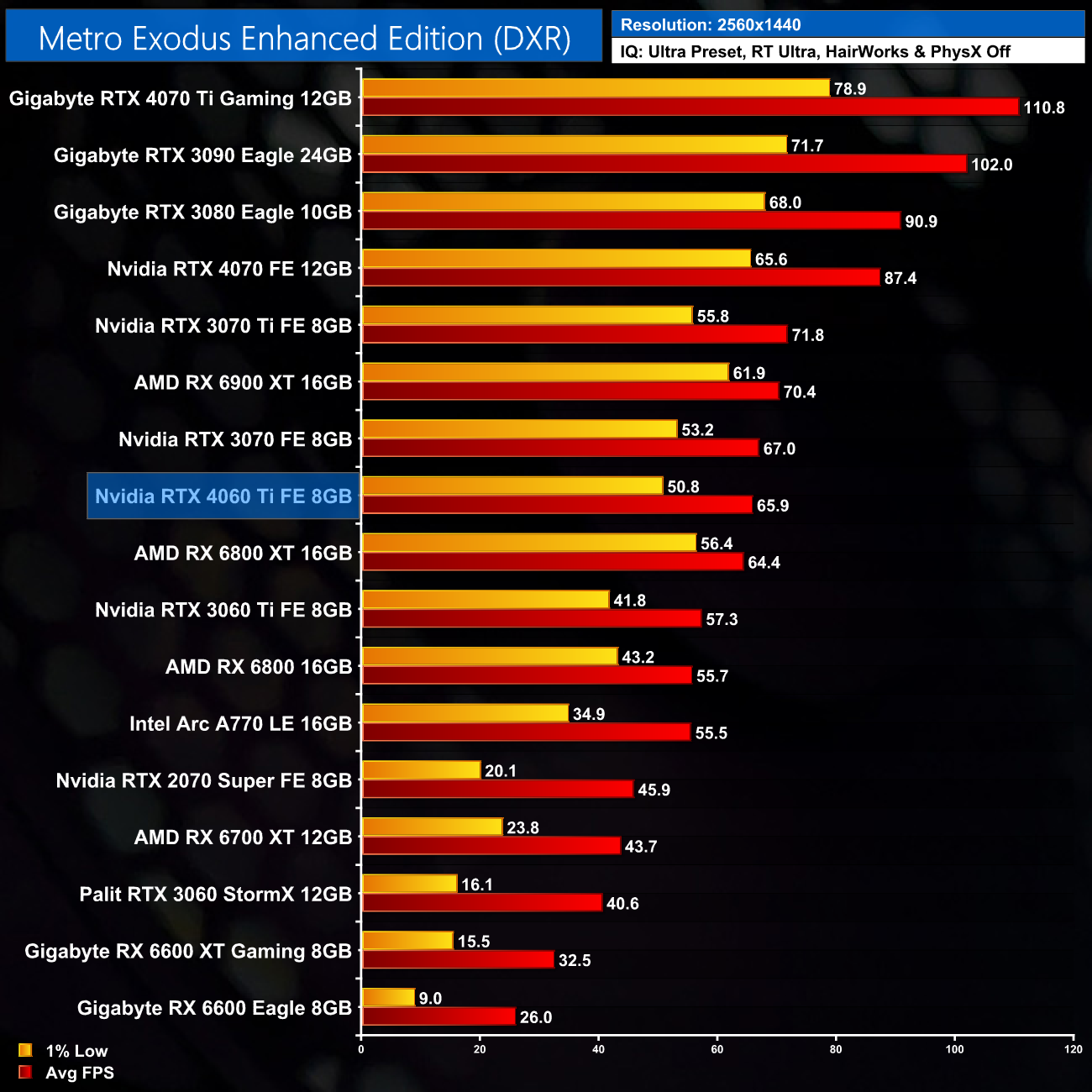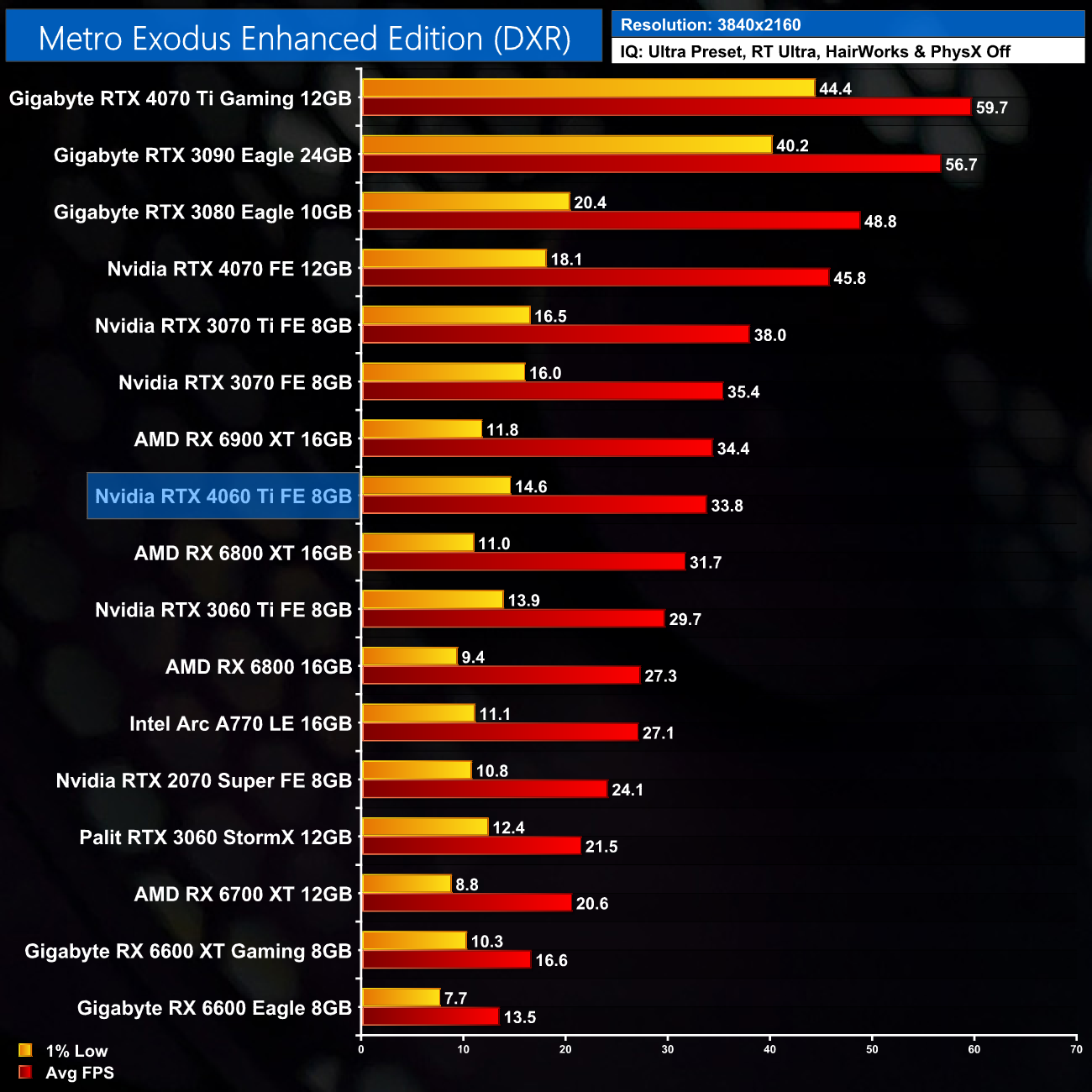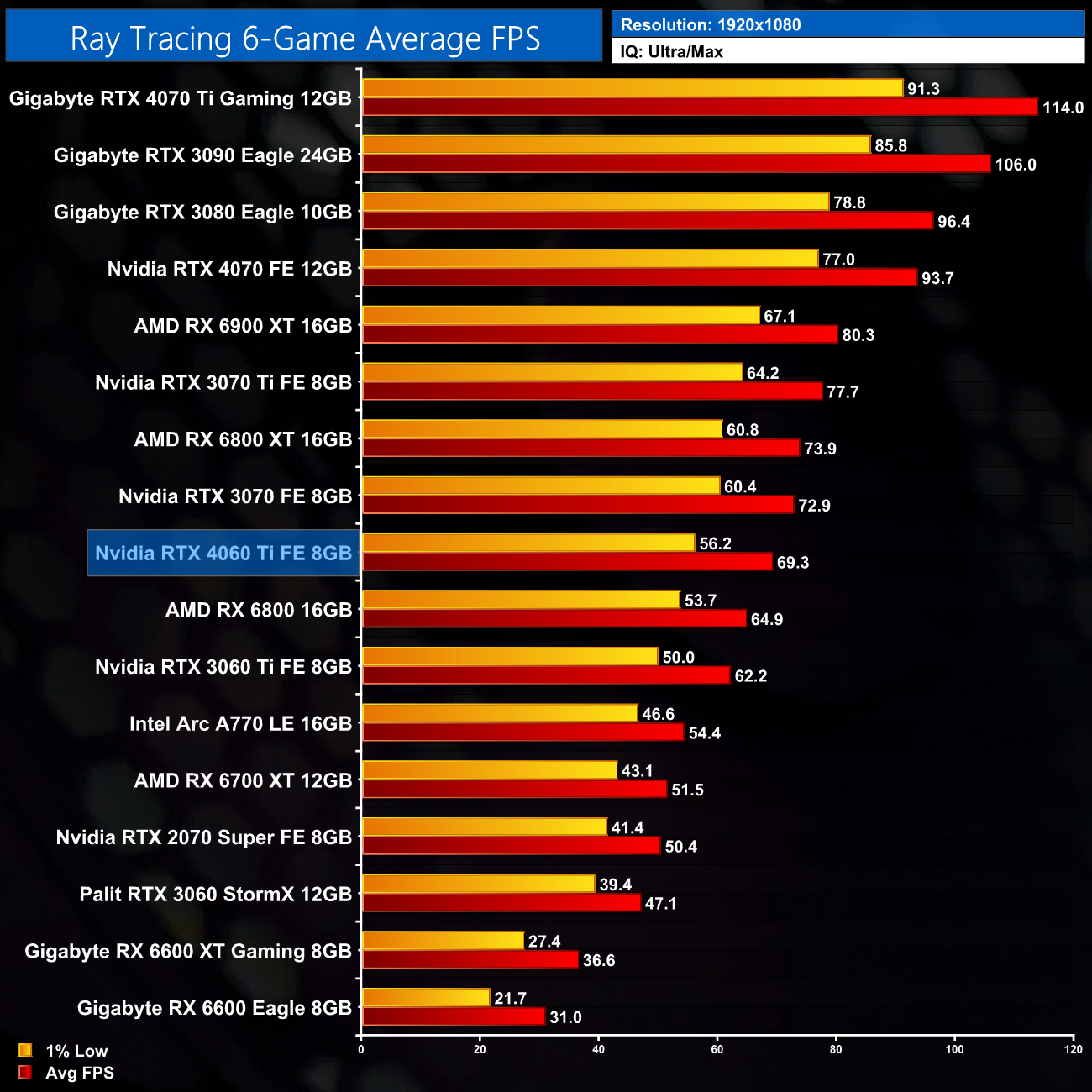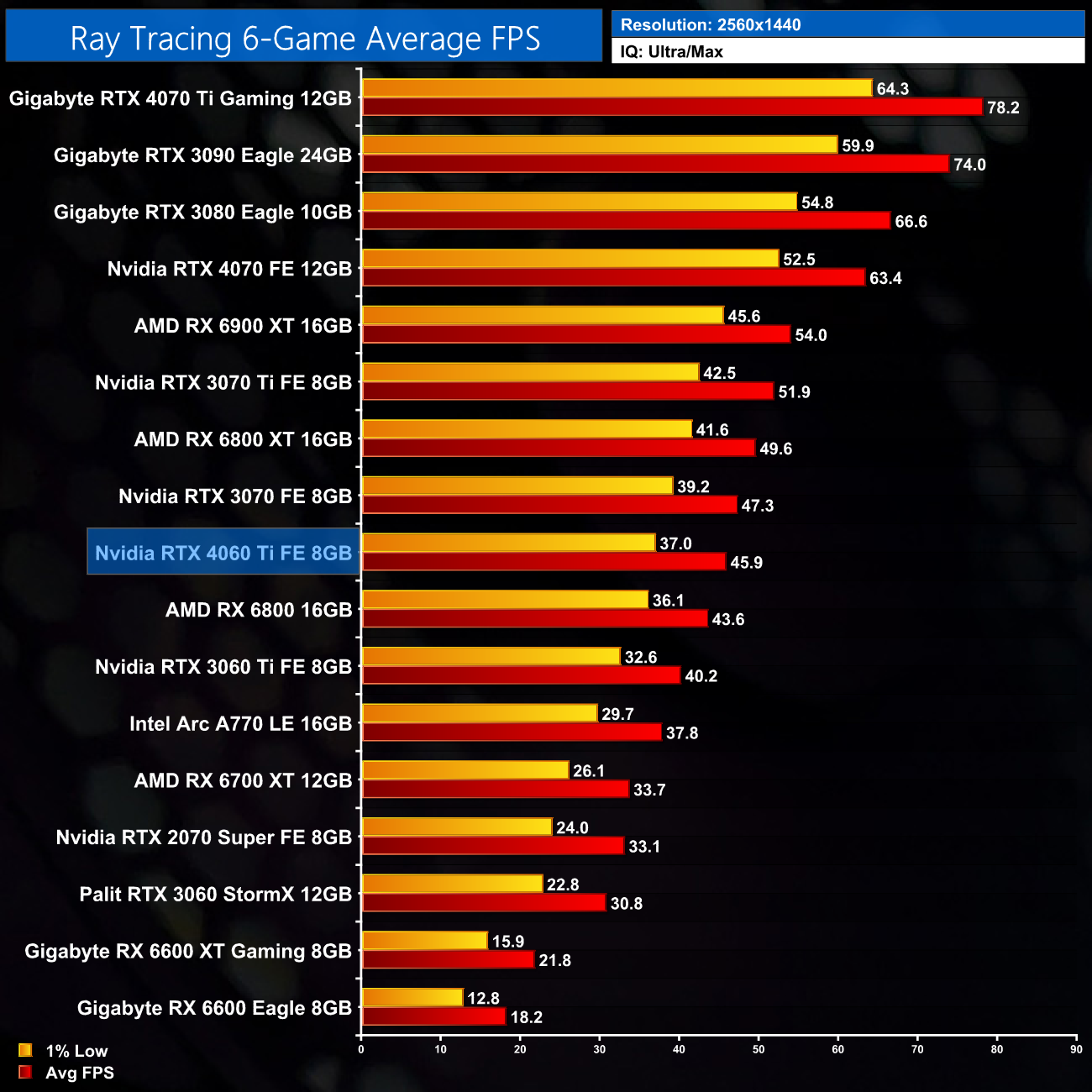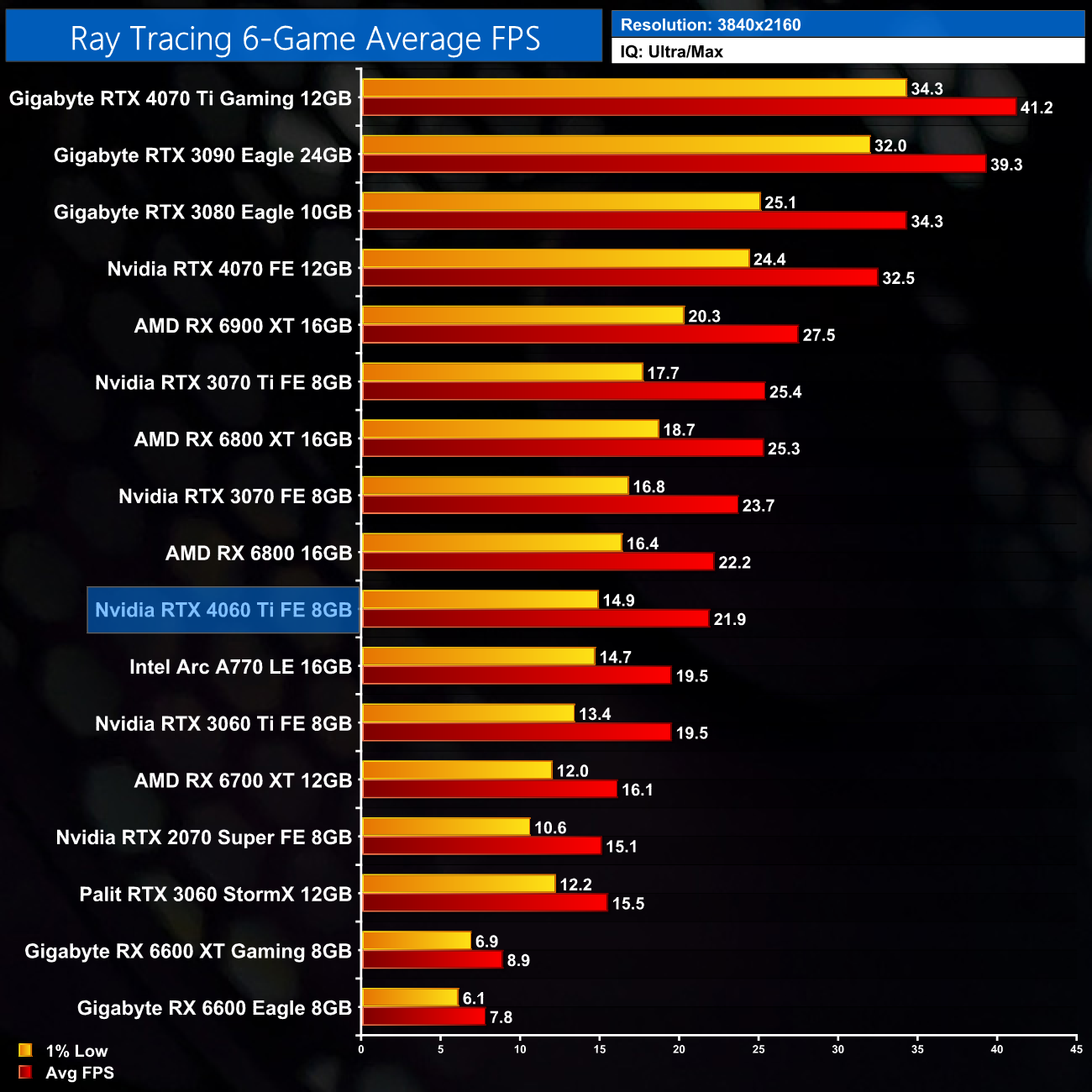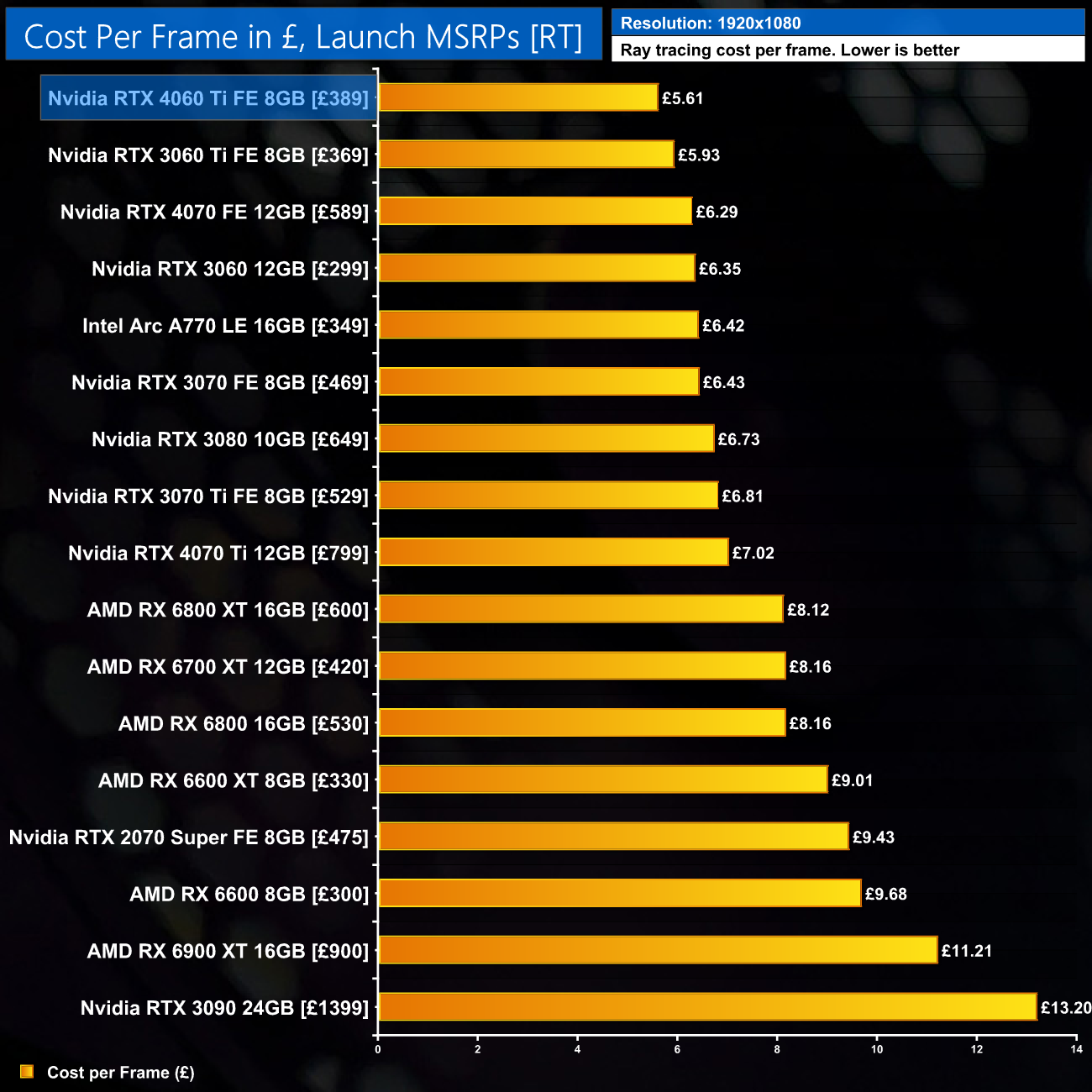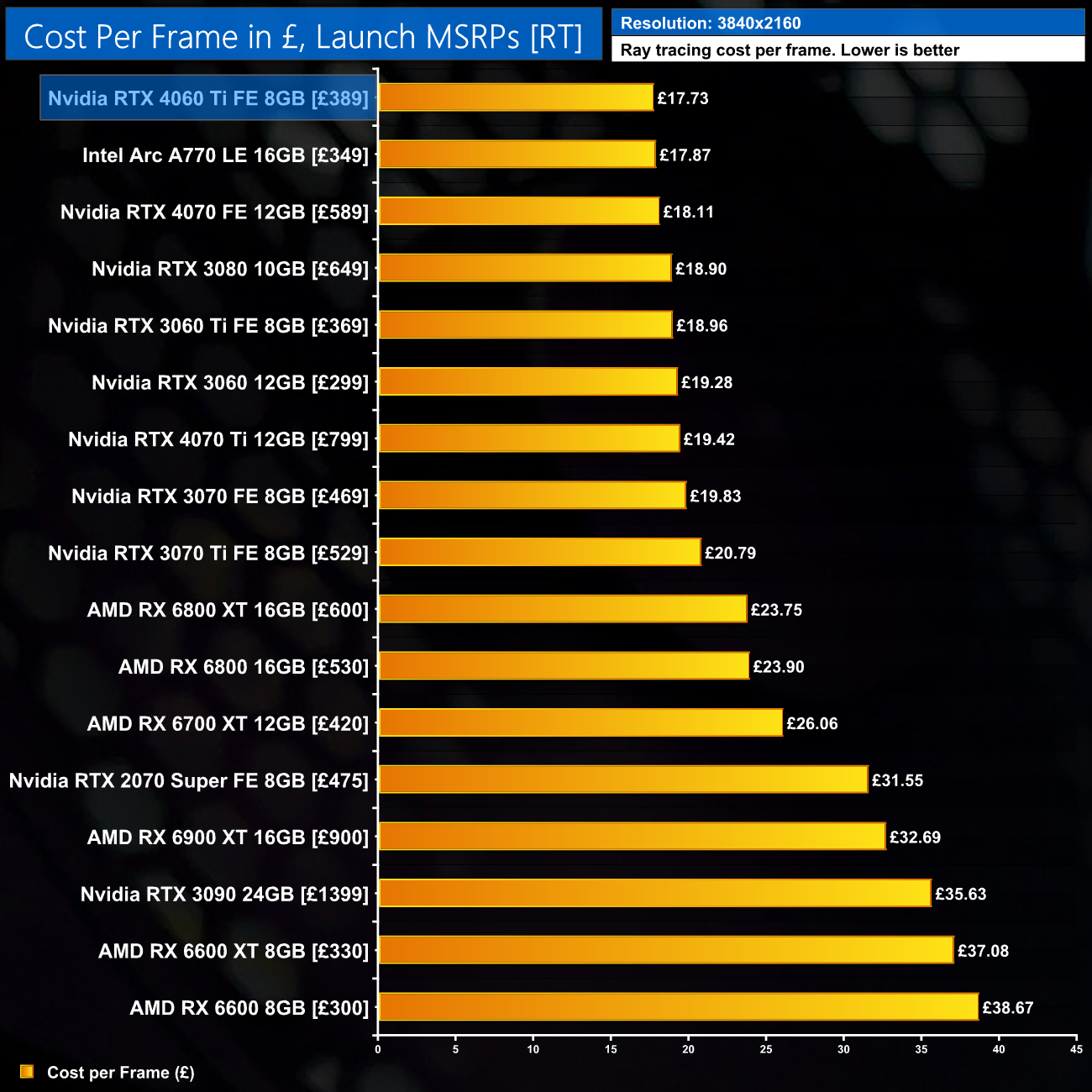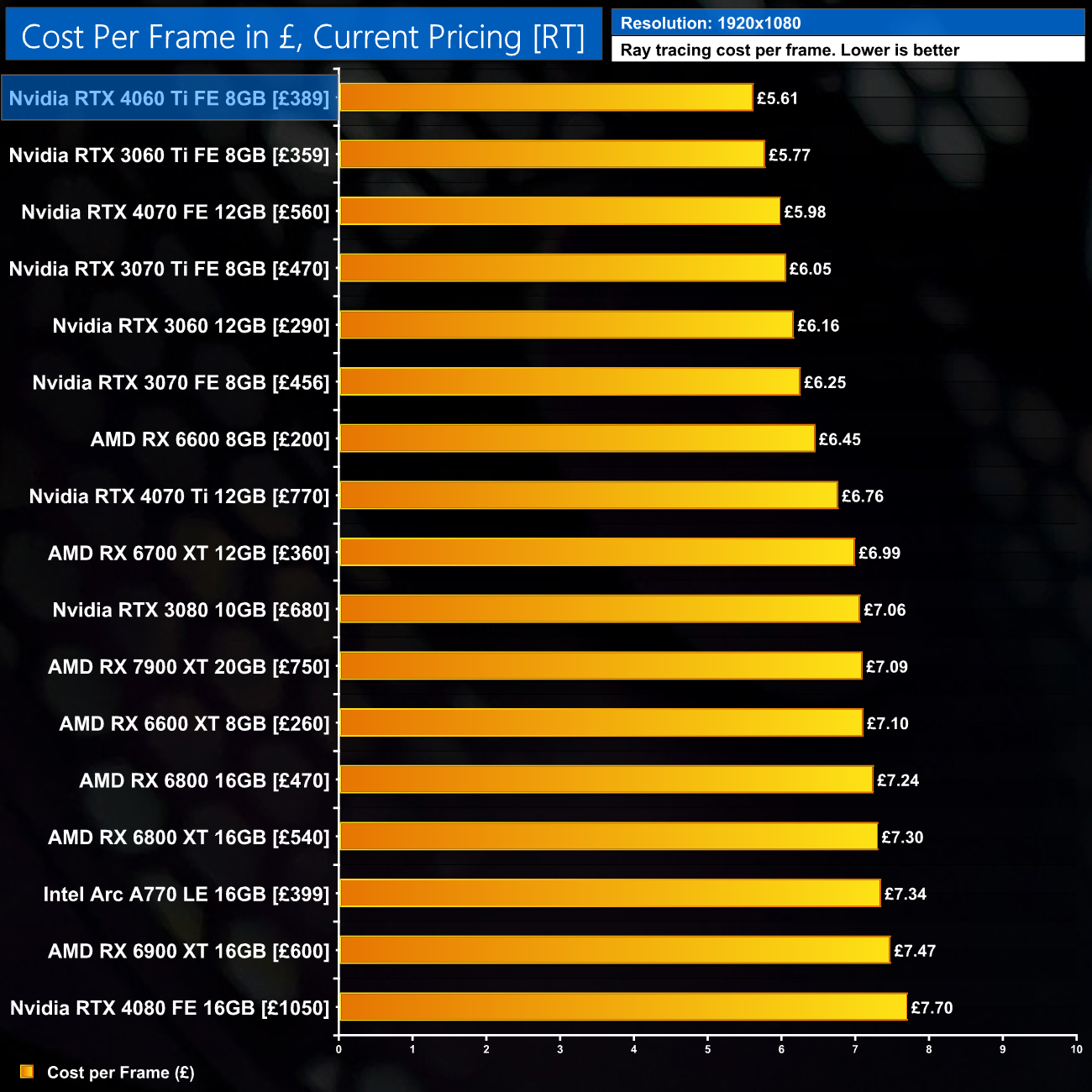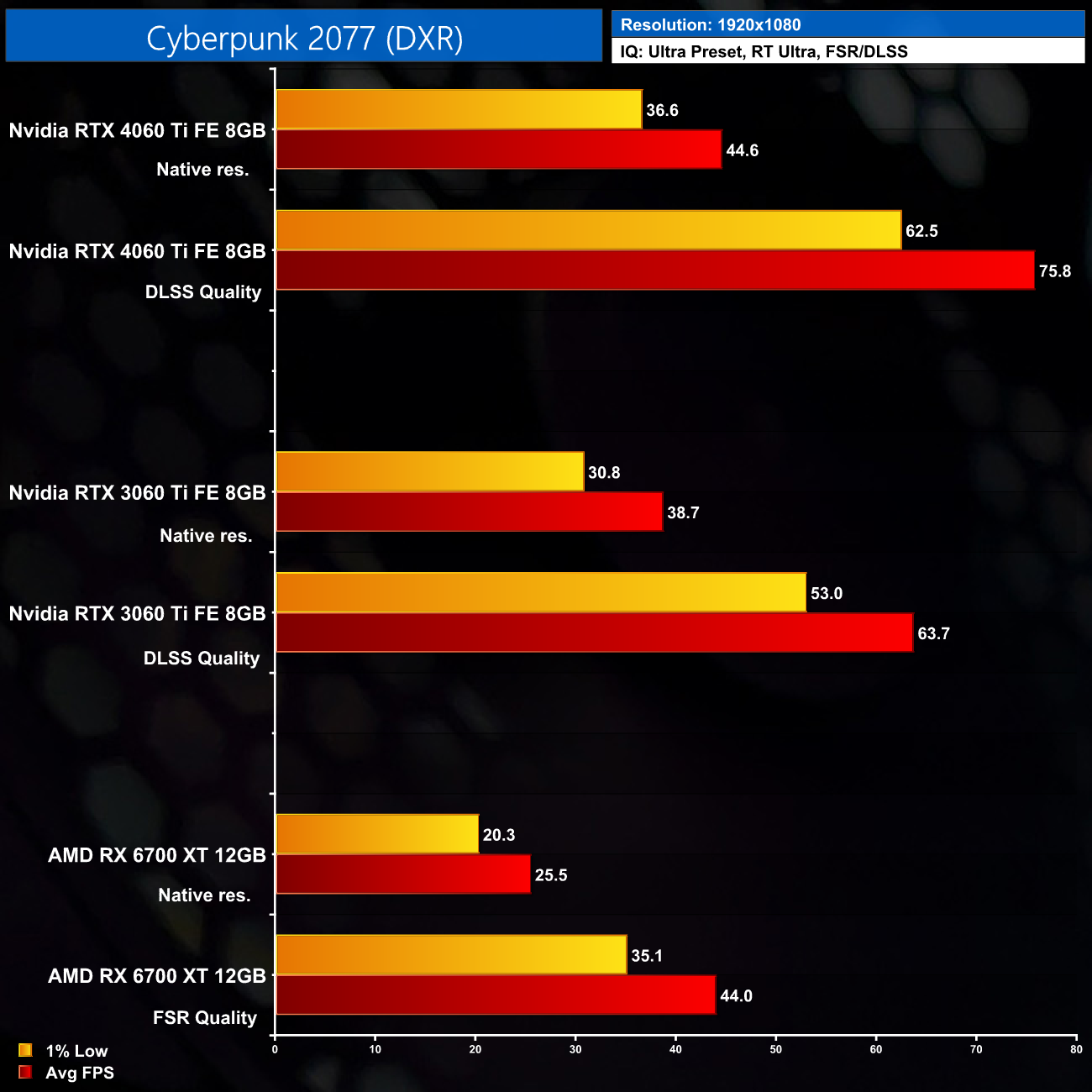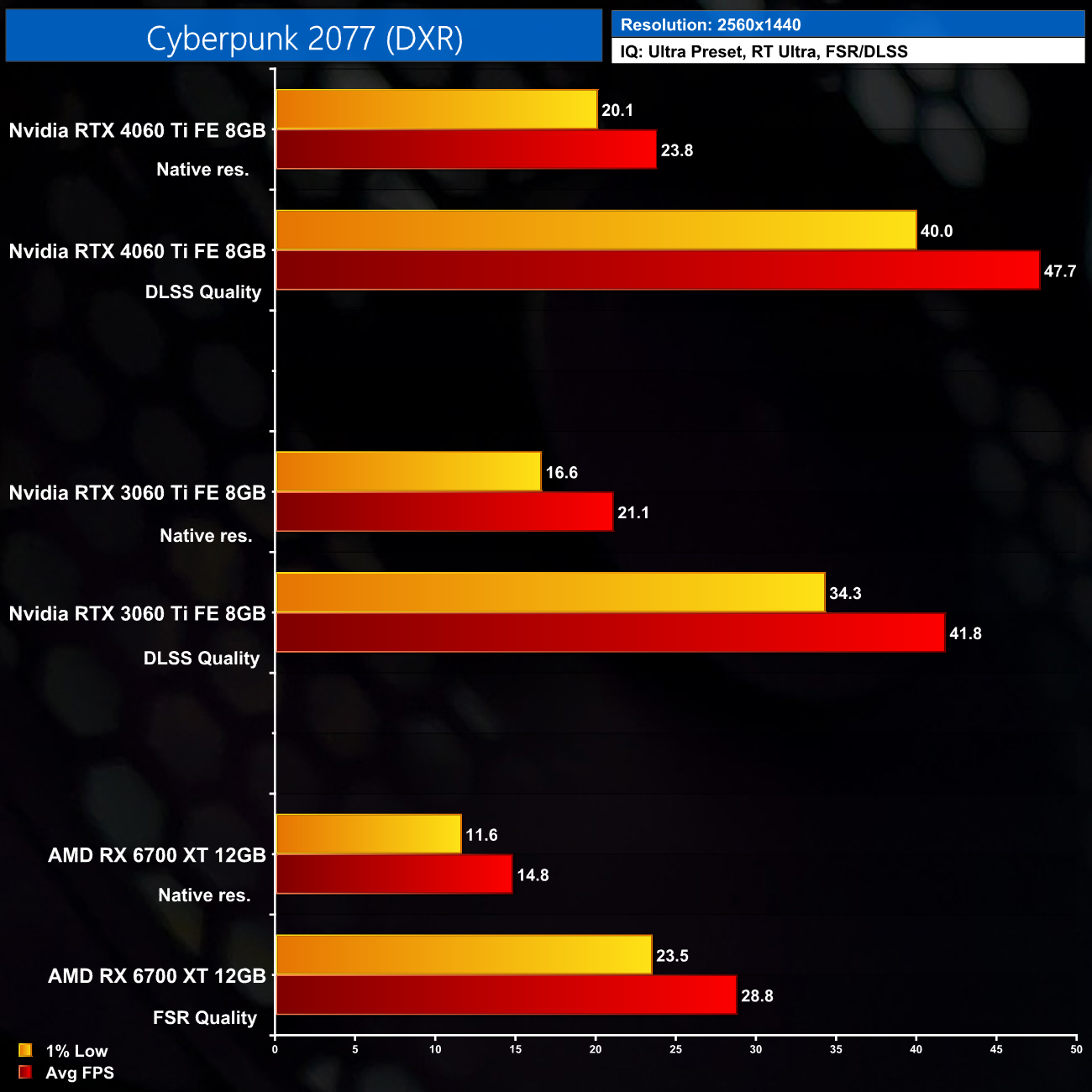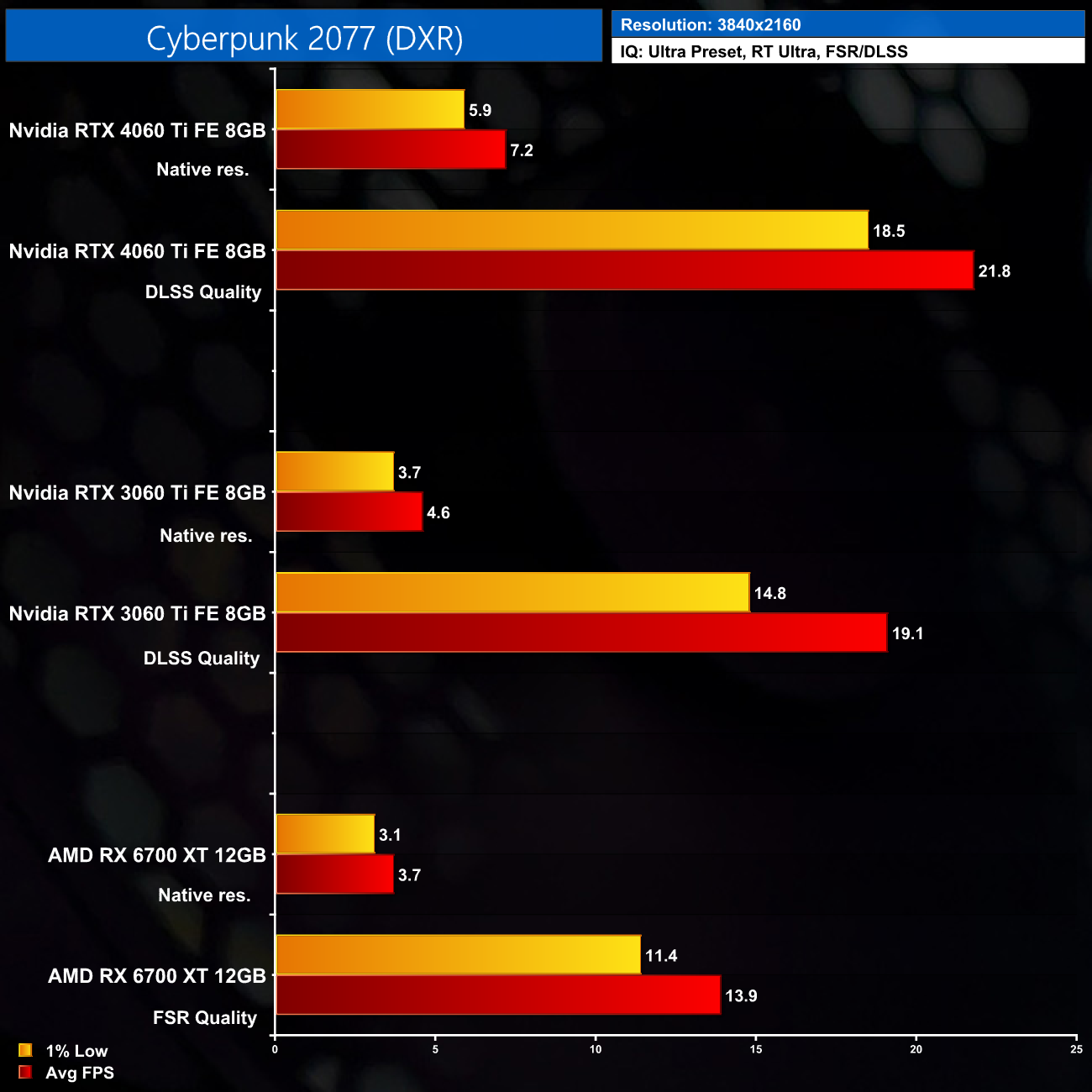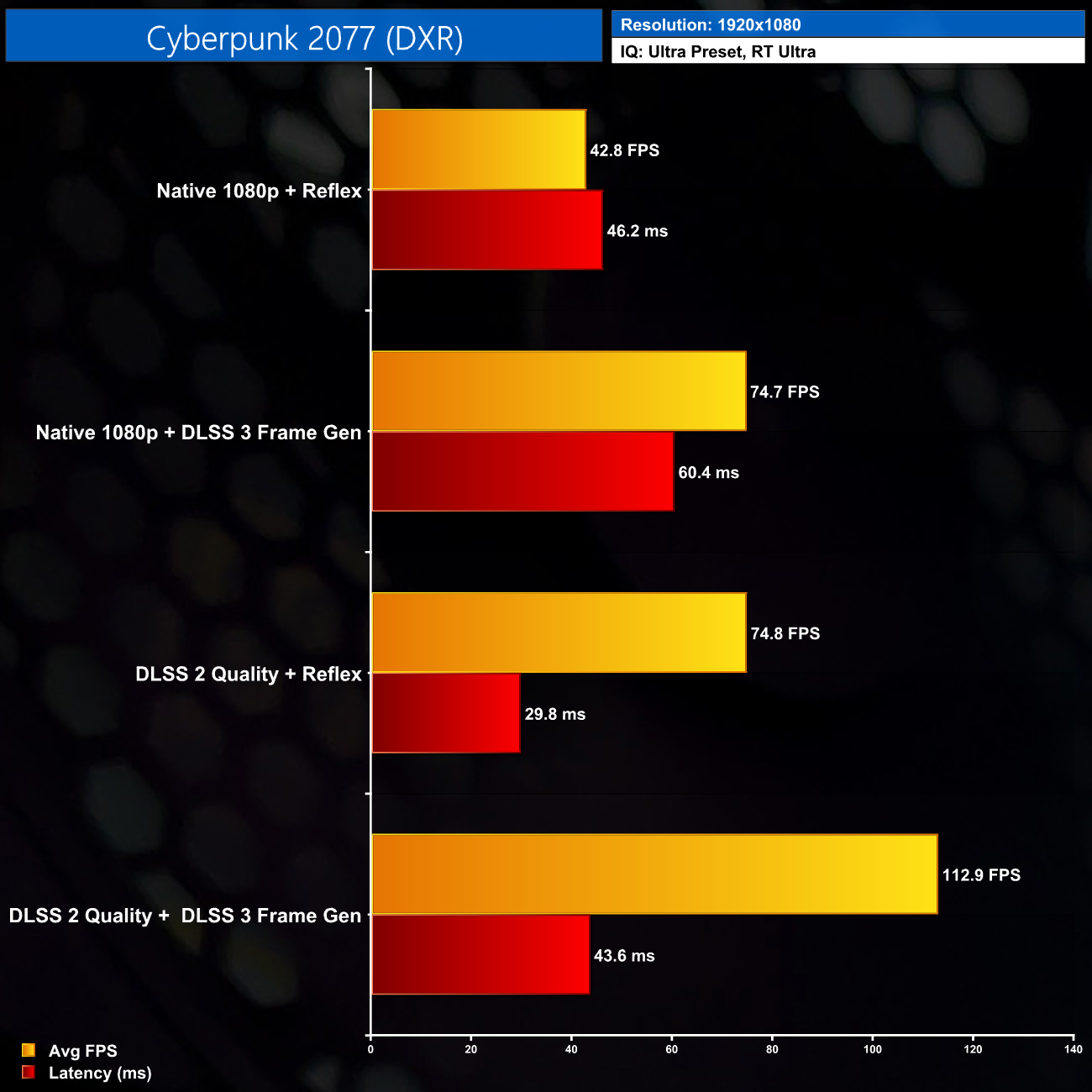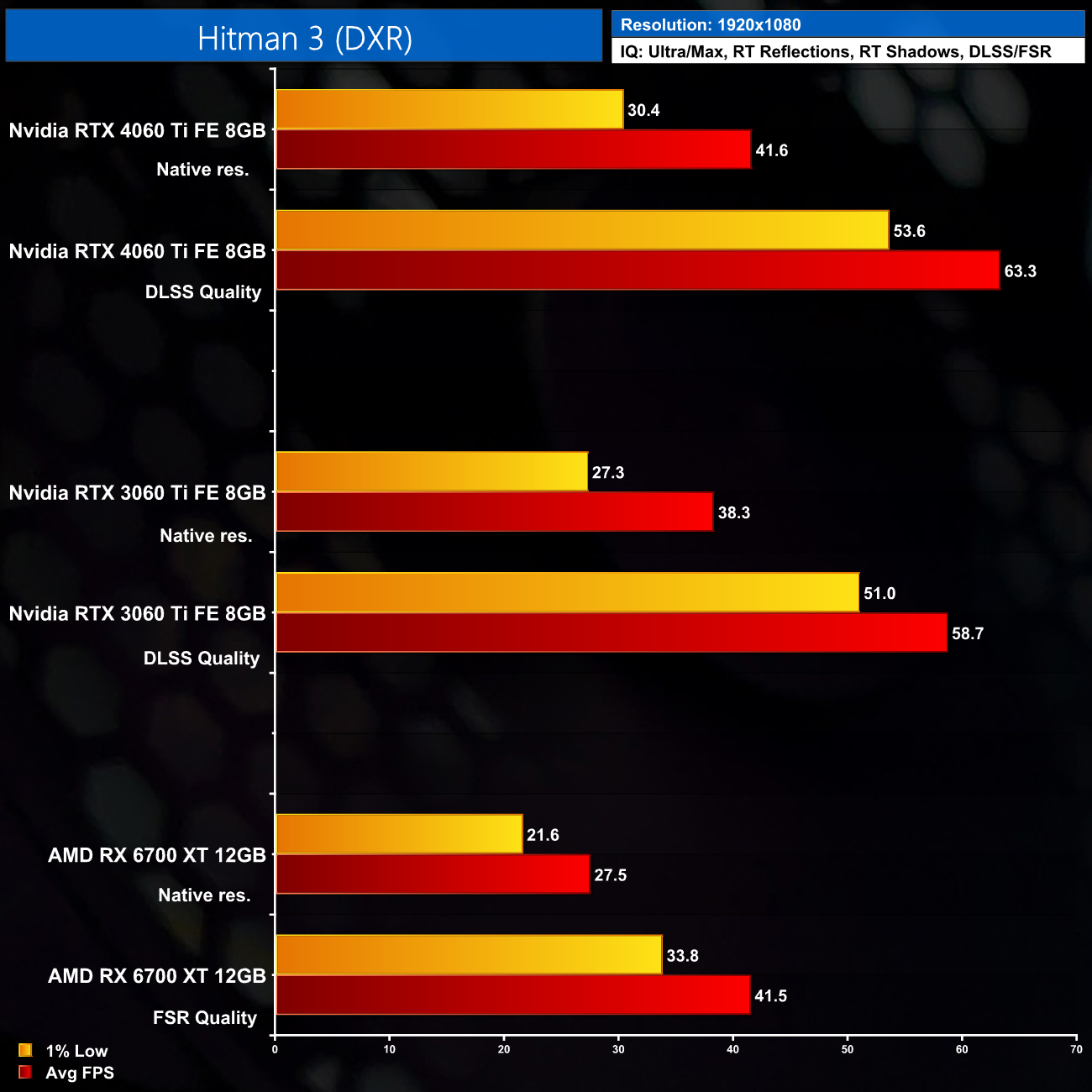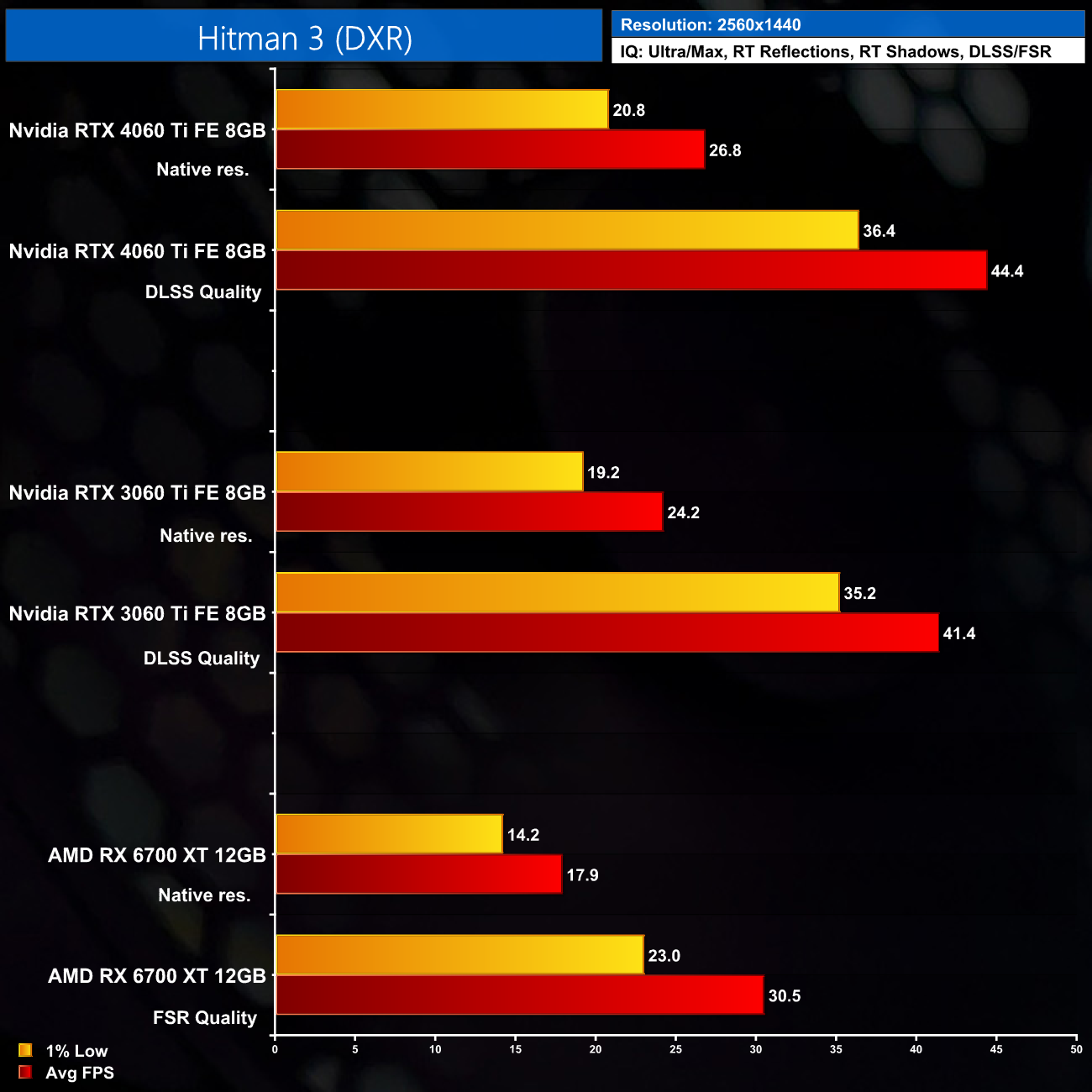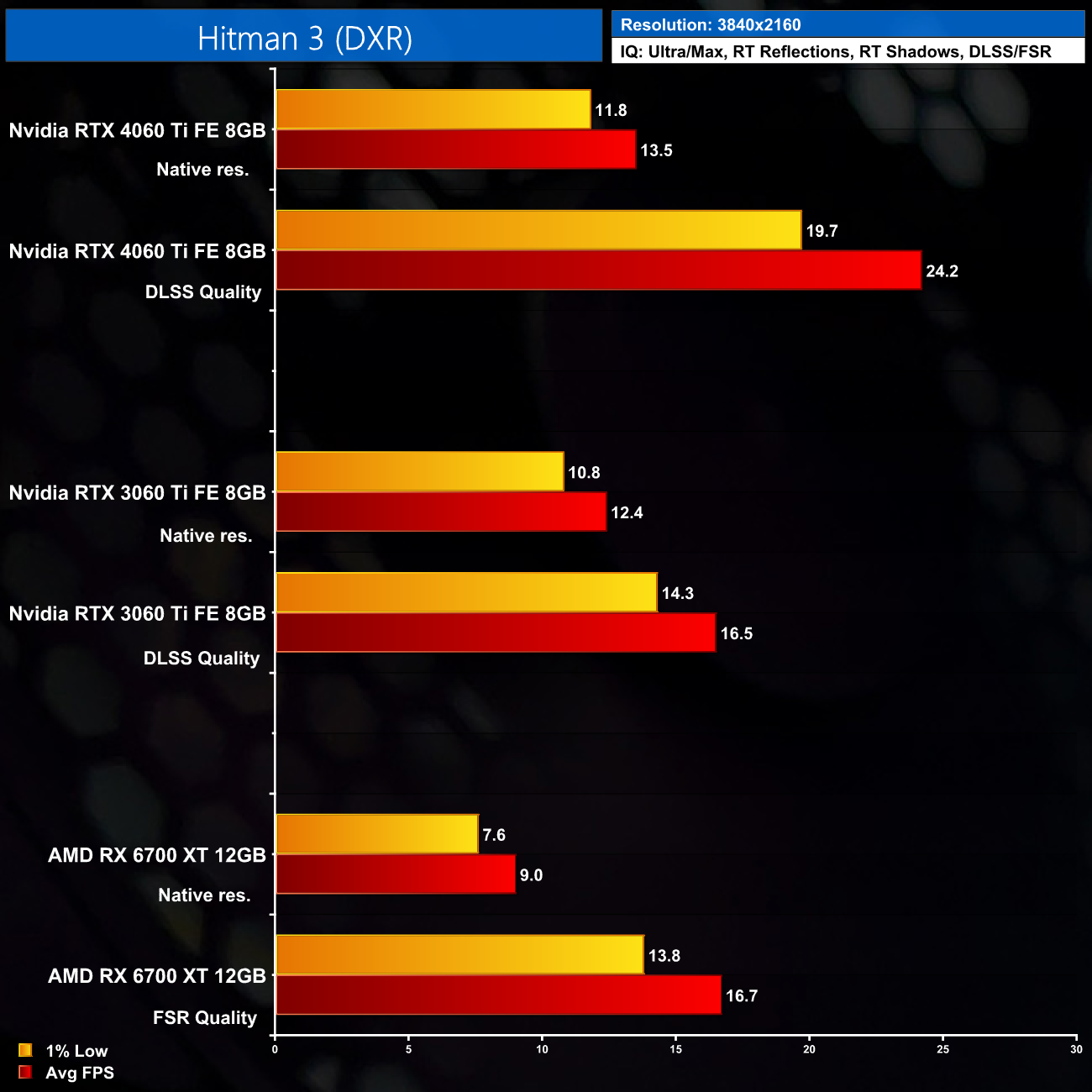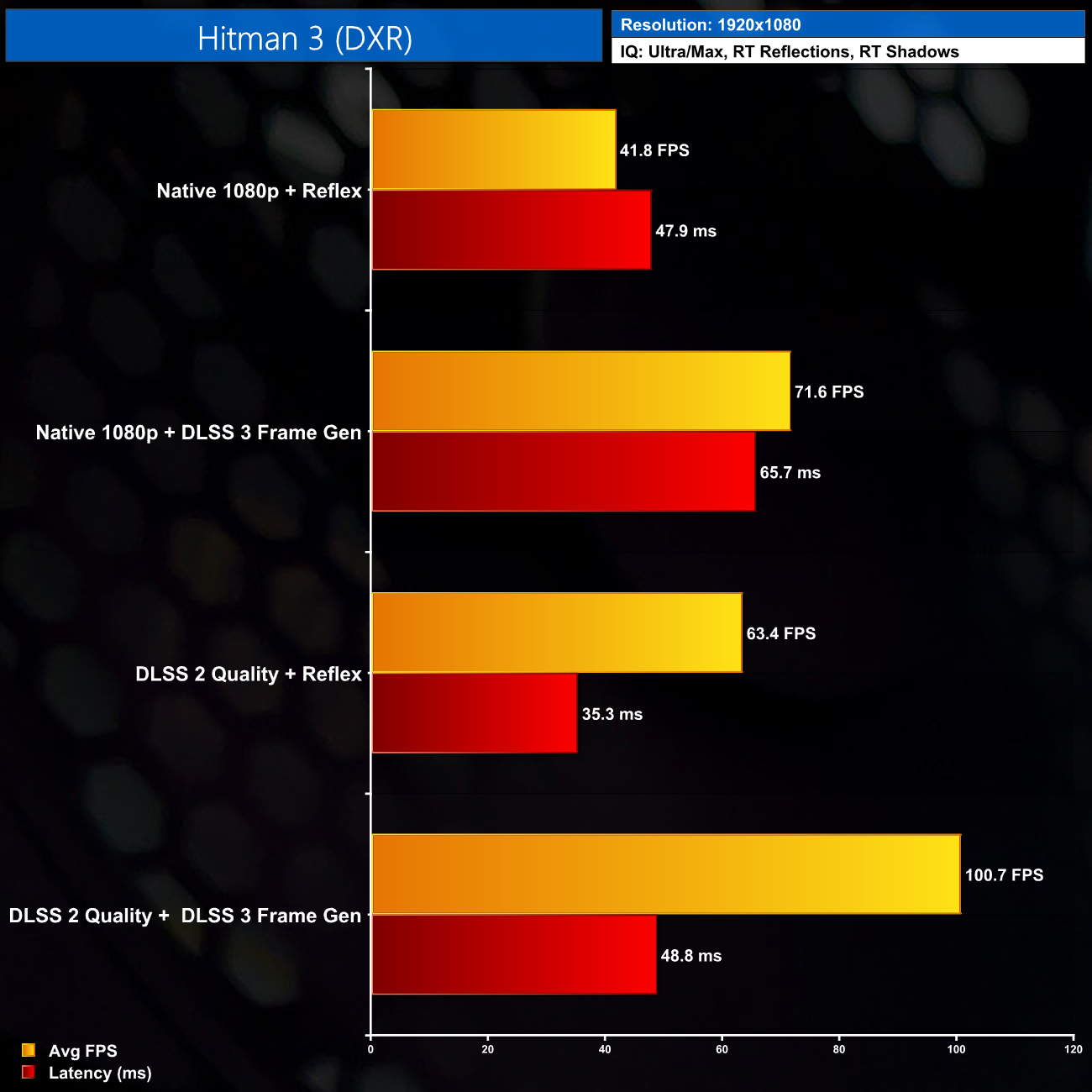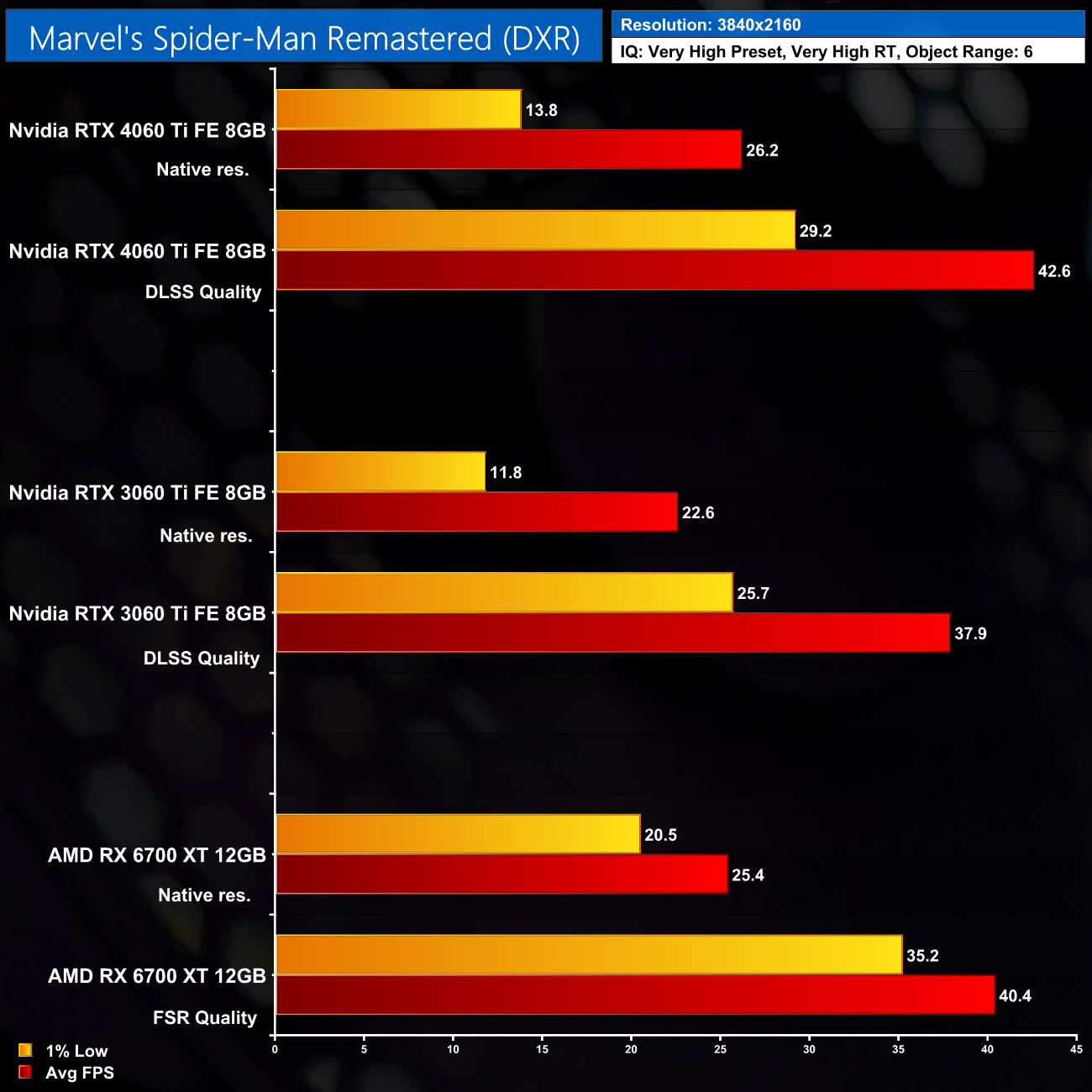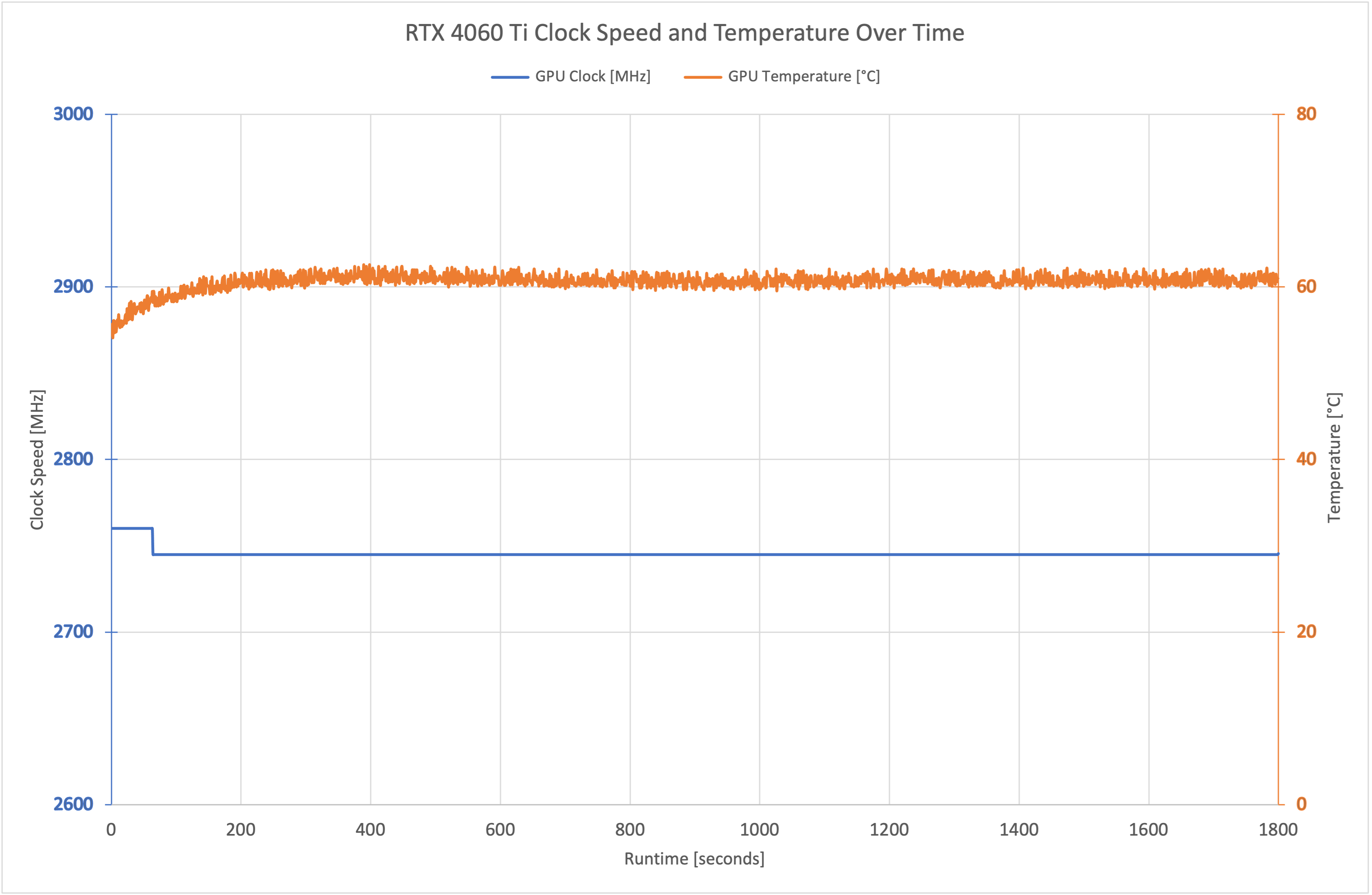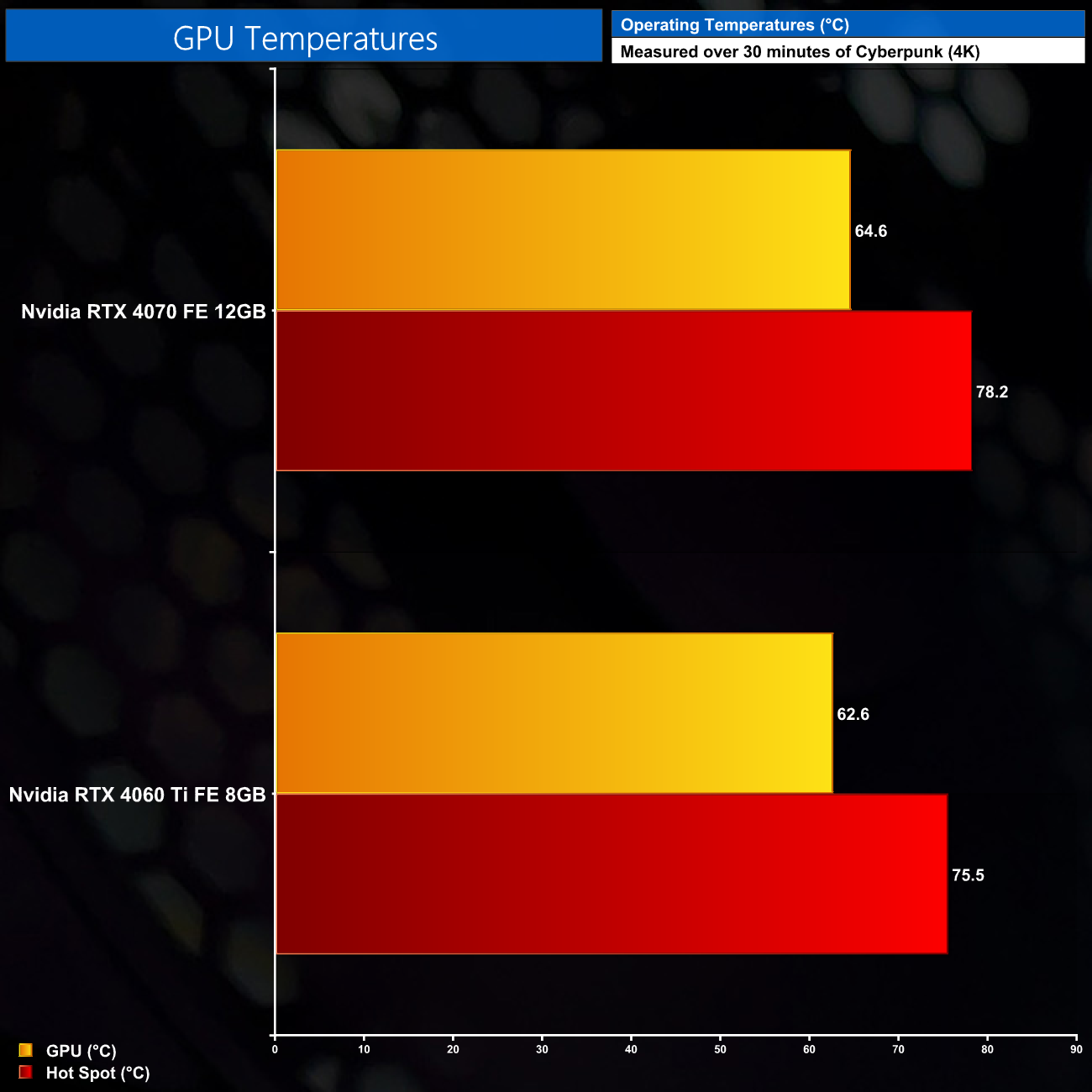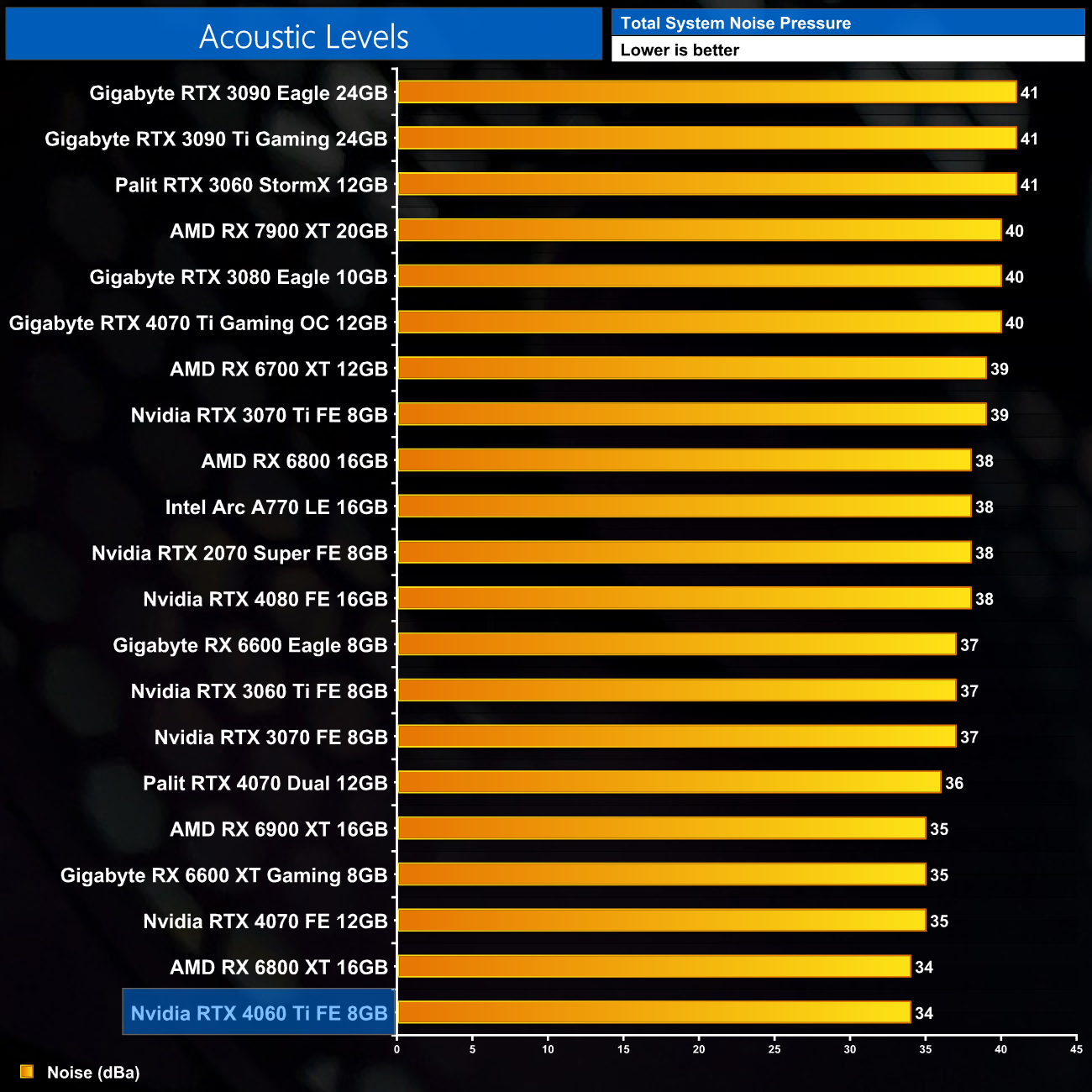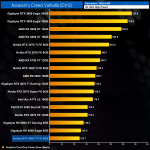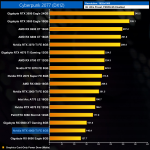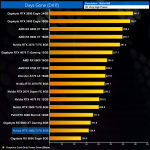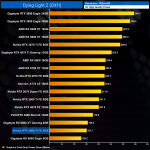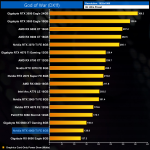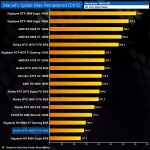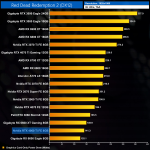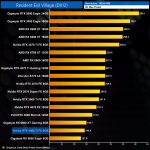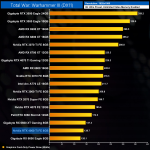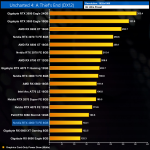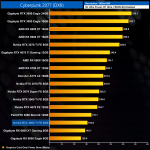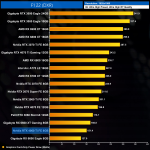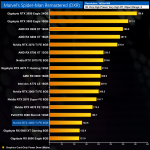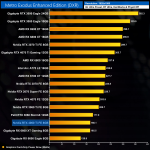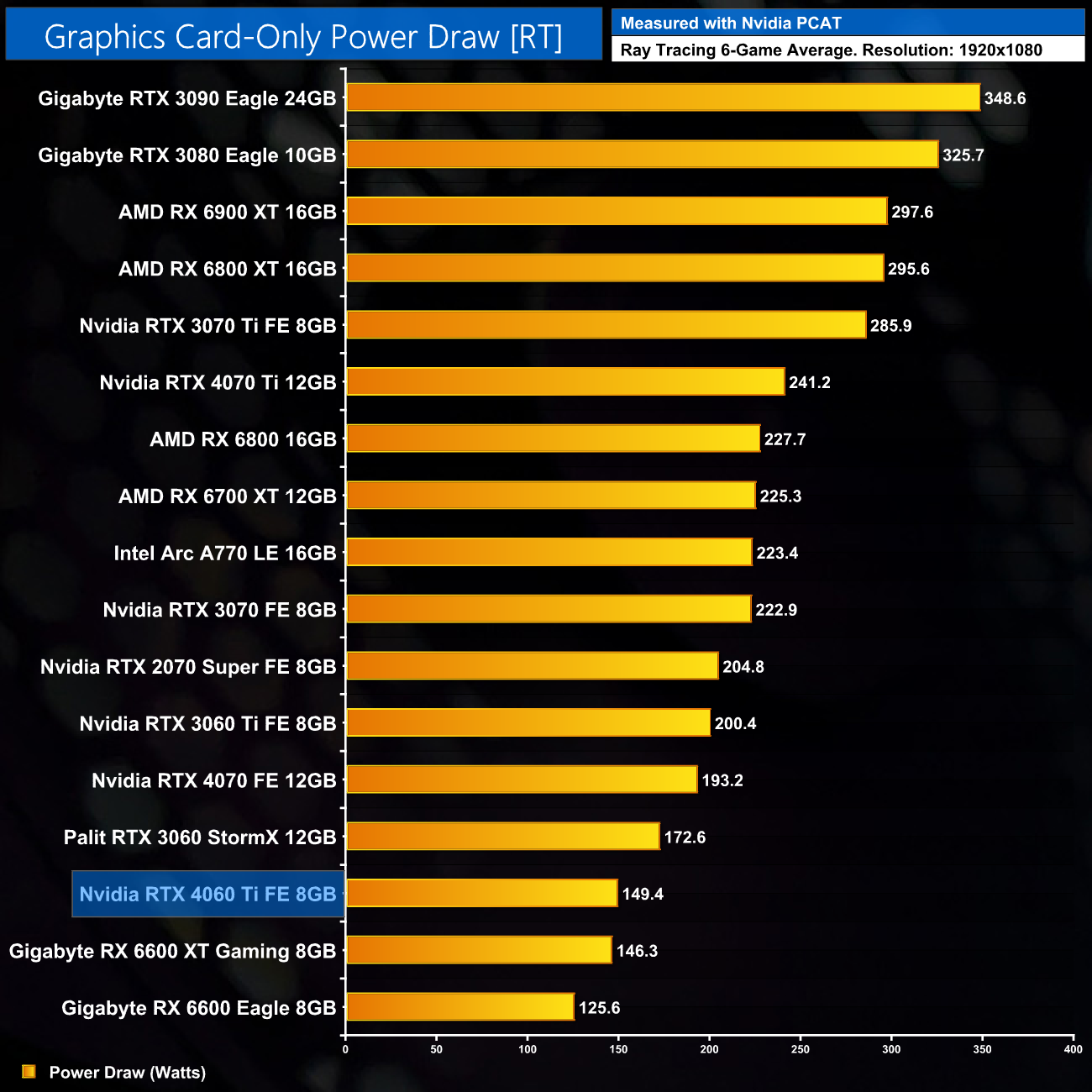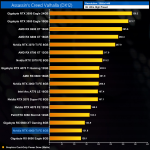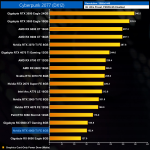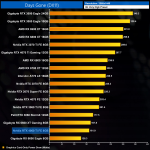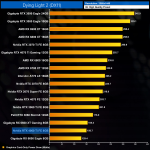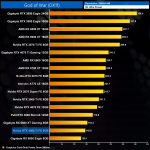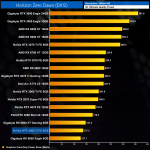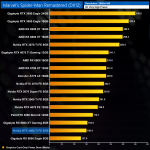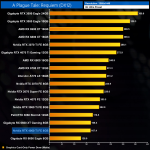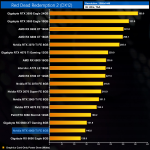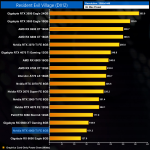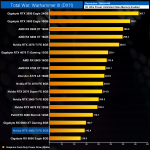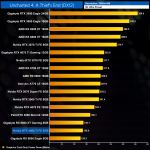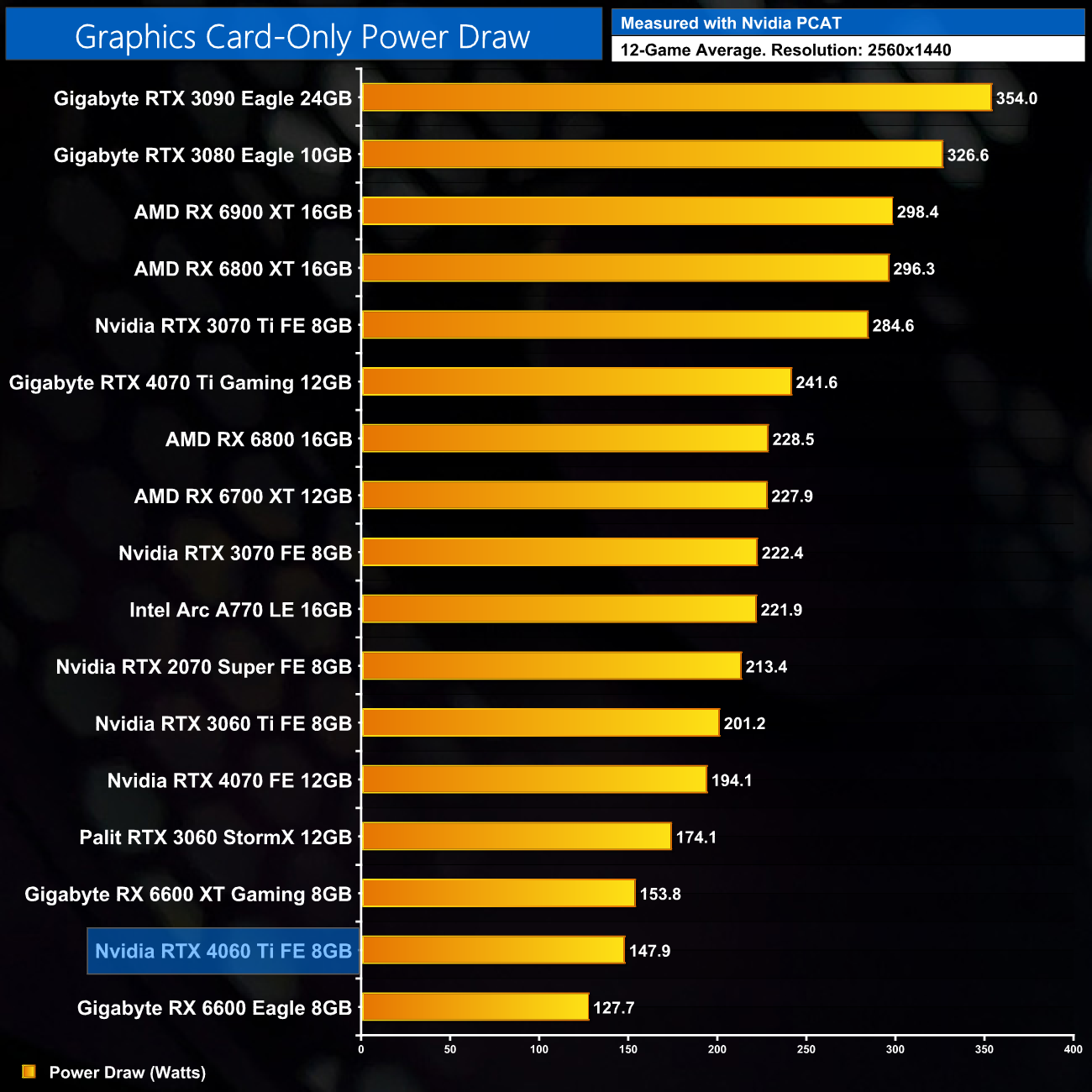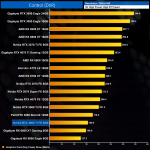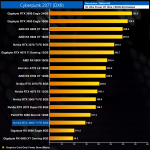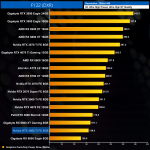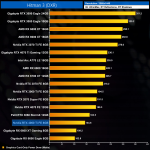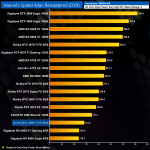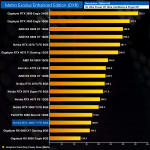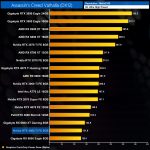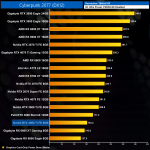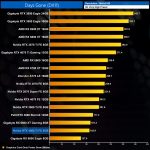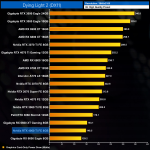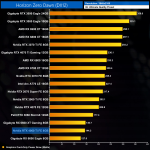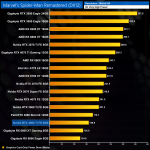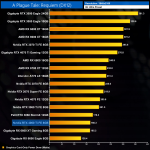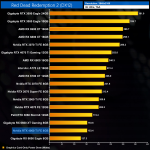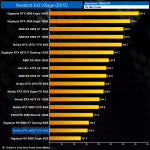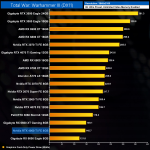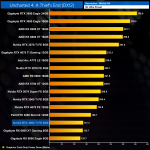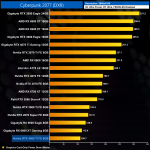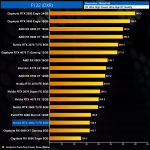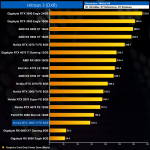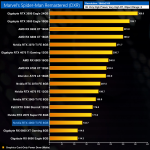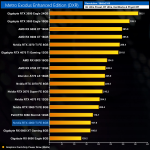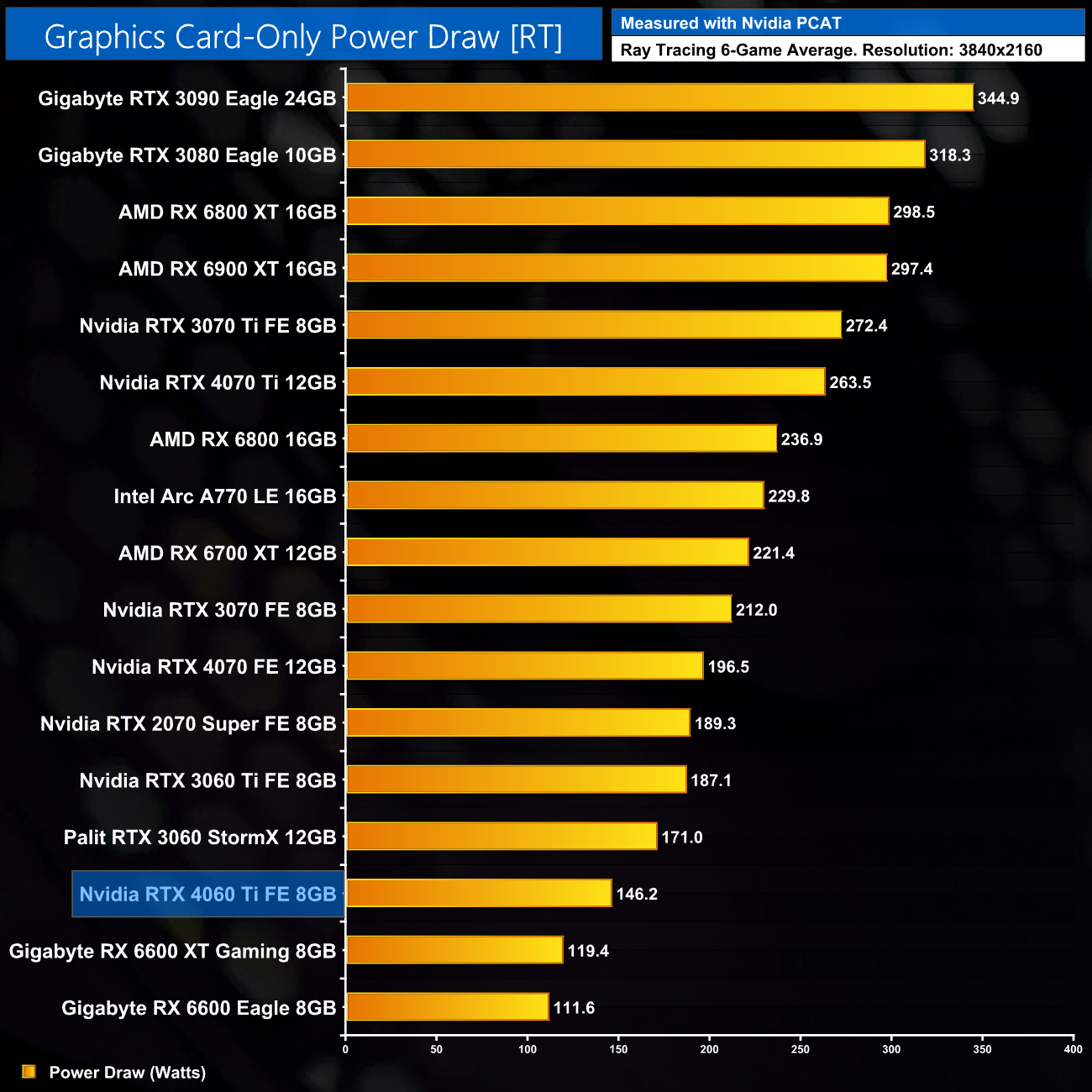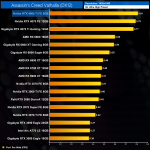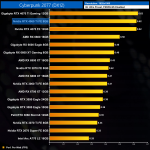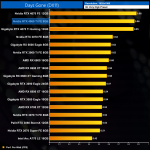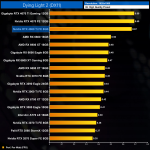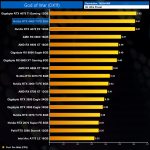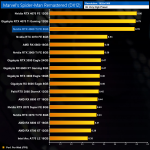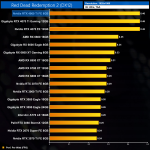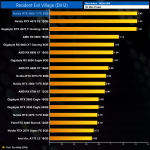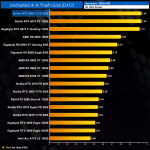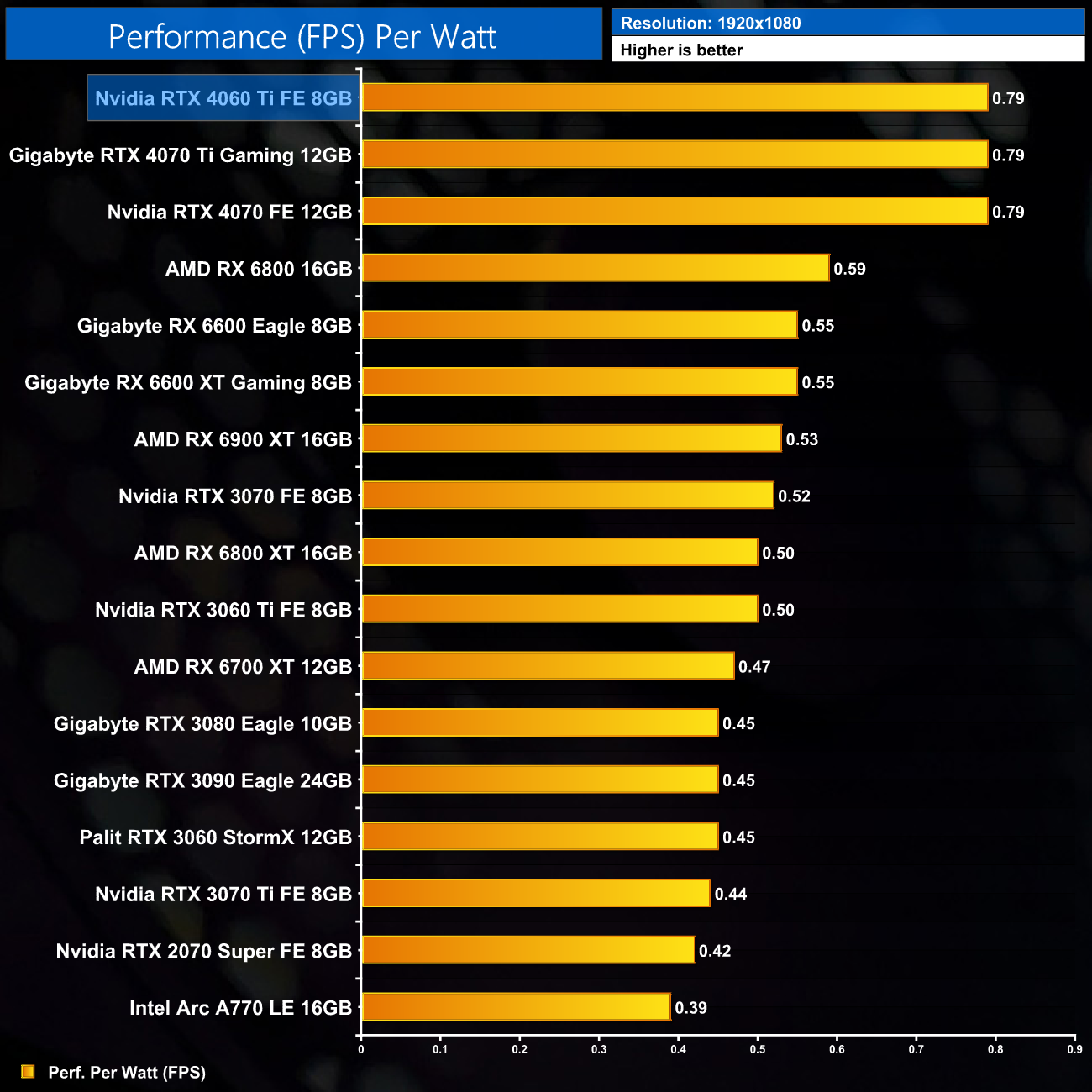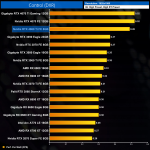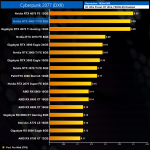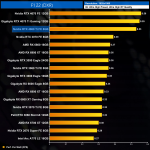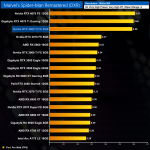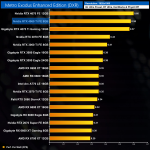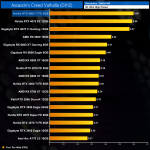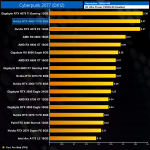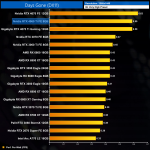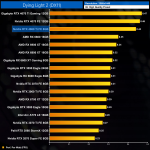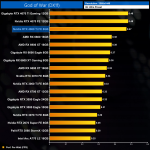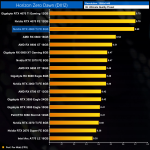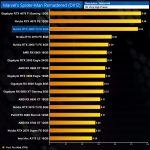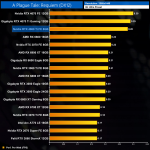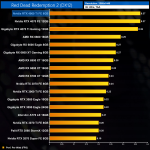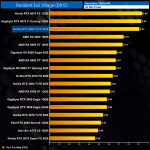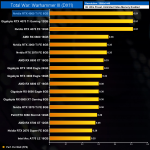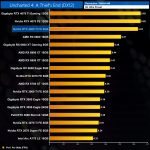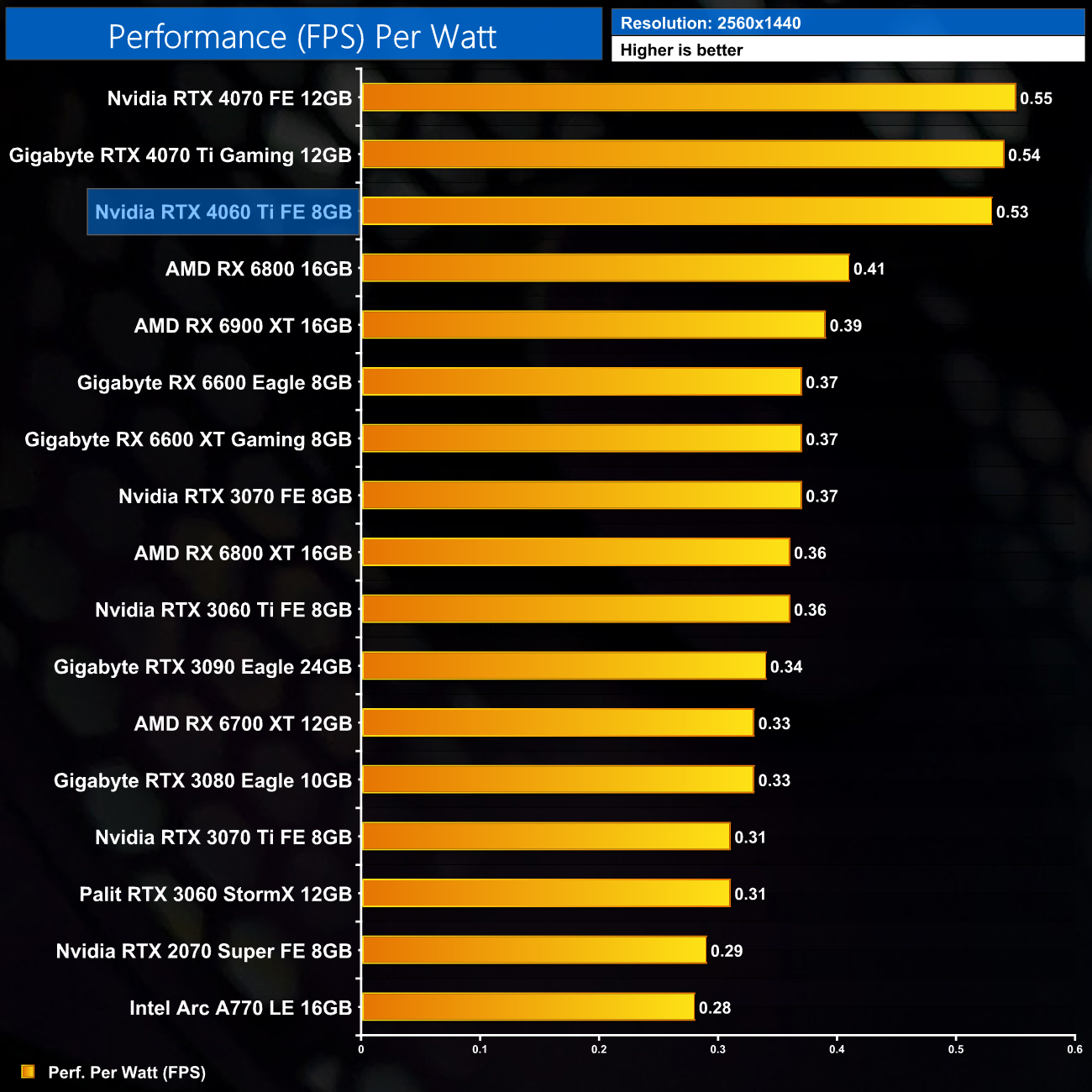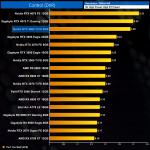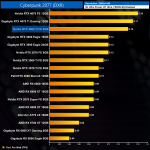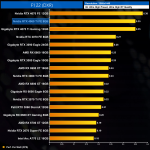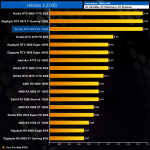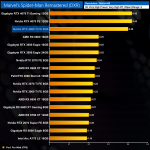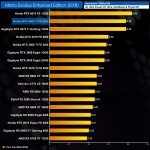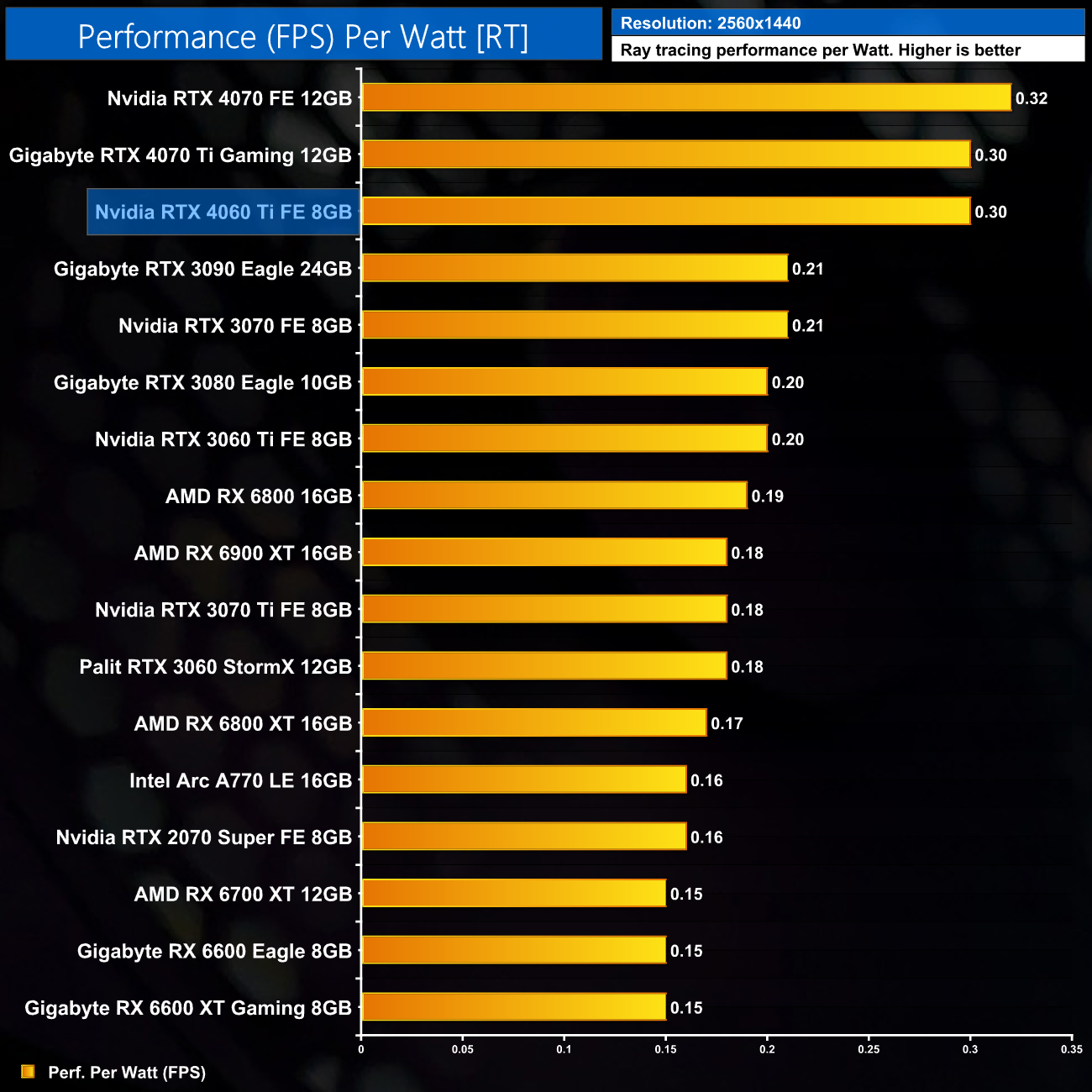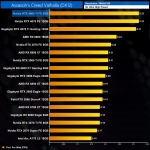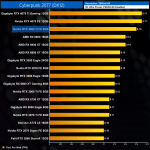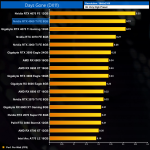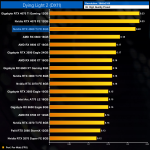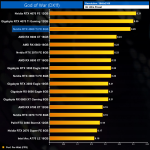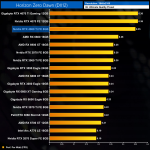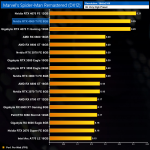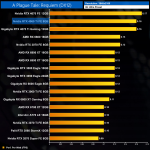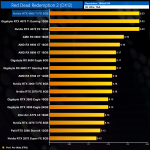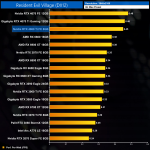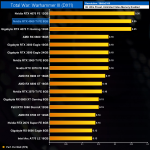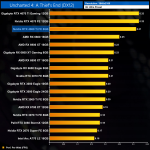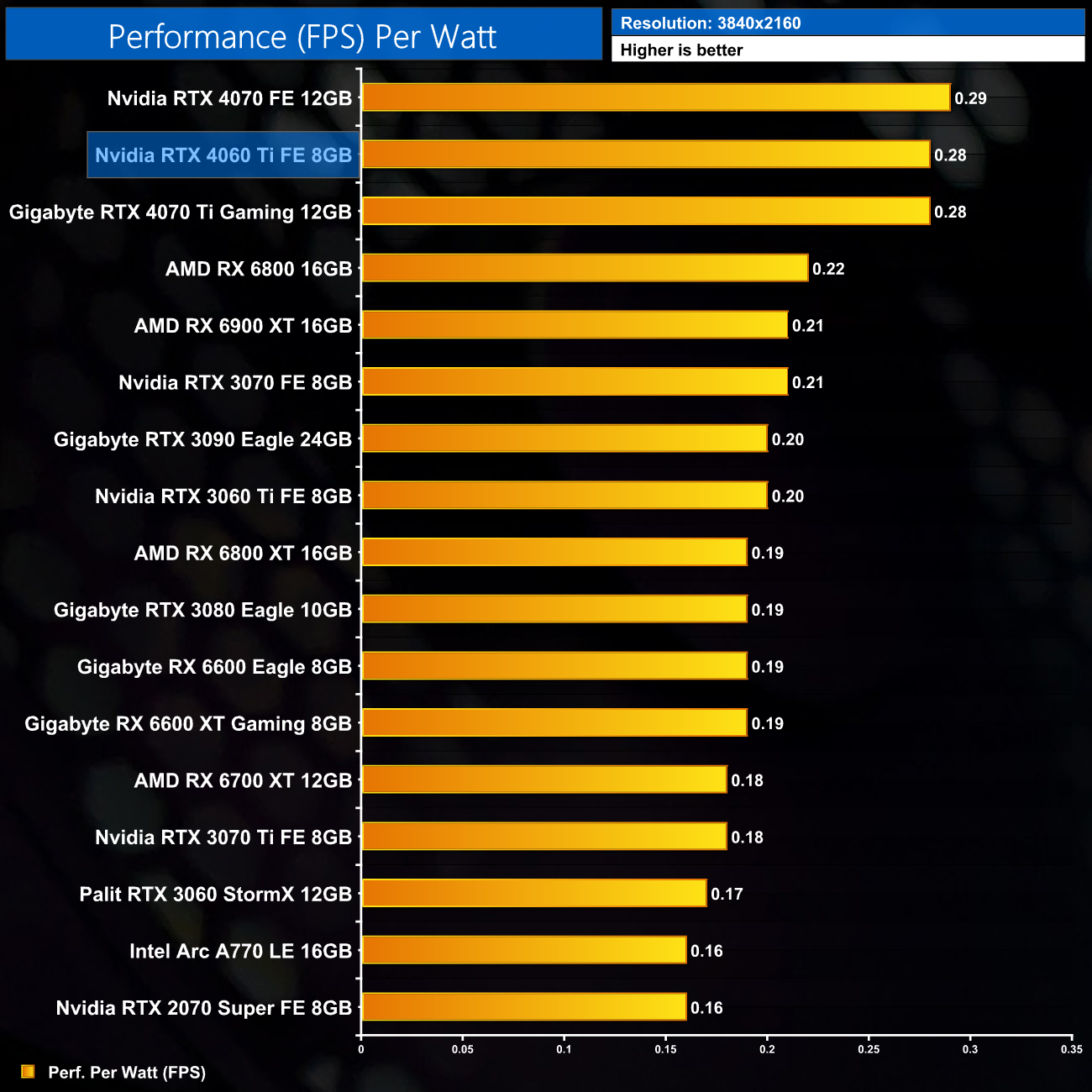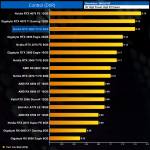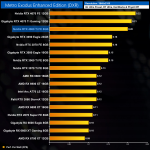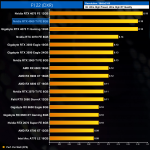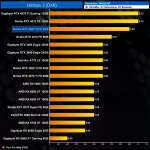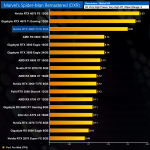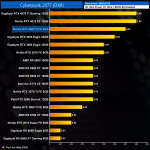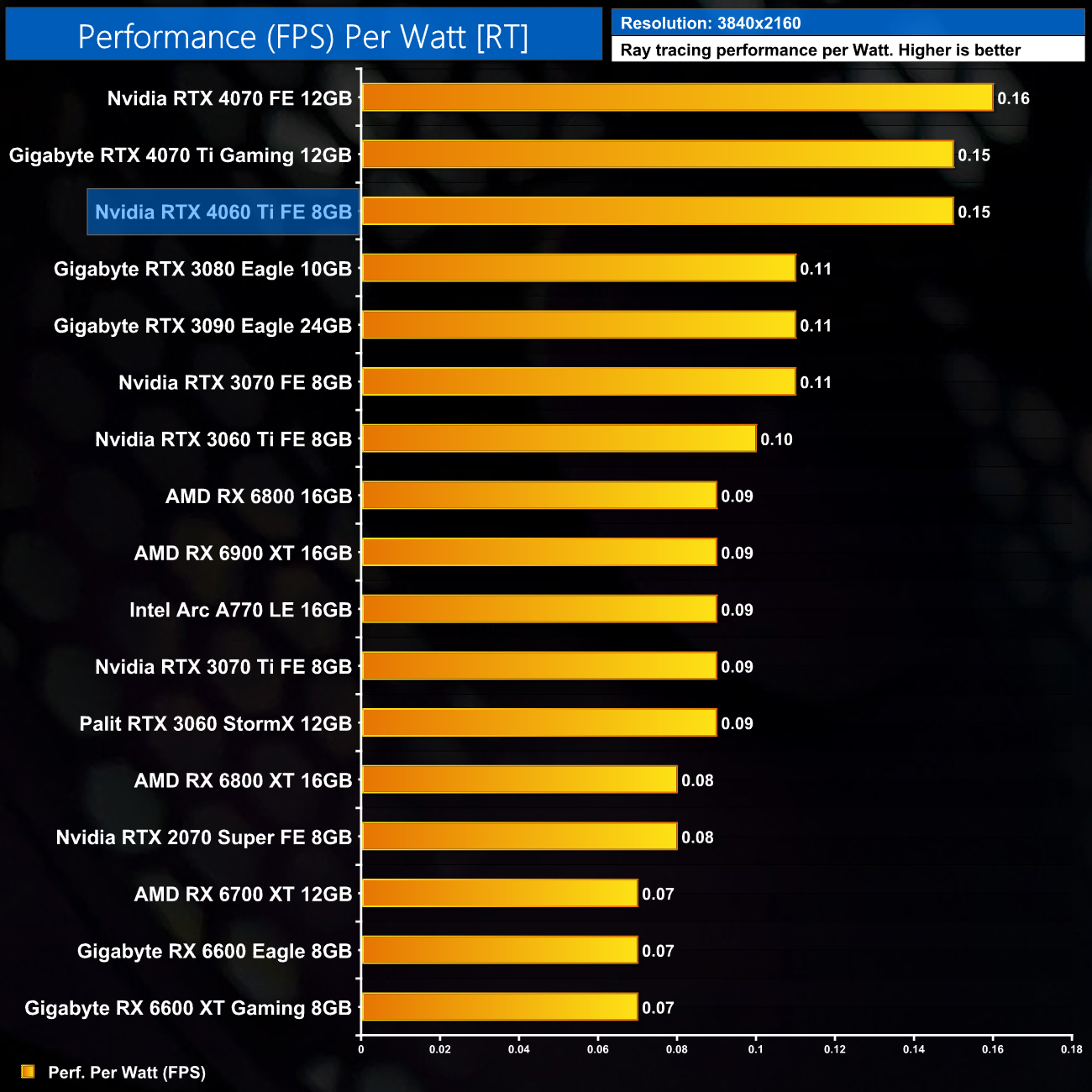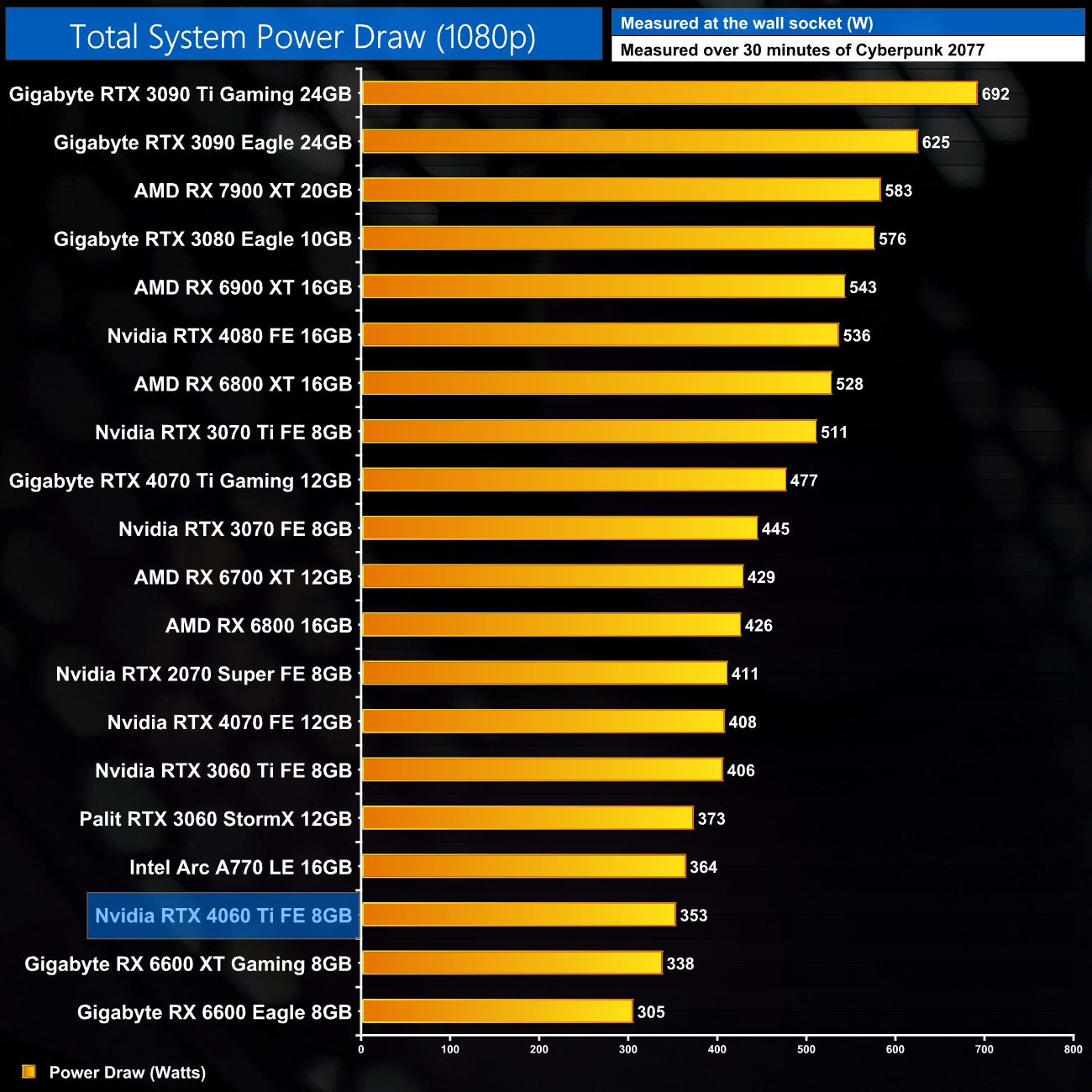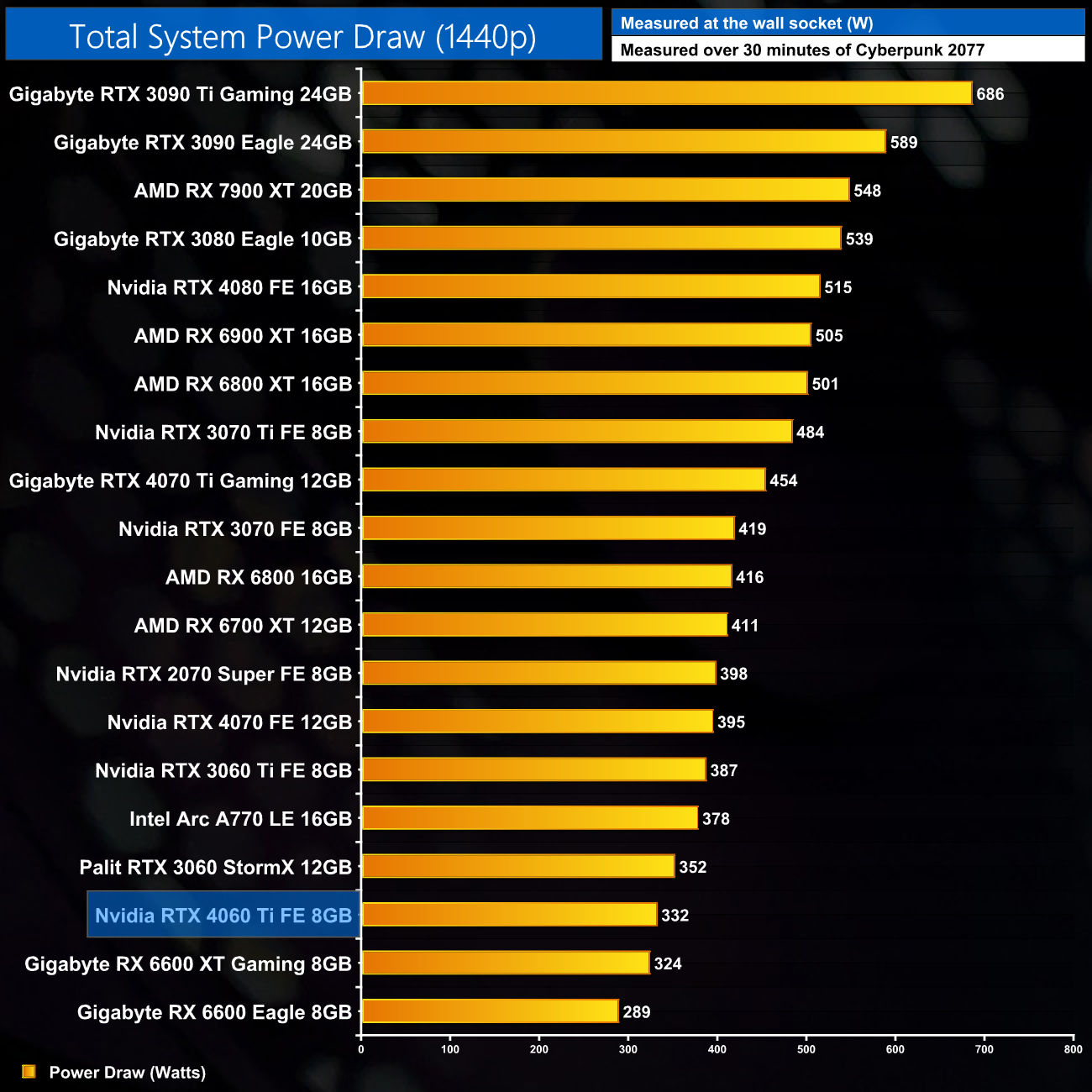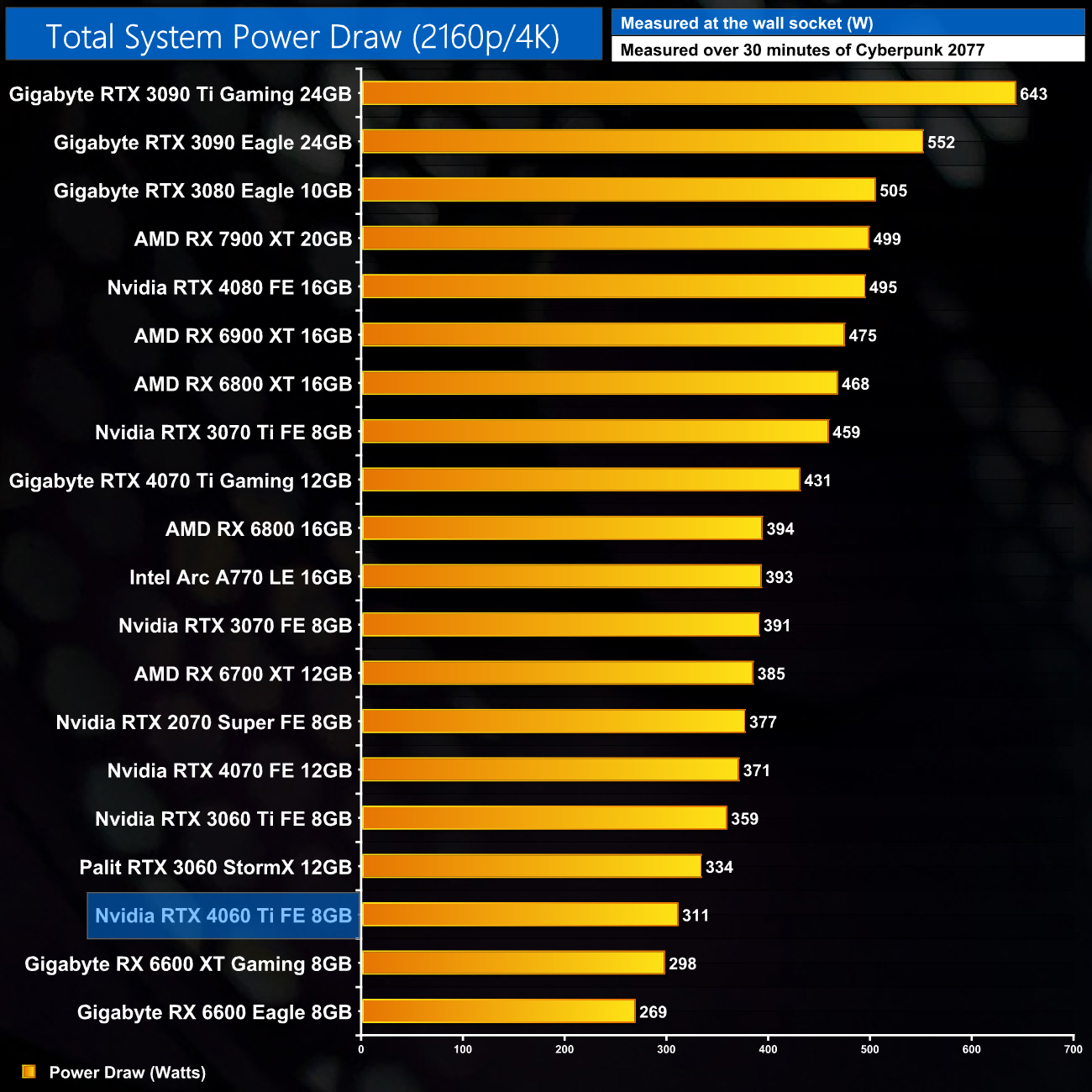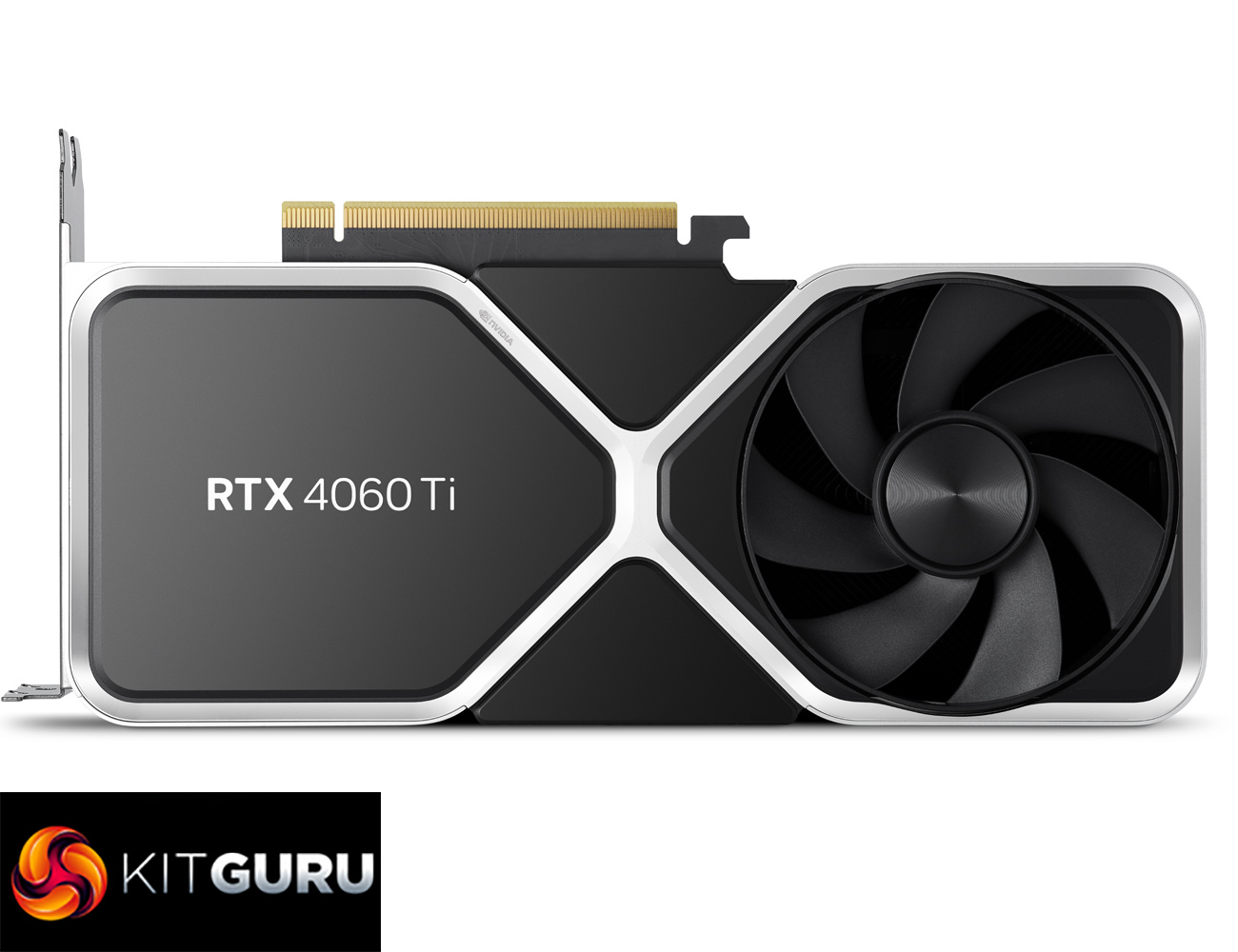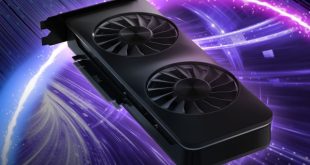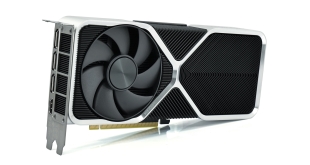
Following on from the release of the RTX 4070 last month, Nvidia has since announced three new SKUs in the 4060 family, and today we are putting the RTX 4060 Ti 8GB through its paces. Built on AD106 silicon, this new GPU promises extraordinary efficiency, but question marks loom over the 8GB frame buffer. A 16GB model is coming in July, but for now, what can the £389 RTX 4060 Ti 8GB bring to the party?
Coming in as a direct replacement for the venerable RTX 3060 Ti, Nvidia's RTX 4060 Ti is hitting the market at £389, with a 16GB model arriving in July with a £90 price premium over the 8GB model we are reviewing here.
Marking the first appearance of AD106 silicon in the desktop space, Nvidia is positioning this card as a ‘1080p performance champ'. Let's find out if it can deliver on that promise. If you want to read this review as a single page, click HERE.
| RTX 4090 | RTX 4080 | RTX 4070 Ti | RTX 4070 | RTX 4060 Ti | RTX 3060 Ti | |
| Process | TSMC N4 | TSMC N4 | TSMC N4 | TSMC N4 | TSMC N4 | Samsung 8N |
| SMs | 128 | 76 | 60 | 46 | 34 | 38 |
| CUDA Cores | 16384 | 9728 | 7680 | 5888 | 4352 | 4864 |
| Tensor Cores | 512 | 304 | 240 | 184 | 136 | 152 |
| RT Cores | 128 | 76 | 60 | 46 | 34 | 38 |
| Texture Units | 512 | 304 | 240 | 184 | 136 | 152 |
| ROPs | 176 | 112 | 80 | 64 | 48 | 80 |
| GPU Boost Clock | 2520 MHz | 2505 MHz | 2610 MHz | 2475 MHz | 2535 MHz | 1665 MHz |
| Memory Data Rate | 21 Gbps | 22.4 Gbps | 21 Gbps | 21 Gbps | 18 Gbps | 14 Gbps |
| L2 Cache | 73729 KB | 65536 KB | 49152 KB | 36864 KB | 32768 KB | 4096 KB |
| Total Video Memory | 24GB GDDR6X | 16GB GDDR6X | 12GB GDDR6X | 12GB GDDR6X | 8GB GDDR6 | 8GB GDDR6 |
| Memory Interface | 384-bit | 256-bit | 192-bit | 192-bit | 128-bit | 256-bit |
| Memory Bandwidth | 1008 GB/Sec | 716.8 GB/Sec | 504 GB/Sec | 504 GB/Sec | 288 GB/Sec | 448 GB/Sec |
| TGP | 450W | 320W | 285W | 200W | 160W | 200W |
First, for a quick spec recap. The RTX 4060 Ti marks the first appearance of the AD106 silicon in the desktop space, a tiny die measuring just 190mm2. The fundamental building blocks are still the same of course, with the RTX 4060 Ti offering a total of 34 Streaming Multiprocessors (SMs), each housing 256 CUDA Cores, for a total of 4352. We also find 34 RT cores, 136 Tensor cores, 136 Texture Units, and 48 ROPs.
TSMC's N4 node has Nvidia cranking up the clock speed significantly this generation, with the RTX 4060 Ti sporting a 2535MHz rated boost clock. That's the highest clock speed on a desktop Ada GPU so far, and we would expect GPU Boost to push things further still.
The memory configuration is another area where AD106 has been cut-back significantly. The memory interface has been reduced to 128-bit, and even with 8GB GDDR6 running at 18Gbps, that brings total memory bandwidth down to 288 GB/s, lower than even the RTX 3060. That said, there has been a substantial upgrade to the L2 cache with the Ada architecture, with the RTX 4060 Ti now offering 32MB, compared to just 4MB for GA104.
It's also worth noting that the PCIe bus has also been reduced, with the 4060 Ti offering a Gen4 x8 interface, as opposed to Gen4 x16 connectors on the rest of the 40-series.
Considering these cut-backs, power draw is naturally lower than the RTX 4070, with the 4060 Ti boasting a 160W TGP. This is something we focus on closely, using our updated GPU power testing methodology in this review, so read on for our most detailed power and efficiency testing yet.
The Nvidia RTX 4060 Ti ships in the same box as the rest of the 40-series Founders Edition models. The box opens up to reveal the card sitting in the middle of the cardboard surround.
Inside, we find a few support guides and pieces of documentation, along with a single 8-pin to 16-pin 12VHPWR adapter.
The overall design of the Founders Edition itself is almost identical to that of the RTX 4070. The actual cooler layout and build is identical, just the 4060 Ti is now fitted with a silver shroud, compared to the more gunmetal grey offering on the 4070.
That means we find the same dual fan approach, operating in a push-pull configuration. These measure 90mm each and are still ‘counter rotating', so the fan on the underside of the card spins anti-clockwise, while the fan on the top spins clockwise.
The RTX 4060 Ti remains nice and compact, too – it certainly doesn't need to be any bigger than the 4070 considering it is cooling a lower-power chip. Its official dimensions come in at 242mm x 112mm, with a standard dual-slot thickness.
The side of the card is fairly plain, with the new silver metal frame on show, along with some aluminium heatsink fins. The GeForce RTX branding is also present here towards the end of the card.
The backplate retains the same x-shaped design we are now very familiar with, with the RTX 4060 Ti branding visible on the left-hand side. The top-side 90mm fan takes up almost the entirety of the right-hand side.
Nvidia continues to use the 12VHPWR connector on its Founders Edition models, though just like the RTX 4070, AIBs have the option to use a single 8-pin instead if they wish. Display outputs consist of 3x DisplayPort 1.4 and 1x HDMI 2.1.
Driver Notes
- All AMD GPUs were benchmarked with the Adrenalin 23.3.2 driver.
- All Nvidia GPUs (except RTX 4070) were benchmarked with the 531.41 driver.
- All Intel GPUs were benchmarked with the 101.4314 driver.
- RTX 4070 was benchmarked with the 531.42 driver supplied to press.
- RTX 4060 Ti was benchmarked with the 531.93 driver supplied to press.
Test System:
We test using a custom built system from PCSpecialist, based on Intel’s Rocket Lake platform. You can read more about this system HERE and configure your own PCSpecialist system HERE.
| CPU |
Intel Core i9-13900KS
|
| Motherboard |
Gigabyte Z790 Gaming X AX
|
| Memory |
32GB (2x16GB) Corsair Dominator Platinum RGB DDR5 6000MHz
|
| Graphics Card |
Varies
|
| SSD |
4TB Seagate Firecuda 530 Gen 4 PCIe NVMe
|
| Chassis | Corsair 5000D Airflow Tempered Glass Gaming Case |
| CPU Cooler |
Corsair iCUE H150i Elite RGB High Performance CPU Cooler
|
| Power Supply |
Corsair 1600W Pro Series Titanium AX1600i Digital Modular PSU
|
| Operating System |
Windows 11 22H2
|
| Monitor |
MSI Optix MPG321UR-QD
|
| Resizable BAR |
Enabled for all supported GPUs
|
Comparison Graphics Cards List
- AMD RX 7900 XT 20GB
- AMD RX 6900 XT 16GB
- AMD RX 6800 XT 16GB
- AMD RX 6800 16GB
- AMD RX 6700 XT 12GB
- Gigabyte RX 6600 XT Gaming 8GB
- Gigabyte RX 6600 Eagle 8GB
- Intel Arc A770 LE 16GB
- Gigabyte RTX 4070 Ti Gaming 12GB
- Nvidia RTX 4070 Founders Edition 12GB
- Gigabyte RTX 3090 Ti Gaming 24GB
- Gigabyte RTX 3090 Eagle 24GB
- Gigabyte RTX 3080 Eagle 10GB
- Nvidia RTX 3070 Ti FE 8GB
- Nvidia RTX 3070 FE 8GB
- Nvidia RTX 3060 Ti FE 8GB
- Palit RTX 3060 StormX 12GB
- Nvidia RTX 2070 Super FE 8GB
All cards were tested at reference specifications.
Software and Games List
- 3DMark Fire Strike & Fire Strike Ultra (DX11 Synthetic)
- 3DMark Time Spy (DX12 Synthetic)
- 3DMark DirectX Raytracing feature test (DXR Synthetic)
- Assassin's Creed Valhalla (DX12)
- Control (DXR)
- Cyberpunk 2077 (DX12)
- Days Gone (DX11)
- Dying Light 2 (DX11)
- F1 22 (DXR)
- God of War (DX11)
- Hitman 3 (DXR)
- Horizon Zero Dawn (DX12)
- Marvel's Spider-Man Remastered (DX12)
- Metro Exodus Enhanced Edition (DXR)
- A Plague Tale: Requiem (DX12)
- Red Dead Redemption 2 (DX12)
- Resident Evil Village (DX12)
- Total War: Warhammer III (DX11)
- Uncharted 4: A Thief's End (DX12)
We run each benchmark/game three times, and present mean averages in our graphs. We use FrameView to measure average frame rates as well as 1% low values across our three runs.
Fire Strike is a showcase DirectX 11 benchmark for modern gaming PCs. Its ambitious real-time graphics are rendered with detail and complexity far beyond other DirectX 11 benchmarks and games. Fire Strike includes two graphics tests, a physics test and a combined test that stresses the CPU and GPU. (UL).
3DMark Time Spy is a DirectX 12 benchmark test for Windows 10 gaming PCs. Time Spy is one of the first DirectX 12 apps to be built the right way from the ground up to fully realize the performance gains that the new API offers. With its pure DirectX 12 engine, which supports new API features like asynchronous compute, explicit multi-adapter, and multi-threading, Time Spy is the ideal test for benchmarking the latest graphics cards. (UL).
3DMark gives us an early look at performance for the RTX 4060 Ti. It offers 12% better performance than the RTX 3060 Ti in Fire Strike, and that stretches to 14% for the DX12 Time Spy test. It's very closely matched by AMD's RX 6700 XT all the way.
Real-time ray tracing is incredibly demanding. The latest graphics cards have dedicated hardware that’s optimized for ray-tracing. The 3DMark DirectX Raytracing feature test measures the performance of this dedicated hardware. Instead of using traditional rendering techniques, the whole scene is ray-traced and drawn in one pass. The result of the test depends entirely on ray-tracing performance. (UL).
3DMark's DXR feature test is all about ray tracing performance, ignoring all else – here the 4060 Ti offers a much larger uplift versus the 3060 Ti, to the tune of 39%. It's even a touch faster than AMD's previous flagship, the RX 6900 XT.
Assassin's Creed Valhalla is an action role-playing video game developed by Ubisoft Montreal and published by Ubisoft. It is the twelfth major instalment and the twenty-second release in the Assassin's Creed series, and a successor to the 2018's Assassin's Creed Odyssey. The game was released on November 10, 2020, for Microsoft Windows, PlayStation 4, Xbox One, Xbox Series X and Series S, and Stadia, while the PlayStation 5 version was released on November 12. (Wikipedia).
Engine: AnvilNext 2.0. We test using the Ultra High preset, DX12 API.
Kicking off our game benchmarks with Assassin's Creed Valhalla, at 1080p the RTX 4060 Ti delivers 100FPS on average, putting it dead level with the RTX 3070 Ti and the RX 6700 XT. It's also 12% faster than the 3060 Ti, and within 1% of the RTX 3070.
At 1440p, the 4060 Ti is still very closely matched against both the RTX 3070 and 3070 Ti, delivering around 80FPS on average. It's now about 5% faster than the RX 6700 XT though, and 11% ahead of its predecessor, the 3060 Ti.
Cyberpunk 2077 is a 2020 action role-playing video game developed and published by CD Projekt. The story takes place in Night City, an open world set in the Cyberpunk universe. Players assume the first-person perspective of a customisable mercenary known as V, who can acquire skills in hacking and machinery with options for melee and ranged combat. Cyberpunk 2077 was released for Microsoft Windows, PlayStation 4, Stadia, and Xbox One on 10 December 2020. (Wikipedia).
Engine: REDengine 4. We test using the Ultra preset, FSR disabled, DX12 API.
With an average of 91FPS in Cyberpunk 2077, the RTX 4060 Ti is once again very closely matched against the RTX 3070, being just 3% slower. That means it's 11% faster than the RTX 3060 Ti, and 8% ahead of the 6700 XT.
Stepping up to 1440p sees some pretty underwhelming performance however, as the 4060 Ti drops off relative to the competition – it's now just 7% faster than the 3060 Ti, when it was 11% faster at 1080p, while it also comes within 3% of the RX 6700 XT.
Days Gone is a 2019 action-adventure survival horror video game developed by Bend Studio and published by Sony Interactive Entertainment for the PlayStation 4 and Microsoft Windows. As part of Sony's efforts to bring more of its first-party content to Microsoft Windows following Horizon Zero Dawn, Days Gone released on Windows on May 18, 2021. (Wikipedia).
Engine: Unreal Engine 4. We test using the Very High preset, DX11 API.
Days Gone sees similar gains for the 4060 Ti over the 3060 Ti at 1080p, with the Ada GPU 10% faster on average, delivering 138FPS. Nvidia GPUs do better in this DX11 title than their AMD counterparts, resulting in a 14% victory for the 4060 Ti versus the 6700 XT.
Up at 1440p however, the 4060 Ti does drop off again, and it's now barely 4% faster than the RTX 3060 Ti. In other words, I don't think you'd actually be able to tell the difference between these two GPUs while gaming.
In fact, at 4K, the RTX 4060 Ti is actually slower than the RTX 3060 Ti. Admittedly not by much, and this GPU certainly isn't designed around 4K gaming – but even so, the frame rate is very playable here at around 50FPS, yet the previous generation product is superior, no doubt thanks to its higher memory bandwidth. It's quite damning for the 4060 Ti.
Dying Light 2: Stay Human is a 2022 action role-playing game developed and published by Techland. The sequel to Dying Light (2015), the game was released on February 4, 2022 for Microsoft Windows, PlayStation 4, PlayStation 5, Xbox One, and Xbox Series X/S. (Wikipedia).
Engine: C-Engine. We test using the High preset, DX11 API.
Dying Light 2 does see a slightly larger generational uplift for the 4060 Ti versus the 3060 Ti, with a 15% margin between the two cards at 1080p. The 4060 Ti is also coming in 7% faster than the RX 6700 XT.
Once more at 1440p however, its lead is cut almost in half, as it's now 9% faster than the 3060 Ti, but with just a 1% difference between itself and the RX 6700 XT.
God of War is an action-adventure game developed by Santa Monica Studio and published by Sony Interactive Entertainment (SIE). It was released worldwide on April 20, 2018, for the PlayStation 4 with a Microsoft Windows version released on January 14, 2022. (Wikipedia).
Engine: Sony Santa Monica in-house engine. We test using the Ultra preset, DX11 API.
Next up is God of War, and here the results are pretty shocking it has to be said. The RTX 4060 Ti is literally identical to the RTX 3060 Ti here, with simply no uplift on show. The RTX 4060 Ti is really shaping up incredibly poorly so far.
At 1440p the gap widens, but only very slightly, with the 4060 Ti just 2% faster than the RTX 3060 Ti. That's a difference of less than 2FPS, clearly great progress since the last generation. Not.
Horizon Zero Dawn is an action role-playing game developed by Guerrilla Games and published by Sony Interactive Entertainment. The plot follows Aloy, a hunter in a world overrun by machines, who sets out to uncover her past. It was released for the PlayStation 4 in 2017 and Microsoft Windows in 2020. (Wikipedia).
Engine: Decima. We test using the Ultimate Quality preset, DX12 API.
The disappointment continues with Horizon Zero Dawn, where the RTX 3060 Ti is good for 131FPS. That's just an 8% uplift against the 3060 Ti though, while it's level pegging with AMD's RX 6700 XT.
As we step up to 1440p, things get even worse for the Ada GPU, with its lead cut to just 2% over the 3060 Ti. That makes it 11% slower than the RTX 3070.
Just like Days Gone, it falls off further at 4K and is once more slower than the RTX 3060 Ti. I'm not saying this is a card built for 4K gaming, but it certainly shouldn't be worse than the previous generation's offering at any resolution.
Marvel's Spider-Man Remastered is a 2018 action-adventure game developed by Insomniac Games and published by Sony Interactive Entertainment. A remastered version of Marvel's Spider-Man, featuring all previously released downloadable content, was released for the PlayStation 5 in November 2020 and for Microsoft Windows in August 2022. (Wikipedia).
Engine: Insomniac Games in-house engine. We test using the Very High preset, DX12 API.
Things are slightly better in Spider-Man Remastered, with the 4060 Ti delivering 111FPS, making it 10% faster than the RTX 3060 Ti. AMD GPUs struggle in this game, and the 4060 Ti pulls out a 28% lead over the RX 6700 XT, and it's even a touch ahead of the RX 6800. It's just a shame it's not faster than the 6800 in more titles.
As for 1440p gaming, it's really more of the same here, with a 12% margin between the two xx60 Ti GPUs. The 4060 Ti is also coming in 5% slower than the RTX 3070.
A Plague Tale: Requiem is an action-adventure stealth game developed by Asobo Studio and published by Focus Entertainment. It is the sequel to A Plague Tale: Innocence (2019), and follows siblings Amicia and Hugo de Rune who must look for a cure to Hugo's blood disease in Southern France while fleeing from soldiers of the Inquisition and hordes of rats that are spreading the black plague. The game was released for Nintendo Switch, PlayStation 5, Windows, and Xbox Series X/S on 18 October 2022. (Wikipedia).
Engine: Asobo Studio in-house engine. We test using the Ultra preset, DX12 API.
A Plague Tale: Requiem is the most demanding game we test, and at 1080p the 4060 Ti is barely exceeding 60FPS, with an 11% lead over the 3060 Ti. It's also just 3% slower than the RX 6800.
As we step up to 1440p however, instead of being 3% slower than the RX 6800, the 4060 Ti is now 10% slower, delivering 47FPS on average. That puts it 10% ahead of the RTX 3060 Ti, and 6% behind the 3070.
Red Dead Redemption 2 is a 2018 action-adventure game developed and published by Rockstar Games. The game is the third entry in the Red Dead series and is a prequel to the 2010 game Red Dead Redemption. Red Dead Redemption 2 was released for the PlayStation 4 and Xbox One in October 2018, and for Microsoft Windows and Stadia in November 2019. (Wikipedia).
Engine: Rockstar Advance Game Engine (RAGE). We test by manually selecting Ultra settings (or High where Ultra is not available), TAA, DX12 API.
Red Dead Redemption 2 is a best case showing for the RTX 4060 Ti. At 1080p, its average of 66FPS makes it 19% faster than the RTX 3060 Ti, the biggest performance difference between the two we will see in all 12 of our rasterised game benchmarks. It's about a match for the RTX 3070 Ti, as well as the RX 6700 XT.
At 1440p, it's still 17% faster than the 3060 Ti with an average frame rate of 54FPS, but it's dropped off from the 3070 Ti and now sits just 2% ahead of the RTX 3070.
Resident Evil Village is a survival horror game developed and published by Capcom. The sequel to Resident Evil 7: Biohazard (2017), players control Ethan Winters, who is searching for his kidnapped daughter; after a fateful encounter with Chris Redfield, he finds himself in a village filled with mutant creatures. The game was announced at the PlayStation 5 reveal event in June 2020 and was released on May 7, 2021, for Windows, PlayStation 4, PlayStation 5, Xbox One, Xbox Series X/S and Stadia. (Wikipedia).
Engine: RE Engine. We test using the Max preset, with V-Sync disabled, DX12 API.
Resident Evil Village is next, a game where even mid-range GPUs can push very high frame rates at max image quality. The RTX 4060 Ti is good for over 200FPS here, where it's dead level with both the RX 6700 XT and RTX 3070.
At 1440p we still get almost 140FPS on average, with the 4060 Ti holding a 10% lead over its predecessor. It's now 5% slower than the RTX 3070, however.
Total War: Warhammer III is a turn-based strategy and real-time tactics video game developed by Creative Assembly and published by Sega. It is part of the Total War series, and the third to be set in Games Workshop's Warhammer Fantasy fictional universe (following 2016's Total War: Warhammer and 2017's Total War: Warhammer II). The game was announced on February 3, 2021 and was released on February 17, 2022.(Wikipedia).
Engine: TW Engine 3 (Warscape). We test using the Ultra preset, with unlimited video memory enabled, DX11 API.
Performance is identical between the RTX 4060 Ti and RTX 3070 in Total War: Warhammer III, with both GPU delivering 114FPS at 1080p. That puts the 4060 Ti 11% ahead of the 3060 Ti.
That lead shrinks as we step up to 1440p however, where at 73FPS, the Ada GPU is just 5% faster than its predecessor, another very disappointing result.
Uncharted 4: A Thief's End is a 2016 action-adventure game developed by Naughty Dog and published by Sony Computer Entertainment. It is the fourth main entry in the Uncharted series. A remastered version, alongside The Lost Legacy as part of the Uncharted: Legacy of Thieves Collection, was released in January 2022 for PlayStation 5 and October 2022 for Windows. (Wikipedia).
Engine: Naughty Dog in-house engine. We test using the Ultra preset, DX12 API.
Closing out the game benchmarks with Uncharted 4, at 1080p the 4060 Ti delivers 137FPS on average, making it 16% faster than the 3060 Ti. That result almost seems good considering some of the other benchmarks we have seen today!
At 1440p however, that margin shrinks to just a 10% gap, while the 4060 Ti is basically level with AMD's RX 6700 XT.
Here we present frame rate figures for each graphics card, averaged across all 12 games on test today. These figures can disguise significant variations in performance from game to game, but provide a useful overview of the sort of performance you can expect at each resolution tested.
Overall then, at 1080p the RTX 4060 Ti delivers an average performance figure of 112FPS. That makes it a touch slower than the RTX 3070, while it's a mere 6% faster than the RX 6700 XT. Crucially, it's just 11% faster on average than the RTX 3060 Ti it replaces, an incredibly lacklustre generational improvement.
But wait, it gets worse. Almost certainly due to the limited memory bandwidth as a result of the 128-bit interface, the RTX 4060 Ti drops off as we increase the resolution to 1440p. It's now just 8% faster than the RTX 3060 Ti, while it comes in 6% slower than the RTX 3070 – two GPUs which both use 256-bit memory interfaces.
The MSRPs
Using the average frame rate data presented earlier in the review, here we look at the cost per frame using the UK MSRP launch prices for each GPU.
With the £389 MSRP, the RTX 4060 Ti comes in £20 more expensive than its predecessor (+5%). Considering it is just 11% faster on average at 1080p, cost per frame based on the MSRP is better – but only absolutely marginally, with a 5% reduction. That's still enough to take it to the top of the chart, but the actual improvements are minimal.
At 1440p, as the 4060 Ti falls off slightly in terms of performance, so does the improvement in its cost per frame – here it offers just 2% better value than the RTX 3060 Ti using MSRP data. It's not exactly good progress.
Current retail pricing
The picture changes when looking at cost per frame based on current retail pricing. Here the RTX 4060 Ti is knocked off the top of the chart by a few AMD GPUs – including the RX 6700 XT, which at £360, offers better value today as well as an extra 4GB VRAM, which will only get more beneficial for gaming as time goes on.
At 1440p, even the RTX 3060 Ti becomes better value, as we found it on sale for £359 – just a £10 price cut to its MSRP, but that's enough to make it better value than its successor, which pretty much sums up the situation here.
Control is an action-adventure game developed by Remedy Entertainment and published by 505 Games. The game was released in August 2019 for PlayStation 4, Windows, and Xbox One, and for PlayStation 5 and Xbox Series X/S in February 2021. (Wikipedia).
Engine: Northlight Engine. We test using the High Preset, High Ray Tracing Preset, DXR API. DLSS/FSR are disabled.
Starting our look at ray tracing performance with Control, the RTX 4060 Ti is able to deliver 74FPS at 1080p, with ray tracing cranked as high as it will go. That sounds impressive enough, though the RTX 3060 Ti is just 3FPS behind, and that GPU came out two and a half years ago.
At 1440p, the 4060 Ti is just 2% faster than its predecessor, another shocking result here, though we can at least still see the clear lead Nvidia has over AMD in this title – with the 4060 Ti beat the 6700 XT by over 25% at 1440p.
Cyberpunk 2077 is a 2020 action role-playing video game developed and published by CD Projekt. The story takes place in Night City, an open world set in the Cyberpunk universe. Players assume the first-person perspective of a customisable mercenary known as V, who can acquire skills in hacking and machinery with options for melee and ranged combat. Cyberpunk 2077 was released for Microsoft Windows, PlayStation 4, Stadia, and Xbox One on 10 December 2020. (Wikipedia).
Engine: REDengine 4. We test using the Ray Tracing: Ultra preset. DLSS/FSR are disabled. DXR API.
Cyberpunk 2077 does show more of a gain for the RTX 4060 Ti, but even so, at 1080p it's 15% faster than the 3060 Ti, and dead even with the RTX 3070. Nvidia crushes AMD here however, with the 4060 Ti delivering a huge 75% uplift versus the 6700 XT.
1440p is too much for this class of GPU to handle without using DLSS – something we check out later in this review – the RTX 4060 Ti delivers less than 25FPS on average.
F1 22 is a racing video game developed by Codemasters and published by EA Sports. It is the fifteenth entry in the F1 series by Codemasters. The game holds an official licence of the 2022 Formula One and Formula 2 championships. The game was released for PlayStation 4, PlayStation 5, Windows, Xbox One, and Xbox Series X/S on 1 July 2022. (Wikipedia).
Engine: EGO. We test using the Ultra High preset, Ultra High ray tracing quality, DXR API. DLSS/FSR are disabled.
F1 22 is next, with the RTX 4060 Ti able to deliver 81FPS on average with all ray tracing settings enabled. That's a 10% lead over the RTX 3060 Ti, while it also comes in 19% faster than the RX 6700 XT.
At 1440p we're still getting a very playable 56FPS, with the 4060 Ti now 15% faster than its predecessor. It's also extended its lead to 27% over the RX 6700 XT and is not far off the RX 6800, either.
Hitman 3 is a 2021 stealth game developed and published by IO Interactive. Hitman 3 was released worldwide for PlayStation 4, PlayStation 5, Windows, Xbox One, Xbox Series X/S, Stadia, and Nintendo Switch (via cloud gaming) on 20 January 2021. (Wikipedia).
Engine: Glacier engine. We test using Ultra settings, RT Reflections, RT Shadows, DXR API. DLSS/FSR are disabled.
Hitman 3 is surprisingly heavy with ray tracing engaged, at 1080p the 4060 Ti is only able to deliver 42FPS on average. That gives it just a 9% lead over the 3060 Ti, but a much more significant 51% boost over the RX 6700 XT.
1440p is once again too much for this calibre of GPU to handle without any form of upscaling, with the 4060 Ti offering just 27FPS.
Marvel's Spider-Man Remastered is a 2018 action-adventure game developed by Insomniac Games and published by Sony Interactive Entertainment. A remastered version of Marvel's Spider-Man, featuring all previously released downloadable content, was released for the PlayStation 5 in November 2020 and for Microsoft Windows in August 2022. (Wikipedia).
Engine: Insomniac Games in-house engine. We test using the Very High preset, Very High RT, RT Object Range: 6. DXR API. DLSS/FSR are disabled.
Spider-Man Remastered is very playable with ray tracing enabled, we see an average of just under 80FPS for the 4060 Ti, giving it a 14% lead over its predecessor. It's also 29% faster than the RX 6700 XT, and only 3% slower than the RTX 3070.
1440p is mostly OK too, with an average of 57FPS. However, as you can see the 1% lows start to wobble, dropping lower than the RTX 3070 despite having a higher frame rate – memory and memory bandwidth issues seem to be at play.
Metro Exodus is a first-person shooter video game developed by 4A Games and published by Deep Silver. An enhanced version of the game was released for Windows on 6 May 2021, and later for PlayStation 5 and Xbox Series X/S on 18 June 2021. (Wikipedia).
Engine: 4A Engine. We test using Ultra quality, Ultra ray tracing, ray traced reflections. HairWorks and Advanced PhysX are disabled. DXR API. DLSS/FSR are disabled.
Lastly, Metro Exodus Enhanced Edition sees the 4060 Ti deliver an average frame rate of 96FPS, a 16% advantage over the RTX 3060 Ti. That puts it level with the RX 6800 XT however, a testament to Nvidia's ray tracing prowess.
1440p is also more than doable on the 4060 Ti, it's still 15% faster than the RTX 3060 Ti and only a whisker slower than the RTX 3070.
Ray tracing 6-game average FPS
Overall, at 1080p the RTX 4060 Ti delivers 69FPS on average in our ray traced games – nice. That makes it 11% faster than the RTX 3060 Ti, which is exactly the same margin we saw in our rasterised gaming average. Nvidia holds a clear lead over AMD for ray tracing however, with the 4060 Ti 35% faster than the RX 6700 XT, and even a touch ahead of the RX 6800.
At 1440p, the 4060 Ti is now 14% faster than the 3060 Ti on average, slotting neatly between the RX 6800 and the RTX 3070.
Cost per frame, launch MSRP data
Ray tracing cost per frame, at 1080p, is exactly the same as the cost per frame data showed earlier in this review – the performance margins are identical, resulting in just a 5% improvement in value for 4060 Ti versus its predecessor.
At 1440p things do get slightly better, with the 4060 Ti now offering 8% better value, but it's still hardly a game changer.
Cost per frame, current pricing data
Likewise, for our ray tracing cost per frame based on current retail pricing, the margins are all very similar to what was shown earlier in the review. That means the 4060 Ti is able to sit atop the charts, but only with the slenderest of advantages over previous-gen offerings.
Here we re-test three titles using both DLSS 2 and DLSS 3, to give you an idea of the performance on offer from Nvidia's upscaling technologies.
Cyberpunk is a great example of what can be achieved with DLSS 2 Super Resolution. At 1080p, the 4060 Ti gets a 70% boost to its average frame rate, taking it from 45FPS all the way up to 76FPS, while keeping the 1% lows above 60FPS too.
At 1440p, frame rates actually double using DLSS 2 Quality, up to just under 48FPS. It's not the highest frame rate, but with Ultra ray tracing enabled, it's a decent result.
Of course, we also test DLSS 3, enabling Frame Generation on its own, and in conjunction with DLSS 2 Super resolution. Frame Gen on its own offers almost identical frame rates to DLSS 2 Quality, albeit with higher latency. Enabling both together gets us over the 100FPS mark, with latency just a touch lower than native resolution.
Hitman 3 sees decent gains from DLSS 2 as well. At 1080p the RTX 4060 Ti benefits to the tune of 52%, taking frame rates well over 60FPS – though of course the same can be done for the RTX 3060 Ti, so the actual margin between the two is still minimal.
At 1440p DLSS 2 offered an even bigger performance boost, this time around 66%, which enabled the 4060 Ti to offer a more playable 44FPS. It's only 7% faster than the RTX 3060 Ti however, but let's see what DLSS 3 can bring to the table…
This time around, DLSS 3 Frame Generation is able to offer a higher frame rate than simply using DLSS 2 Quality, though the latency is almost double. The ideal situation would be using DLSS Super Resolution alongside Frame Generation, delivering 100FPS exactly, with latency almost identical to what we see at native resolution.
The gains from DLSS 2 are smaller in Spider-Man, possibly due to this game being more CPU heavy – we're only looking at a 27% uplift at 1080p for the 4060 Ti.
At 1440p, we're looking at a 40% gain instead which is more like it – but again the 1% lows are noticeably choppier than they were at 1080p.
If you do opt to play at 1080p, DLSS 3 Frame Generation gives a much bigger boost to performance than DLSS 2 Quality, offering a 58% boost to frame rates at the cost of 13ms extra latency versus native. With Frame Gen and Super Resolution used in tandem, frame rates nearly double versus native, with latency 6ms higher.
Here we present the average clock speed for each graphics card while running Cyberpunk 2077 for 30 minutes. We use GPU-Z to record the GPU core frequency during gameplay. We calculate the average core frequency during the 30 minute run to present here.
We haven't tested any other RTX 4060 Tis apart from the Founders Edition, so just as a point of reference I have included the RTX 4070 on the above chart – but do note that uses the AD104 GPU, as opposed to AD106 for the 4060 Ti.
Overall clockspeed behaviour is similar however, the 4060 Ti is more voltage limited than power limited, so apart from the first minute of our stress test where it operated at 2760MHz, it held completely locked at 2745MHz for the rest of the 30-minute benchmark.
For our temperature testing, we measure the peak GPU core temperature under load. A reading under load comes from running Cyberpunk 2077 for 30 minutes.
With the RTX 4060 Ti using the same cooler as the RTX 4070, but on a lower-power chip, it's not a surprise to see better thermals from the newer GPU. It peaked at 62.6C, with the hot spot result at 75.5C, making it 2-3C cooler than its bigger brother.
We take our noise measurements with the sound meter positioned 1 foot from the graphics card. I measured the noise floor to be 32 dBA, thus anything above this level can be attributed to the graphics cards. The power supply is passive for the entire power output range we tested all graphics cards in, while all CPU and system fans were disabled. A reading under load comes from running Cyberpunk 2077 for 30 minutes.
Similarly, noise levels are a touch lower for the 4060 Ti as the fans were able to operate at a lower speed than the 4070 – 1440rpm for the 4060 Ti, compared to 1560rpm for the RTX 4070. In other words, both are very quiet cards, but the 4060 Ti is just a smidge easier on the ears.
Here we present power draw figures for the graphics card-only, on a per-game basis for all twelve games we tested at 1080p. This is measured using Nvidia's Power Capture Analysis Tool, also known as PCAT. You can read more about our updated power draw testing methodology HERE.
Per-Game Results at 1080p:
Click to enlarge.
12-Game Average at 1080p:
In terms of power draw, Nvidia rates the RTX 4060 Ti for a 160W TGP, but also claimed just a 140W average gaming power draw. Over the 12 games we tested at 1080p, that's pretty accurate, with our results showing an average of 142.8W. Some games do hit the 160W figure – including Days Gone and A Plague Tale: Requiem – but most are well below that.
Ray tracing results
As a bonus, we now include the power figures for all six games we test with ray tracing enabled.
6-Game ray tracing average:
Power draw does trend slightly higher with ray tracing enabled, but still below the 160W TGP – this time we see an average of 149W.
Here we present power draw figures for the graphics card-only, on a per-game basis for all twelve games we tested at 1440p. This is measured using Nvidia's Power Capture Analysis Tool, also known as PCAT. You can read more about our updated power draw testing methodology HERE.
Per-Game Results at 1440p:
Click to enlarge.
12-Game Average at 1440p:
Stepping up to 1440p sees an average power draw increase of 5W or so compared to 1080p, but we are still comfortably below the 160W TGP.
Ray tracing results
As a bonus, we now include the power figures for all six games we test with ray tracing enabled.
6-Game ray tracing average:
Ray tracing does add on a touch more juice, but only 5W compared to the non-ray traced average. Either way, power draw is very low.
Here we present power draw figures for the graphics card-only, on a per-game basis for all twelve games we tested at 2160p (4K). This is measured using Nvidia's Power Capture Analysis Tool, also known as PCAT. You can read more about our updated power draw testing methodology HERE.
Per-Game Results at 2160p (4K):
Click to enlarge.
12-Game Average at 2160p (4K):
Finally, up at 4K, we see a new average of 152W power draw for the RTX 4060 Ti – even at UHD, it's not reaching the 160W TGP.
Ray tracing results
As a bonus, we now include the power figures for all six games we test with ray tracing enabled.
6-Game ray tracing average:
The ray traced result is actually slightly lower than the raster figure, with Cyberpunk 2077 bringing down the average – the game is just too heavy for the 4060 Ti to cope at 4K with Ultra ray tracing, leading to a performance slow down (just 7FPS avg as shown earlier) and therefore lower power as the GPU stalls.
Using the graphics card-only power draw figures presented earlier in the review, here we present performance per Watt on a per-game basis for all twelve games we tested at 1080p.
Per-Game Results at 1080p:
Click to enlarge.
12-Game Average at 1080p:
What the combination of performance and power draw means for overall efficiency is pretty simple – it's a very efficient GPU, offering identical performance per Watt as the 4070 and 4070 Ti. I've not included the RTX 4080 in this chart but that GPU is still the most efficient Ada product yet, but the 4060 Ti is still up there with the best. It delivers 58% more performance per Watt than the RTX 3060 Ti.
Ray tracing results
As a bonus, we now include the power figures for all six games we test with ray tracing enabled.
6-Game ray tracing average:
Ray tracing efficiency is just a touch behind the two 4070-series SKUs on our chart, but the differences are minor. The uplift versus the 3060 Ti is slightly smaller, at 48%, but it is still a huge step forward.
Using the graphics card-only power draw figures presented earlier in the review, here we present performance per Watt on a per-game basis for all twelve games we tested at 1440p.
Per-Game Results at 1440p:
Click to enlarge.
12-Game Average at 1440p:
As for 1440p, performance per Watt here is marginally behind the other Ada GPUs on the chart, but only very slightly. We're now looking at a 47% improvement to efficiency versus the 3060 Ti (compared to 58% at 1080p).
Ray tracing results
As a bonus, we now include the power figures for all six games we test with ray tracing enabled.
6-Game ray tracing average:
For ray tracing efficiency at 1440p, the 4060 Ti continues to offer big gains over the previous generation, this time with a 50% uplift versus the 3060 Ti.
Using the graphics card-only power draw figures presented earlier in the review, here we present performance per Watt on a per-game basis for all twelve games we tested at 2160p (4K).
Per-Game Results at 2160p (4K):
Click to enlarge.
12-Game Average at 2160p (4K):
Closing out at 4K, this resolution shows the weakest improvement in efficiency for the 4060 Ti, as it offers 40% better performance per Watt than the 3060 Ti, owing to its relatively weaker performance at this resolution.
Ray tracing results
As a bonus, we now include the power figures for all six games we test with ray tracing enabled.
6-Game ray tracing average:
It's another 50% gain for the 4060 Ti over the 3060 Ti at 4K with our ray tracing figures.
We measure system-wide power draw from the wall while running Cyberpunk 2077 for 30 minutes. We do this at 1080p, 1440p and 2160p (4K) to give you a better idea of total system power draw across a range of resolutions, where CPU power is typically higher at the lower resolutions.
Total system power draw is very low, even with an i9-13900KS – we're talking in the region of 350W at 1080p, and slightly lower at the higher resolutions as the CPU load decreases. Nvidia officially recommends a 550W power supply.
Announced just last week, it has been a busy few days putting Nvidia's new RTX 4060 Ti 8GB through its paces. As a reminder, availability of the 8GB model reviewed here is set for May 24th at 2pm BST, with a retail price of £389. A 16GB version is slated for release in July, with prices starting at £479.
To cut right to the chase, I firmly believe this is the weakest RTX 40-series GPU so far, and that all starts with the raw performance. On average, the RTX 4060 Ti delivers just an 11% performance uplift versus the RTX 3060 Ti at 1080p resolution. At 1440p, the margin is even smaller, with the new Ada GPU just 8% faster than its Ampere predecessor. It really is an incredibly weak gen-on-gen uplift, and there were even a few examples today where the RTX 4060 Ti was actually slower than the RTX 3060 Ti, likely due to its limited memory bandwidth.
Of course, the RTX 3060 Ti is still a capable graphics card to this day, and an extra 10% performance means you get high frame rates at 1080p and solid results at 1440p from the 4060 Ti. There's a clear drop off as the resolution increases however, with the narrow 128-bit memory interface causing a slow down that even 32MB of L2 cache can't alleviate. This is surely the reason Nvidia has focused all of its marketing efforts on positioning the 4060 Ti as a ‘1080p card' – despite heralding the RTX 3060 Ti as ‘a tremendous purchase for gamers seeking blistering 1080p and 1440p max setting performance.‘ (Emphasis my own).
Considering the meagre performance uplift, Nvidia is clearly banking on DLSS 3 to try and sell the RTX 4060 Ti to prospective buyers. I'll freely admit DLSS 3 is a feature I like and often use during my own personal gaming sessions. It cannot be the main, dare I say sole, reason to upgrade to a 4060 Ti. This is partly due to the fact that, as of May 18th, DLSS 3 is supported in just 34 games. PCGamesN reported in December 2022 that Steam is now home to over 50,000 titles – so if you're playing one of the 99.97% of games that don't support the technology, you're stuck with just ~10% gains over the RTX 3060 Ti,
Arguably more importantly, unlike DLSS 2 which is almost universally beneficial, there will always be some gamers who would never enable DLSS 3 due to its latency implications. That's another big problem when you consider the majority of Steam's most played games are competitive multiplayer titles, severely diminishing the allure of DLSS 3 if you primarily play that sort of game.
Just stopping to think on what this GPU is capable of gives me a tinge of regret. It's genuinely a technical marvel that Nvidia has been able to take the AD106 GPU, a die that's less than half the size of GA104, and yet it outperforms it while offering vastly improved efficiency. This could have been a fantastic entry-level GPU, as befitting its die size, but at £389, AD106 is in a different class entirely.
At that price point, we may as well come out and say it – 8GB VRAM simply does not cut it anymore. We covered this topic extensively in our video review, but for this class of product, such a meagre frame buffer is an absolute dealbreaker in 2023. That's not to say 8GB VRAM is useless or won't run new titles, but the way the industry is going, 8GB GPUs really need to be considered entry-level in my opinion, RTX 3050-type products which target 1080p gaming at Medium or High settings. Not something that's almost £400 and in this performance tier.
I also think it's important to distinguish between game benchmarks and the actual experience of playing a brand new title on day 1. Many reviewers, myself included, test more mature games that have finished their update cycle – this provides us with the stability we need when trying to benchmark dozens of GPUs, while also mitigating the potential of having to restart our testing due to a new patch that significantly changes our results. From that perspective, plenty of 8GB cards could still be considered viable, at least for 1080p max settings as indicated by the bulk of our benchmarks today.
The real problem for 8GB cards has been well and truly exposed this year when trying to play a number of new titles on launch day. The Last of Us Part 1, Forspoken, Callisto Protocol, Hogwarts Legacy, Resident Evil 4 Remake… the list goes on. Poorly optimised ports or not, the fact remains there is a growing number of games where 8GB GPUs simply had a very rough time of things when trying to play at launch, and if this is happening now – what will things be like one, two, three years down the line?
Unfortunately, I think this is a very straightforward review to conclude – I can't in good faith recommend the Nvidia RTX 4060 Ti 8GB at its current asking price of £389. It's barely an improvement over its predecessor in terms of raw performance, its narrower memory interface reduces performance at higher resolutions, and 8GB of VRAM is simply not enough. The RTX 4060 Ti needs a hefty price cut to have any chance of viability considering its limitations.
The RTX 4060 Ti has an MSRP of £389 and will be available from tomorrow, May 24th.
Discuss on our Facebook page HERE.
Pros
- While a very weak upgrade versus the RTX 3060 Ti, shader performance is still decent.
- Very efficient.
- Founders Edition cooler is as good as ever.
- DLSS 3 is a useful feature in the games that support it.
Cons
- 8GB VRAM is a dealbreaker for this class of GPU.
- Incredibly disappointing performance improvement versus the previous generation.
- No real improvement in cost per frame versus 30-series.
- 128-bit memory interface limits performance above 1080p.
- PCIe Gen4 x8, not x16 interface.
KitGuru says: Many will – rightly – focus on the insufficient frame buffer, but the RTX 4060 Ti is disappointing across the board.
Be sure to check out our sponsors store EKWB here
 KitGuru KitGuru.net – Tech News | Hardware News | Hardware Reviews | IOS | Mobile | Gaming | Graphics Cards
KitGuru KitGuru.net – Tech News | Hardware News | Hardware Reviews | IOS | Mobile | Gaming | Graphics Cards


